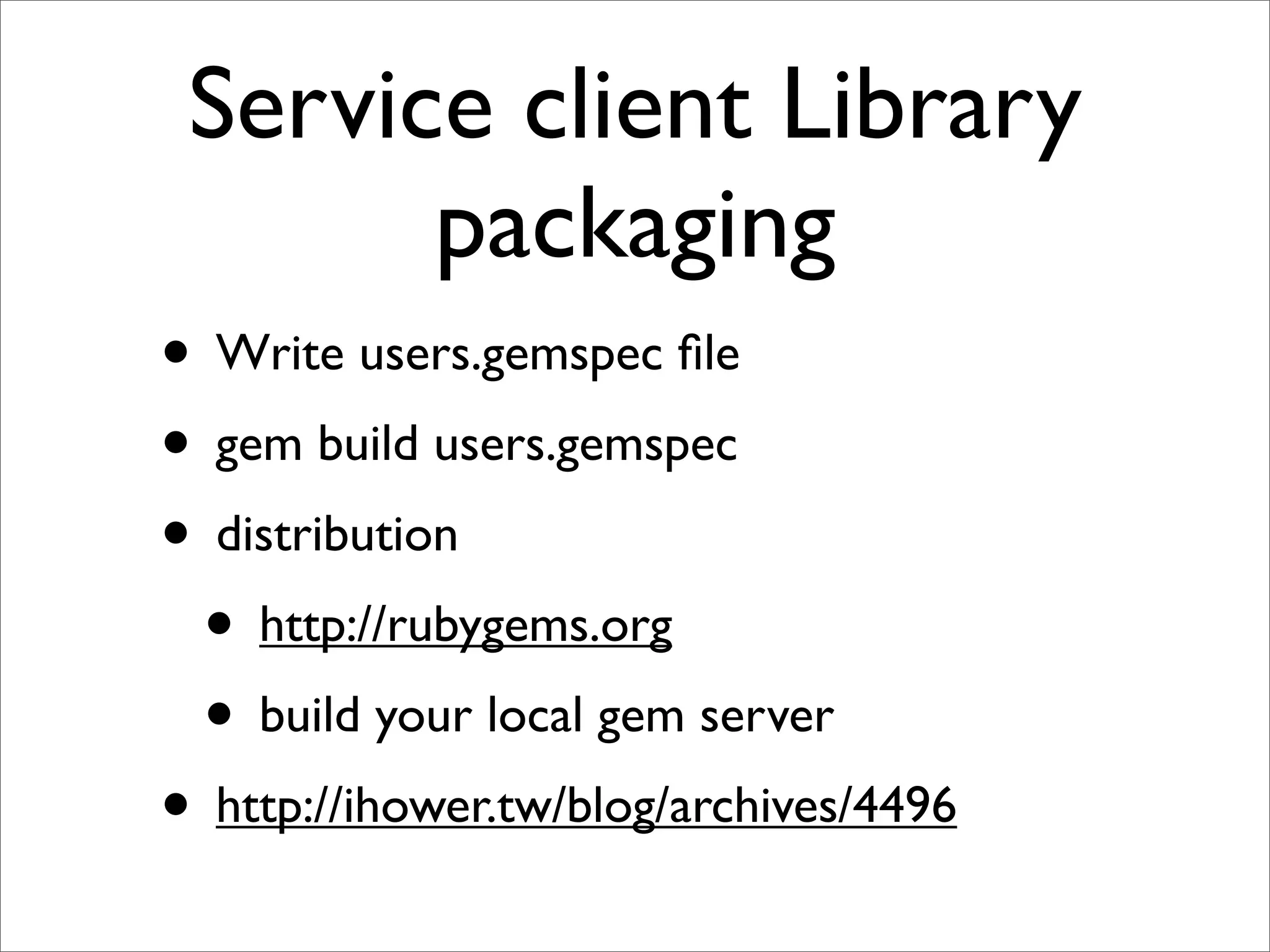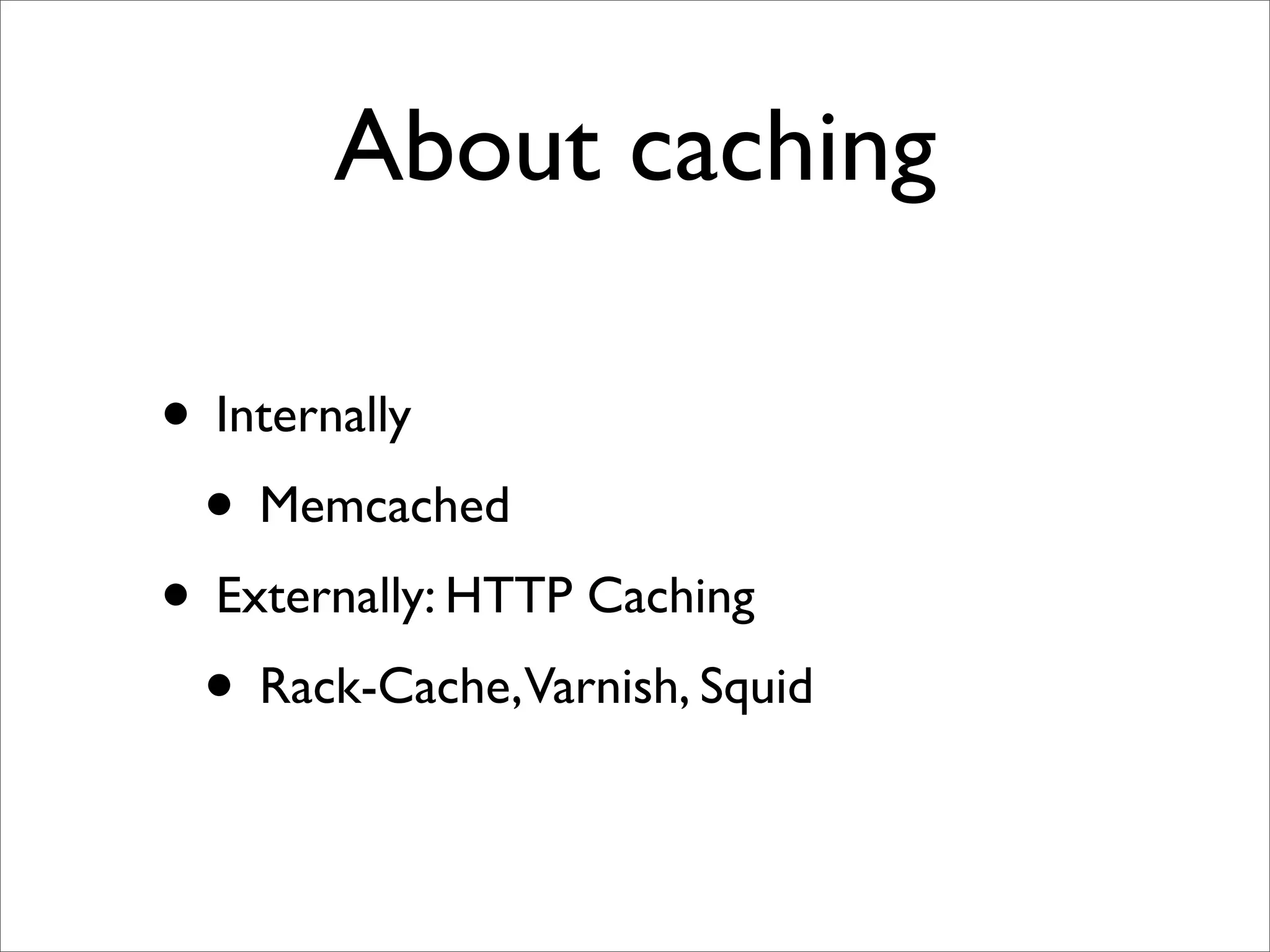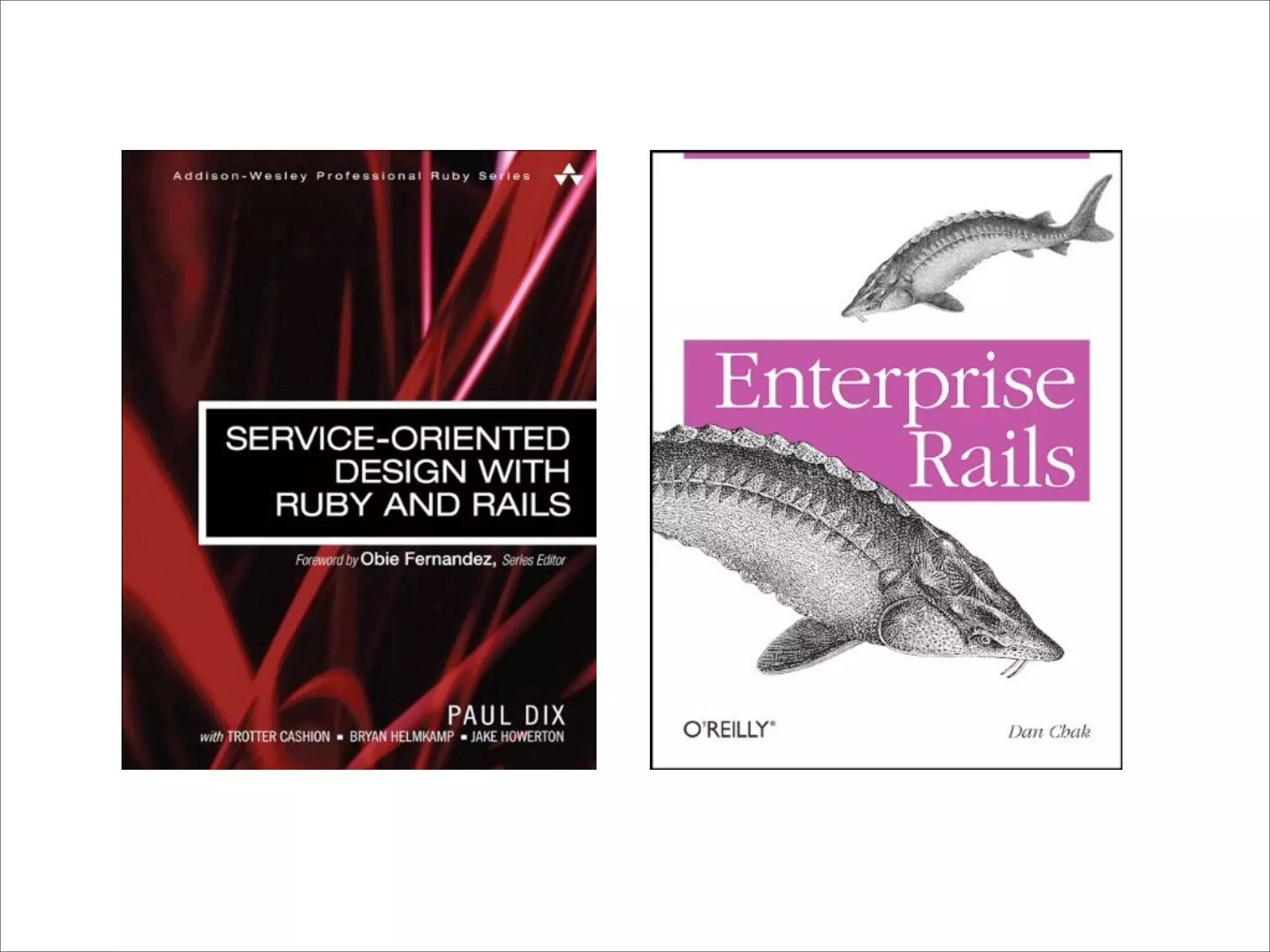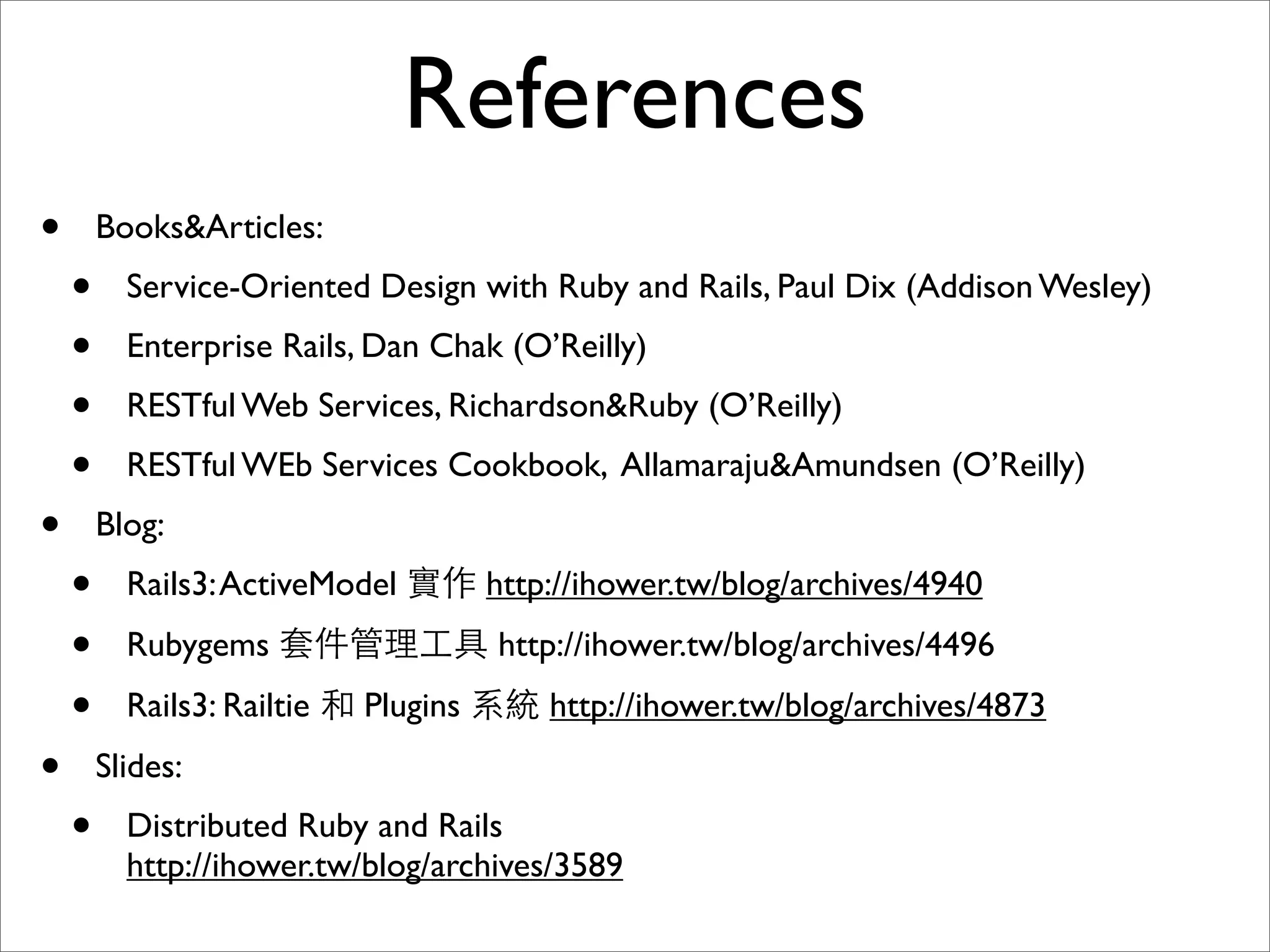The service implements a RESTful Users web service with Rails 3. It customizes Rails to remove unnecessary components and optimize for a lightweight REST service. The service follows best practices for API design including using JSON format, placing JSON conversion in the controller, and returning appropriate HTTP status codes. Requests are designed to be stateless and atomic. Errors are returned in a standardized JSON format.


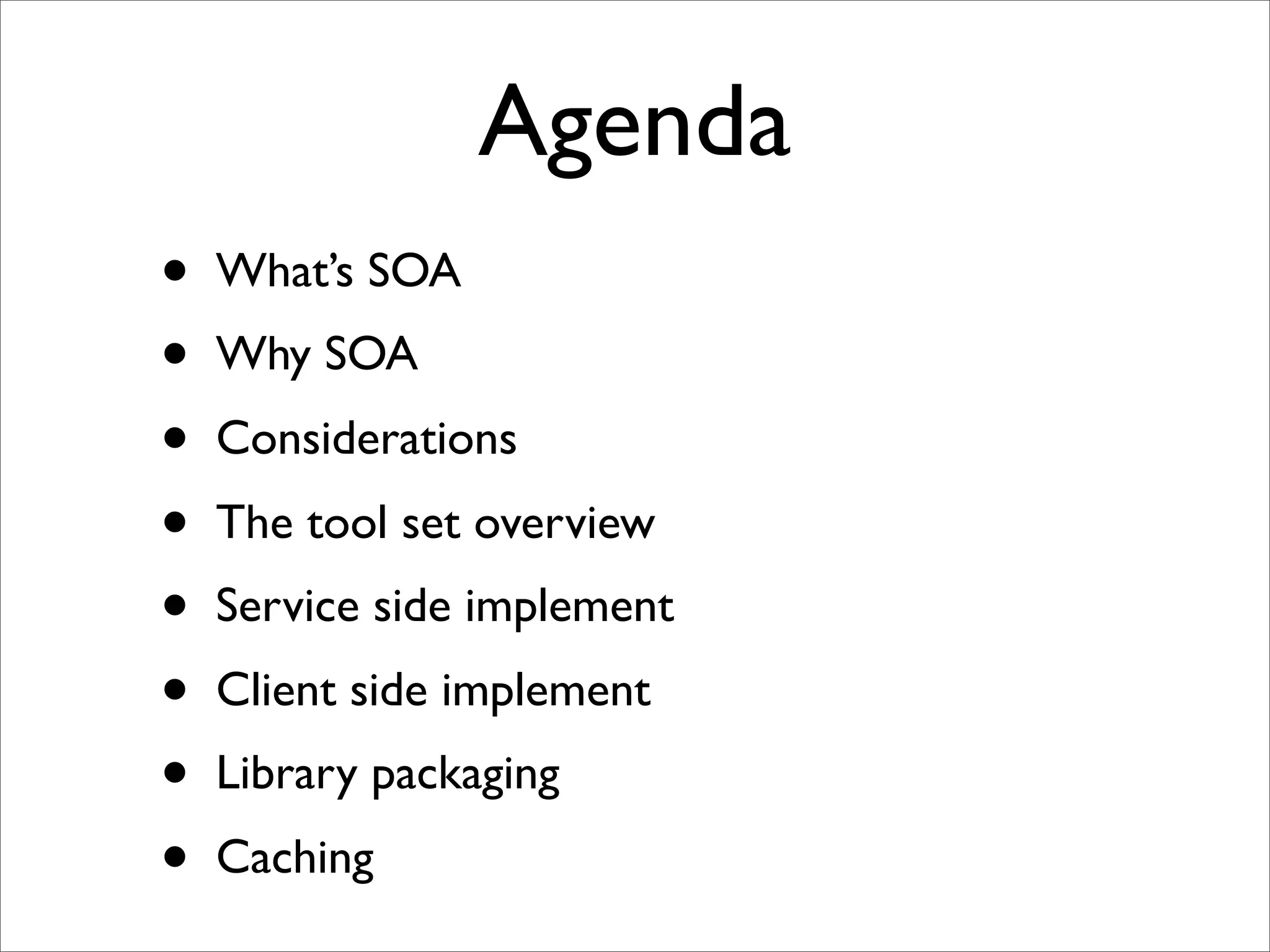

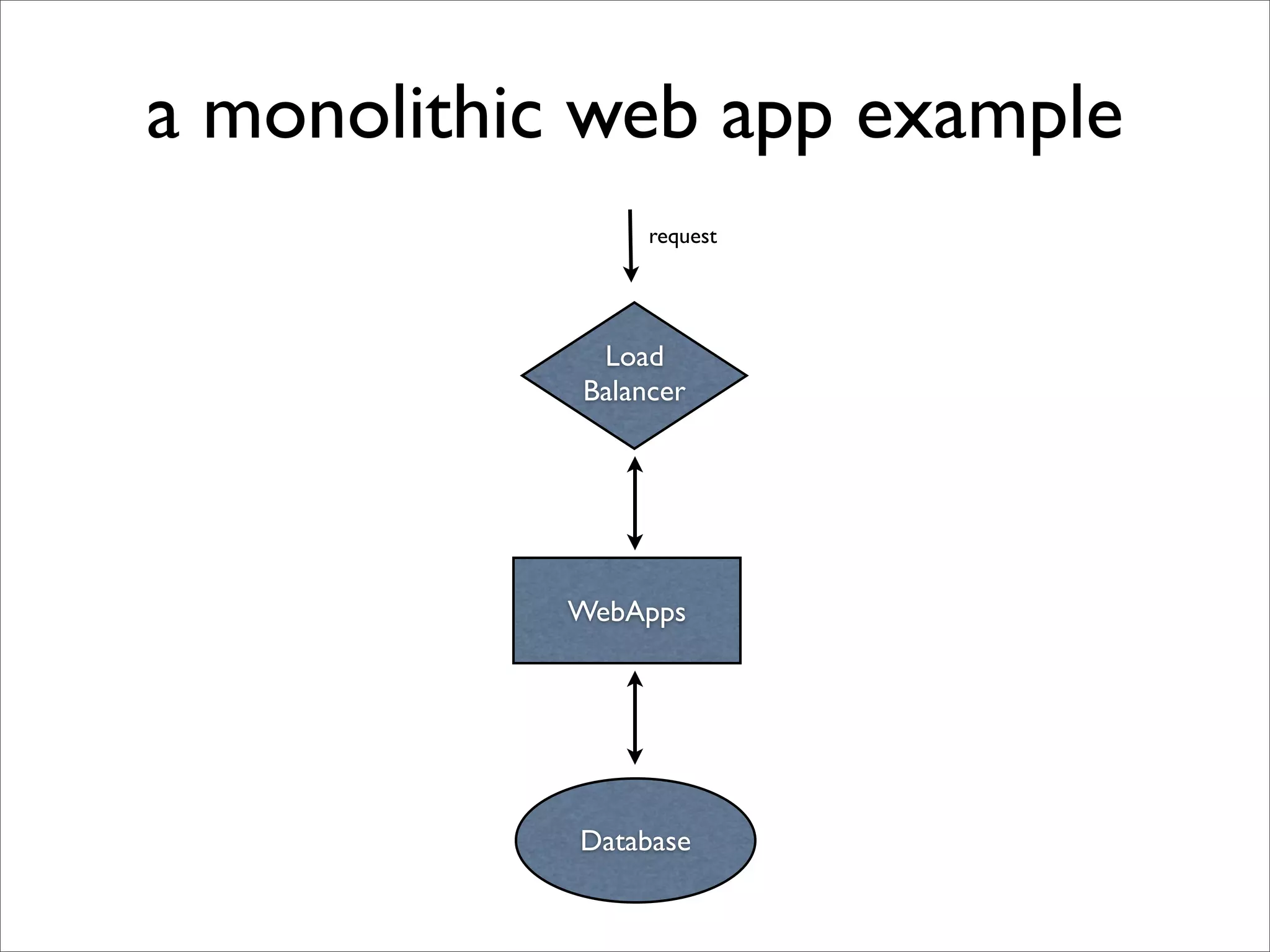
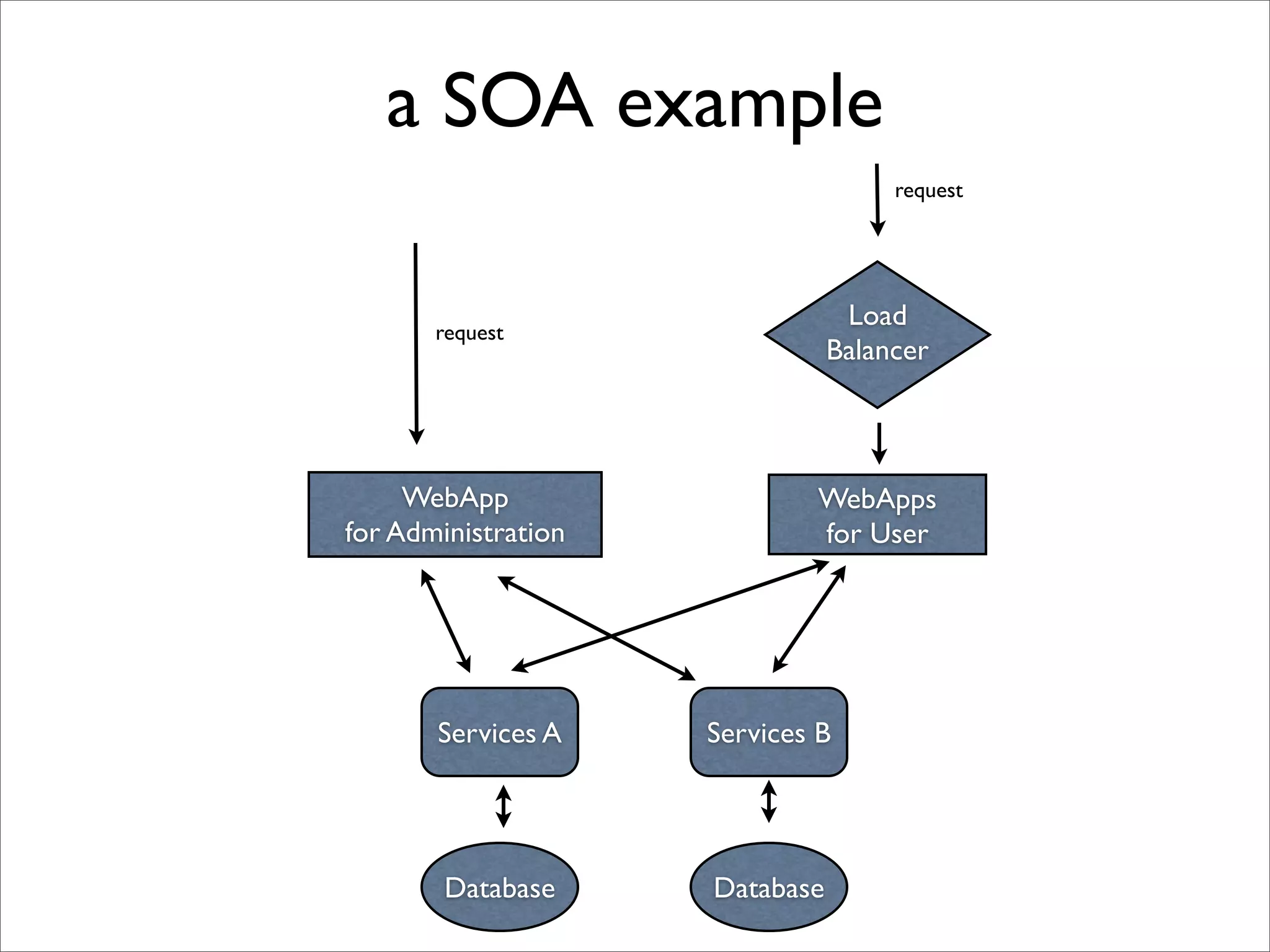
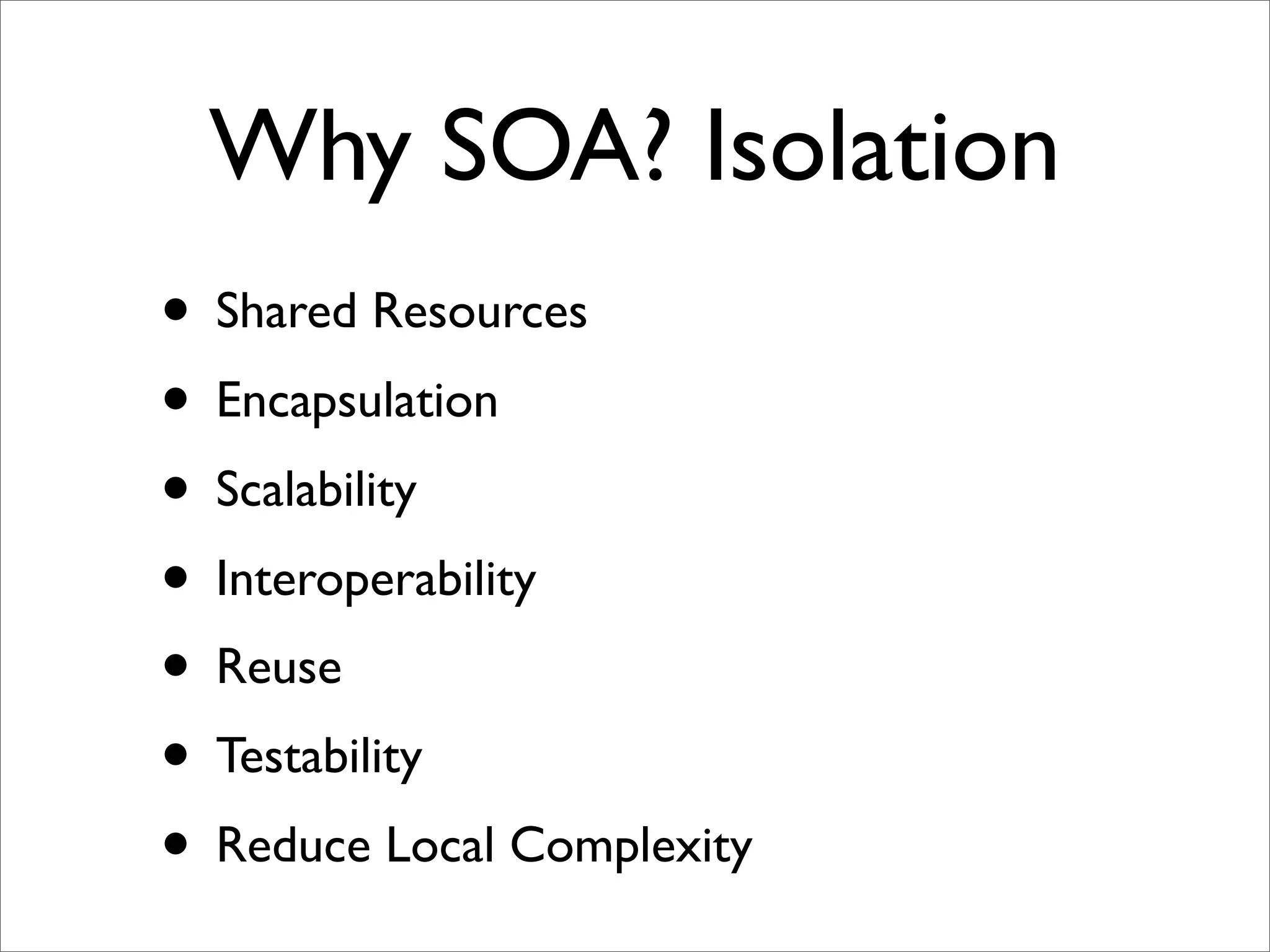
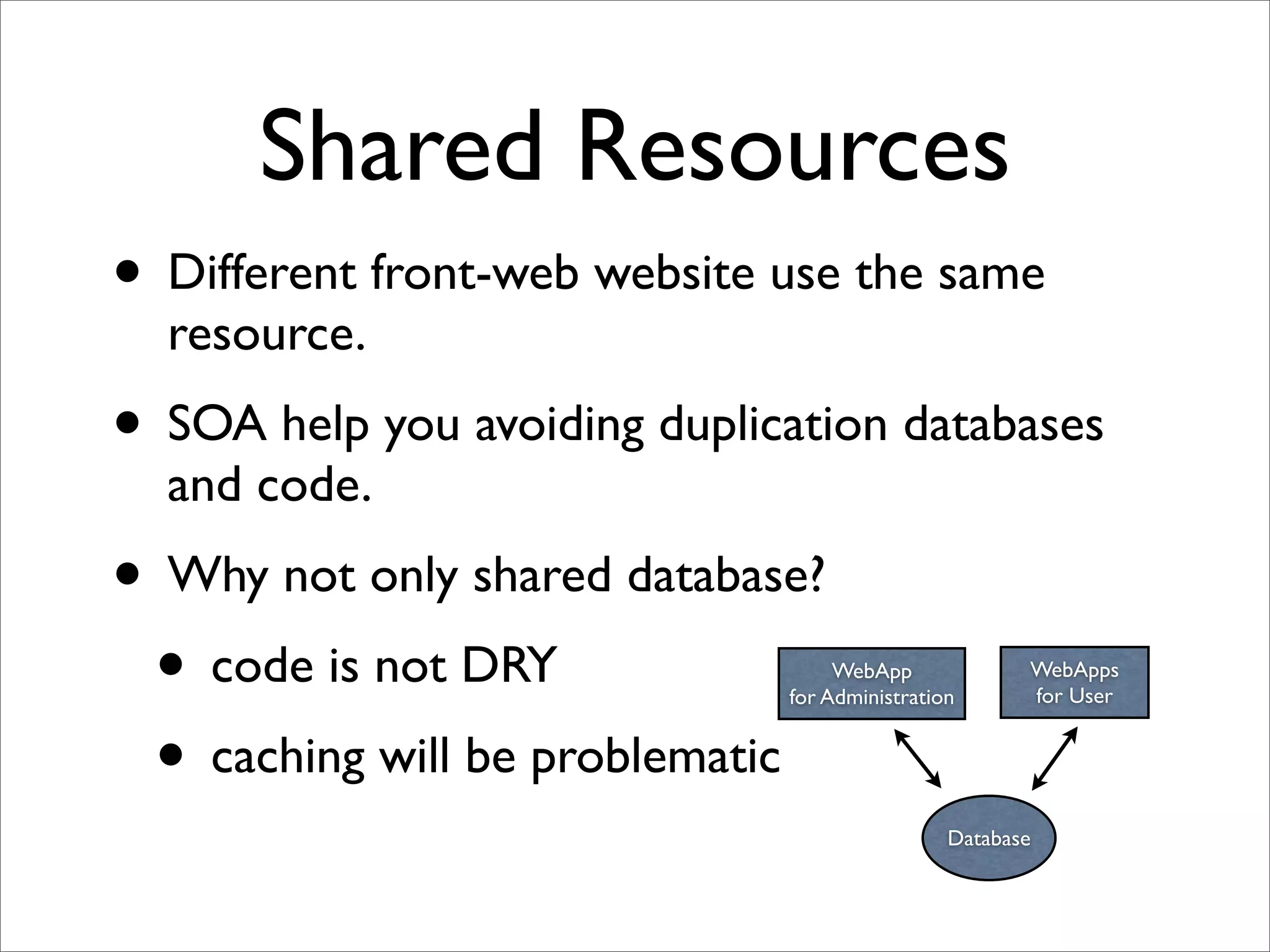
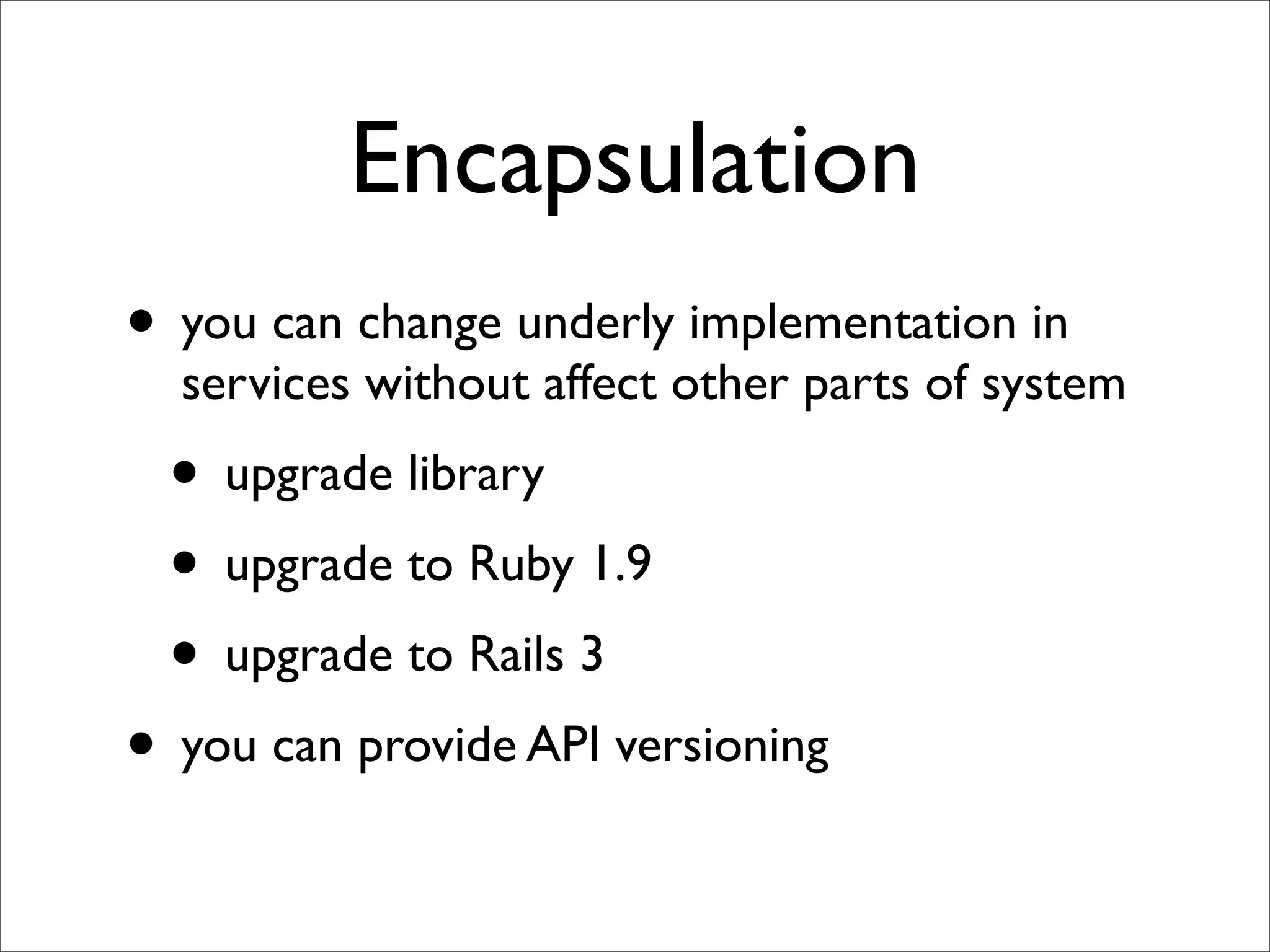
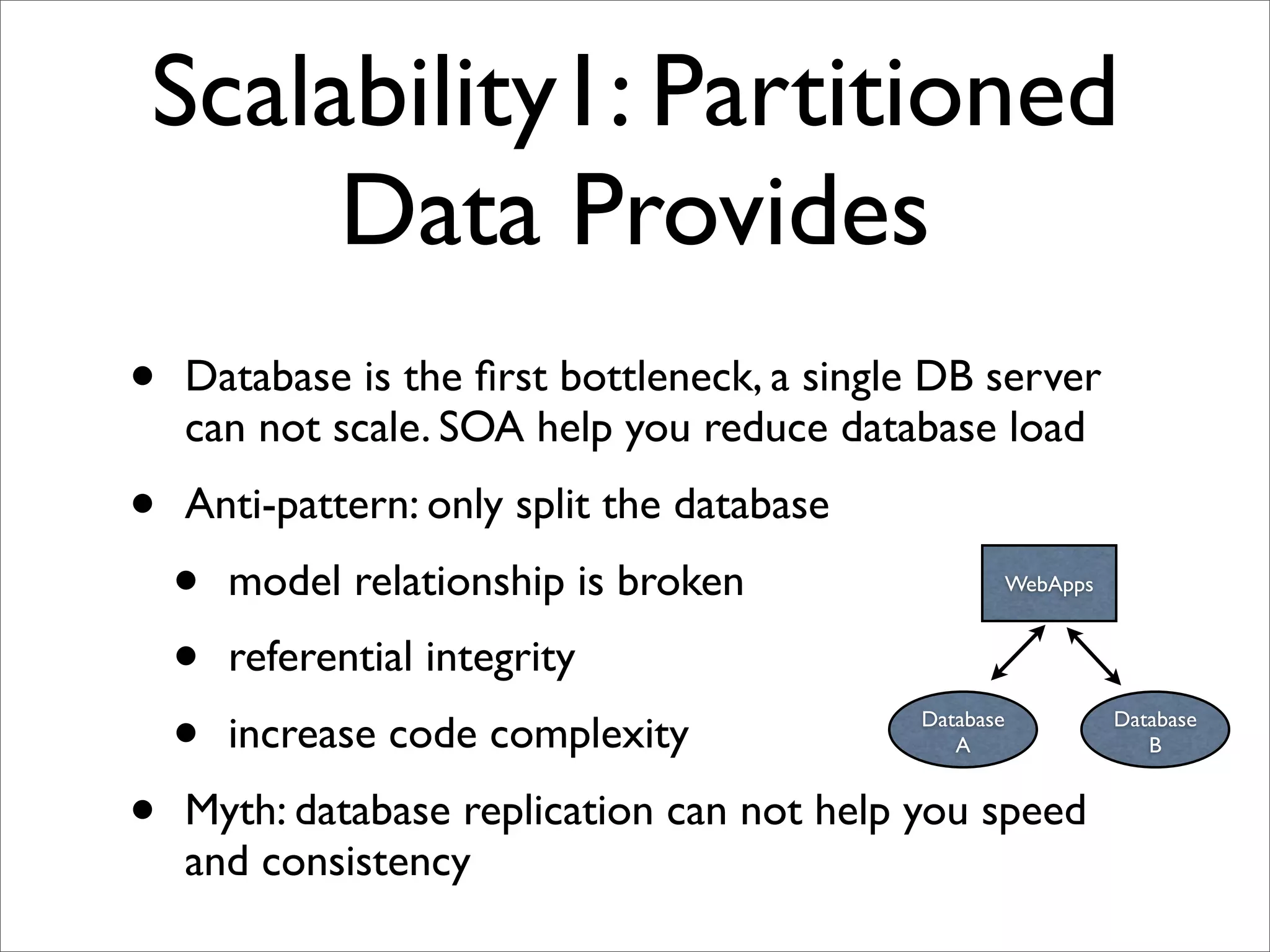
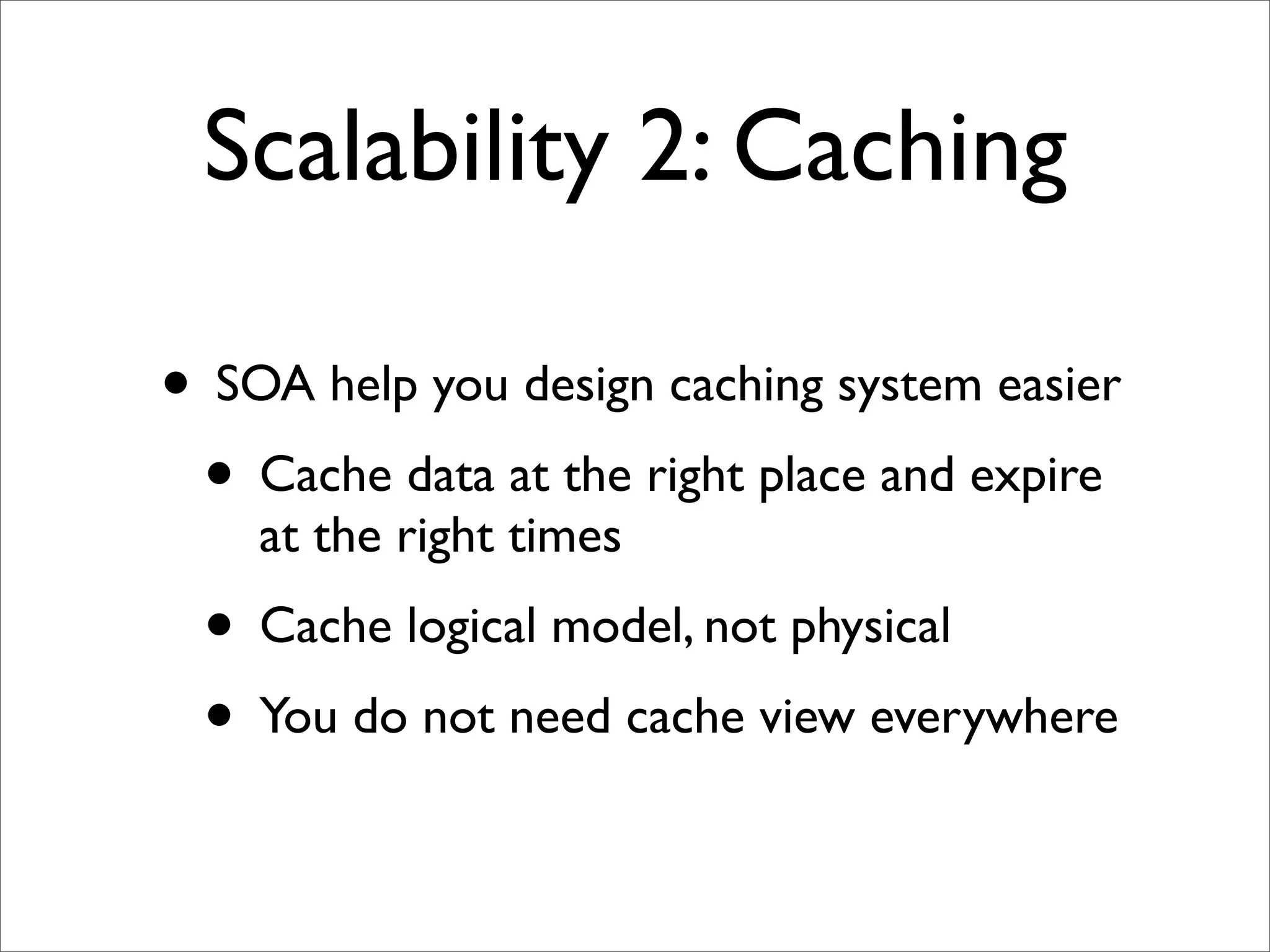
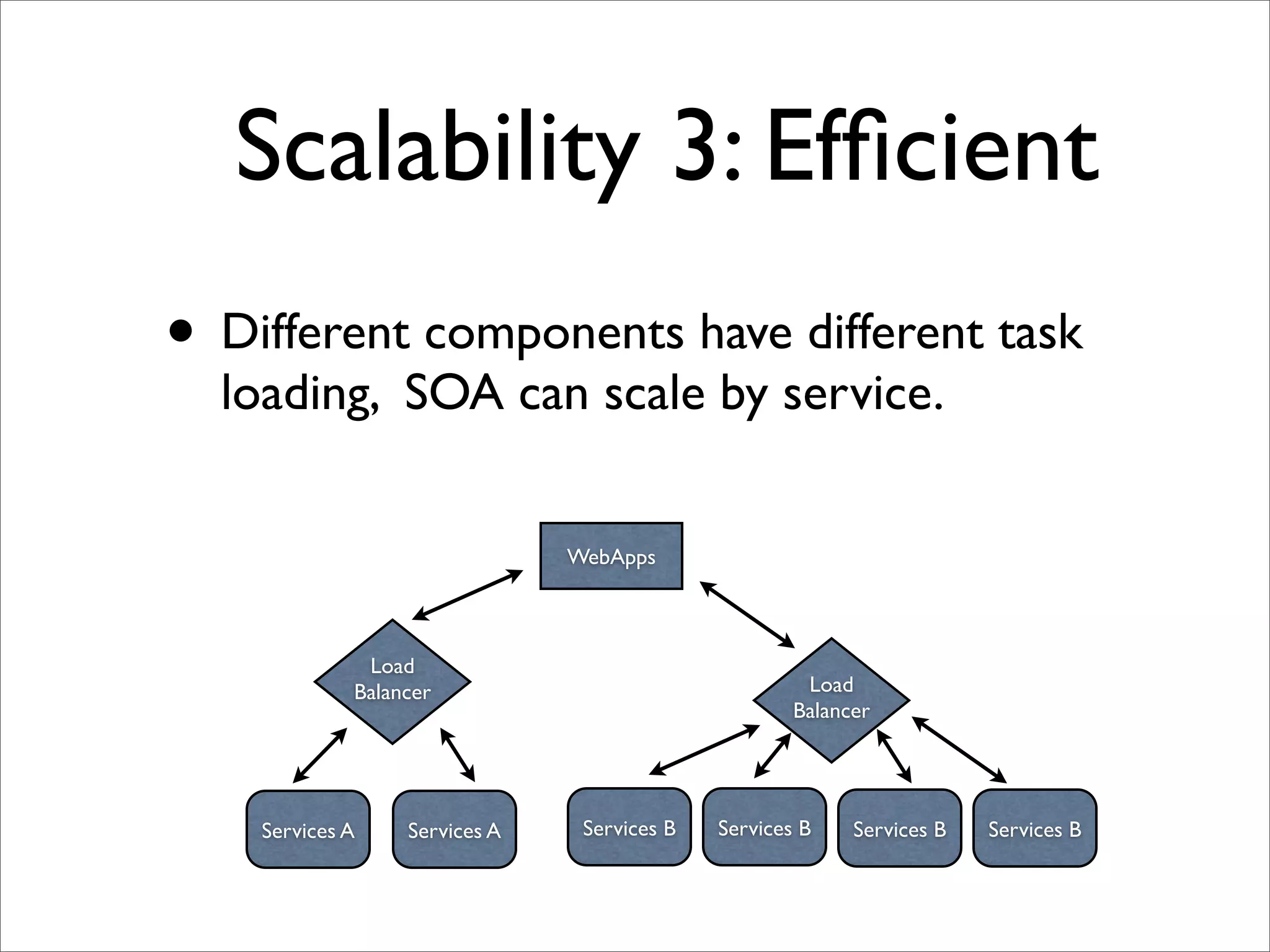
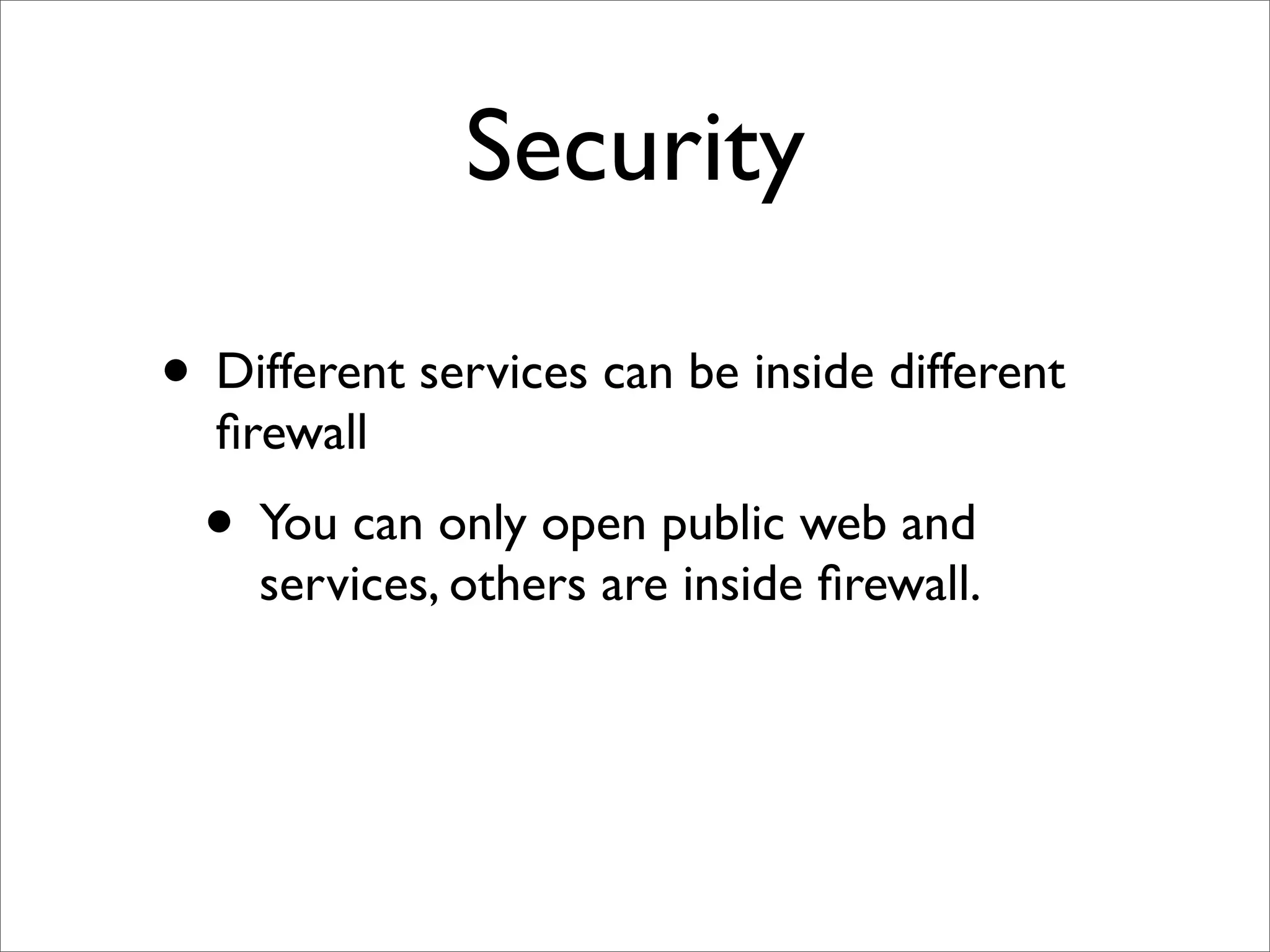
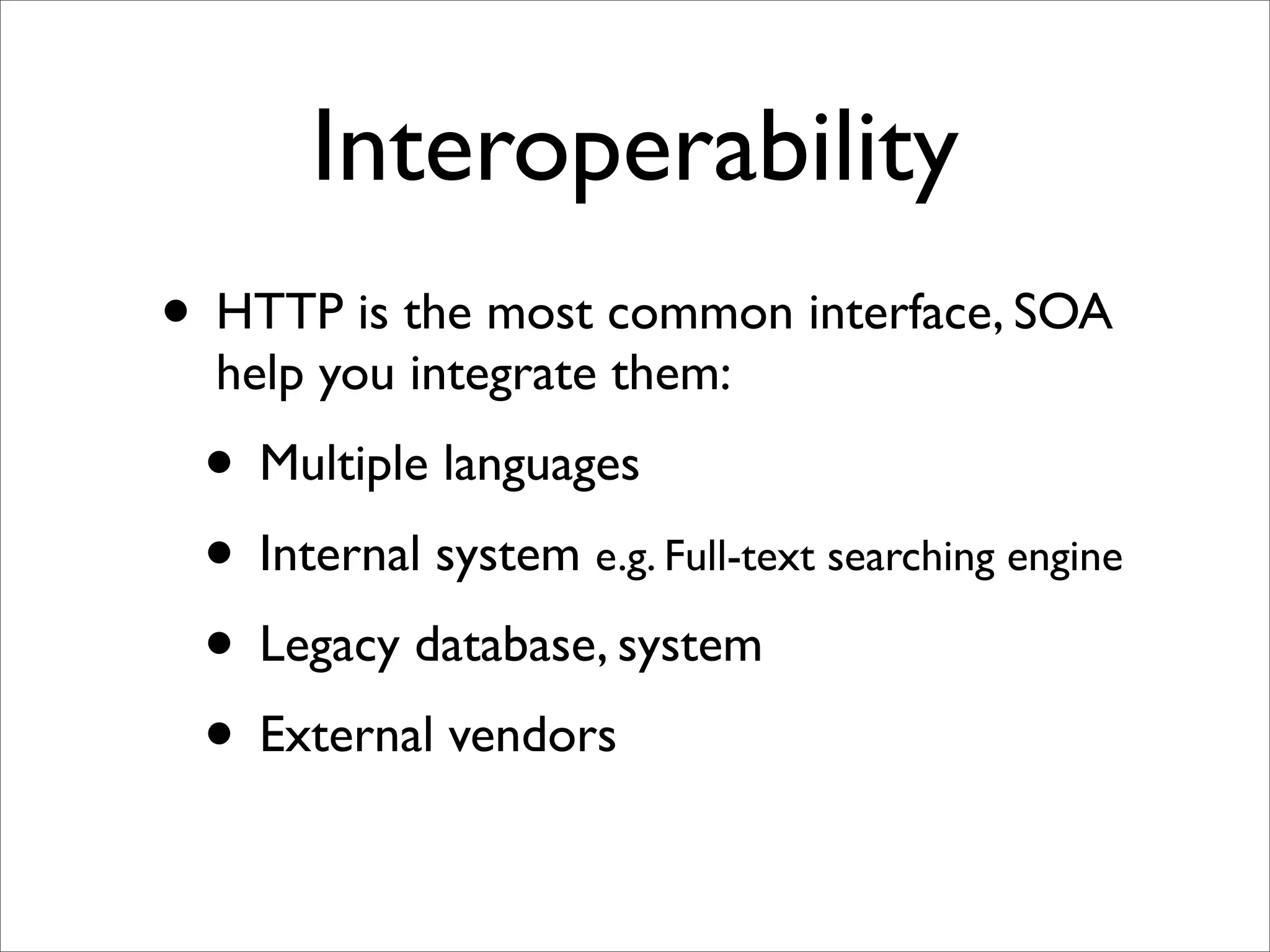
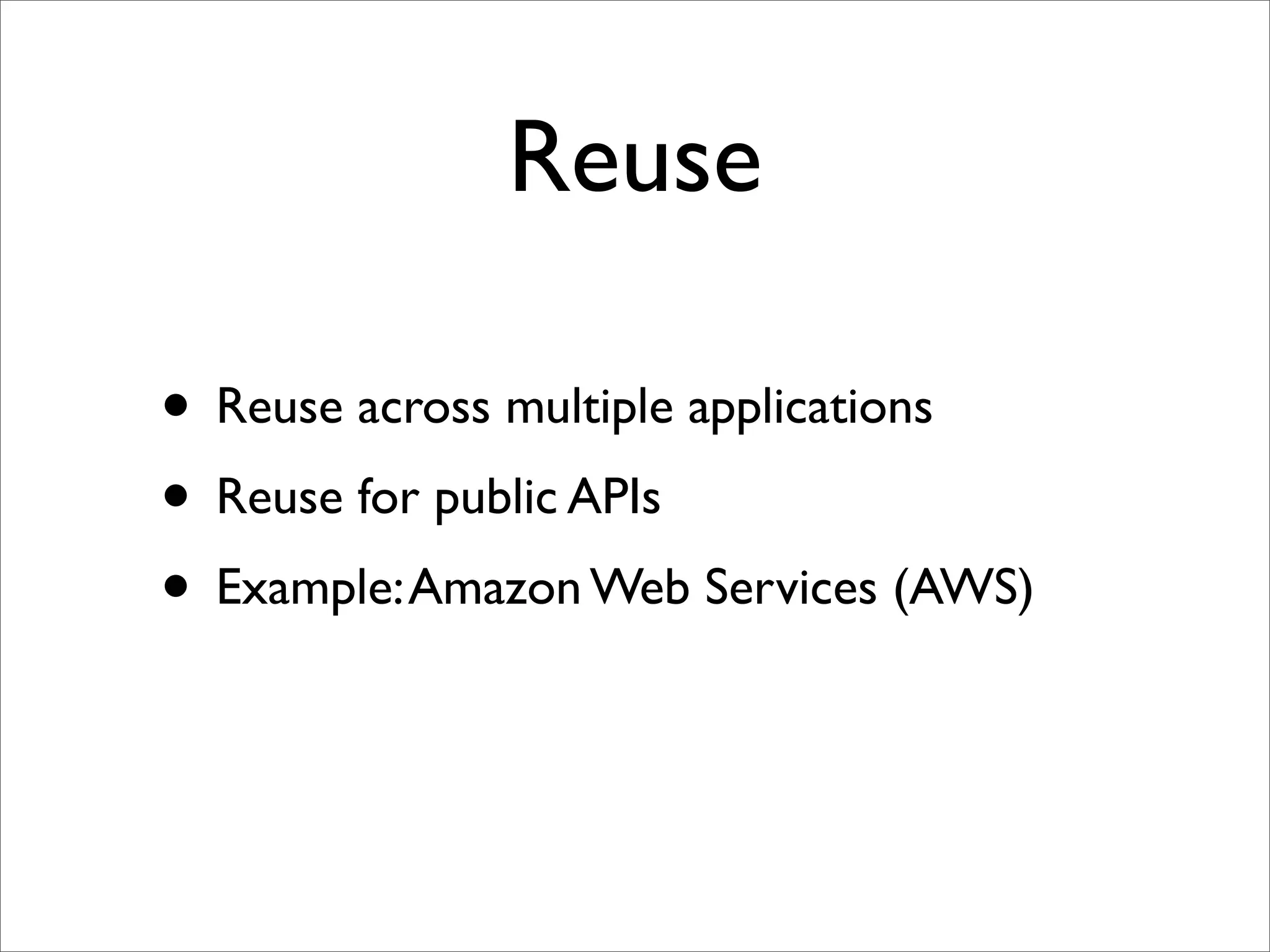
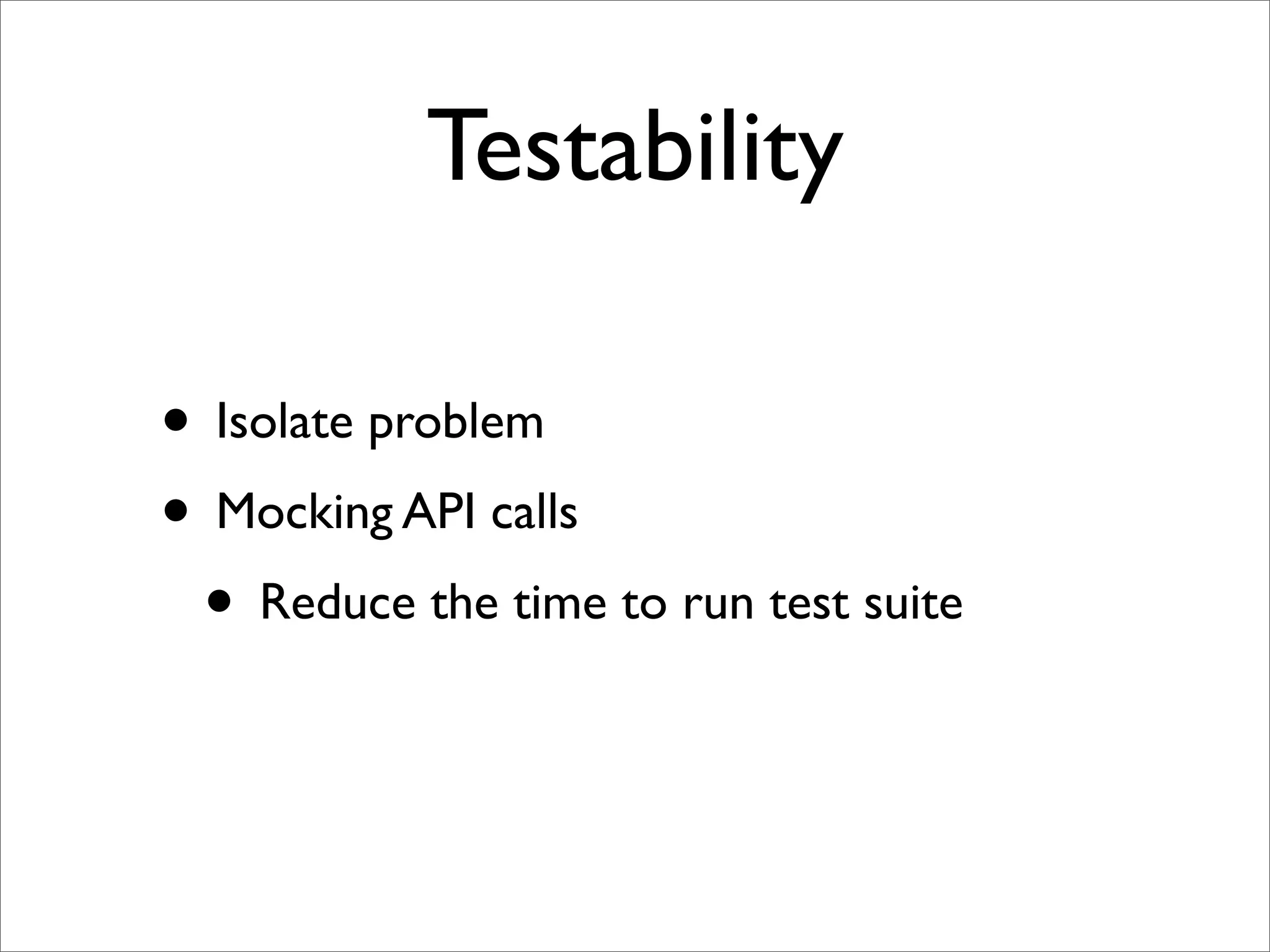
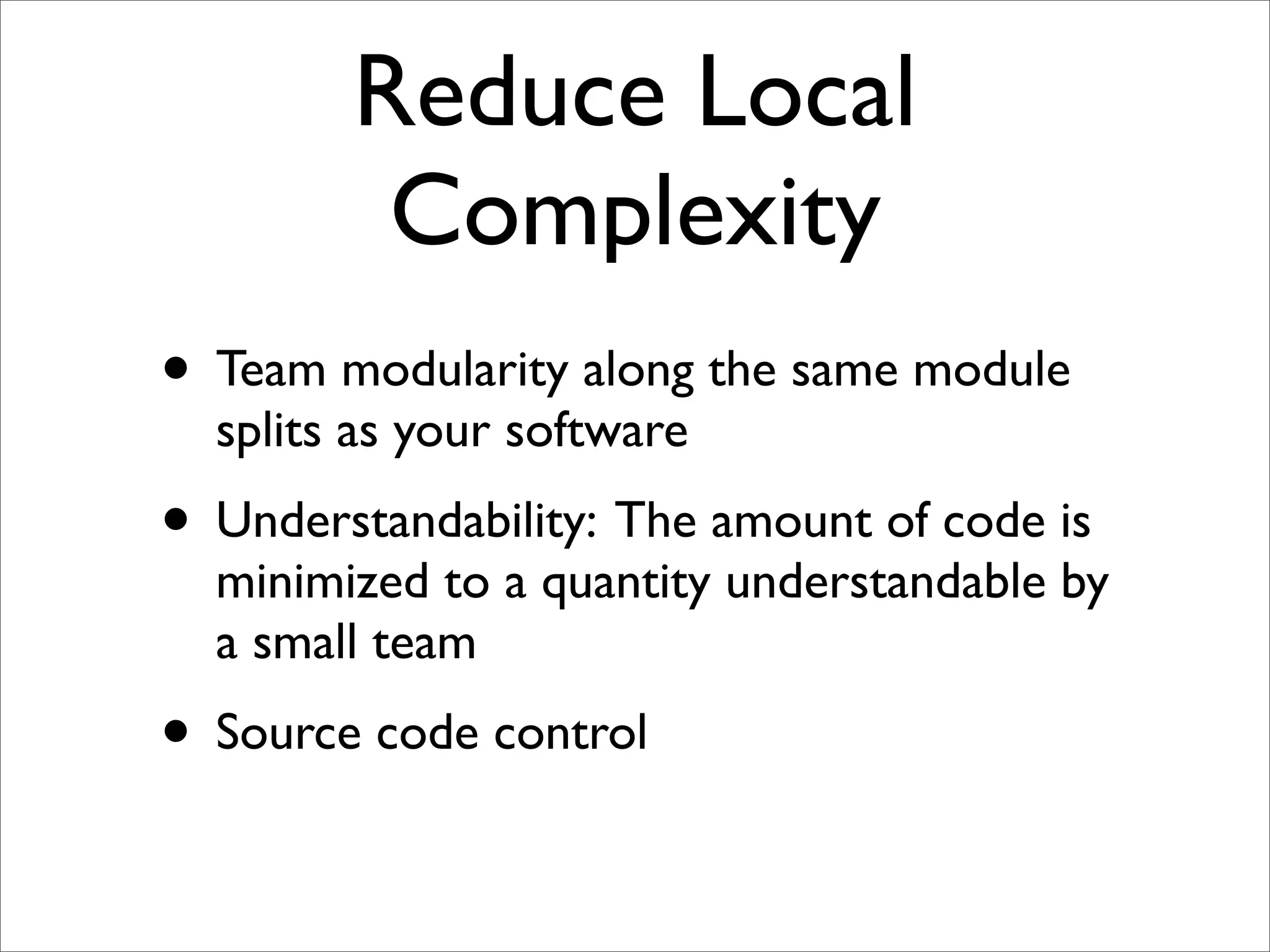


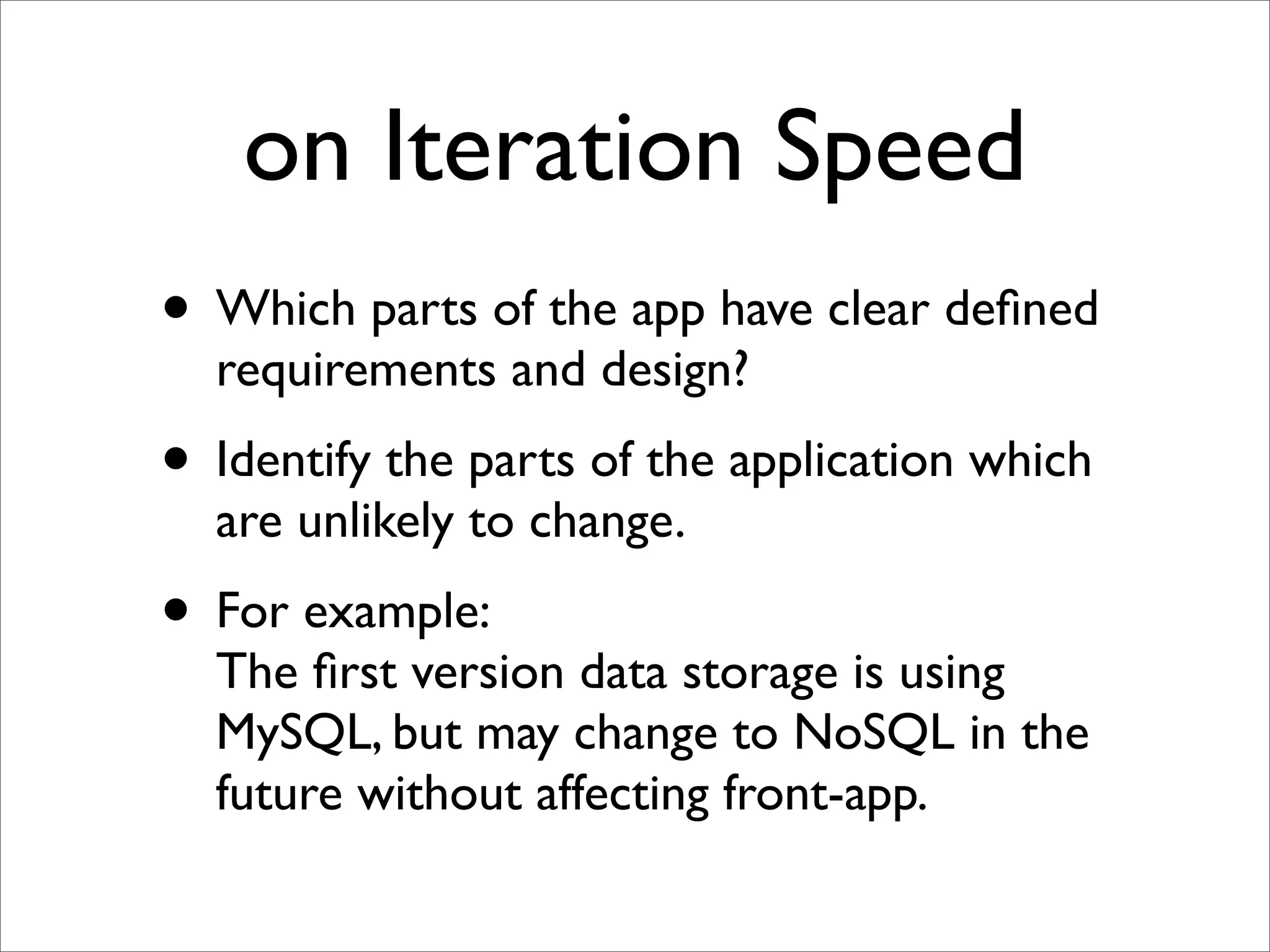
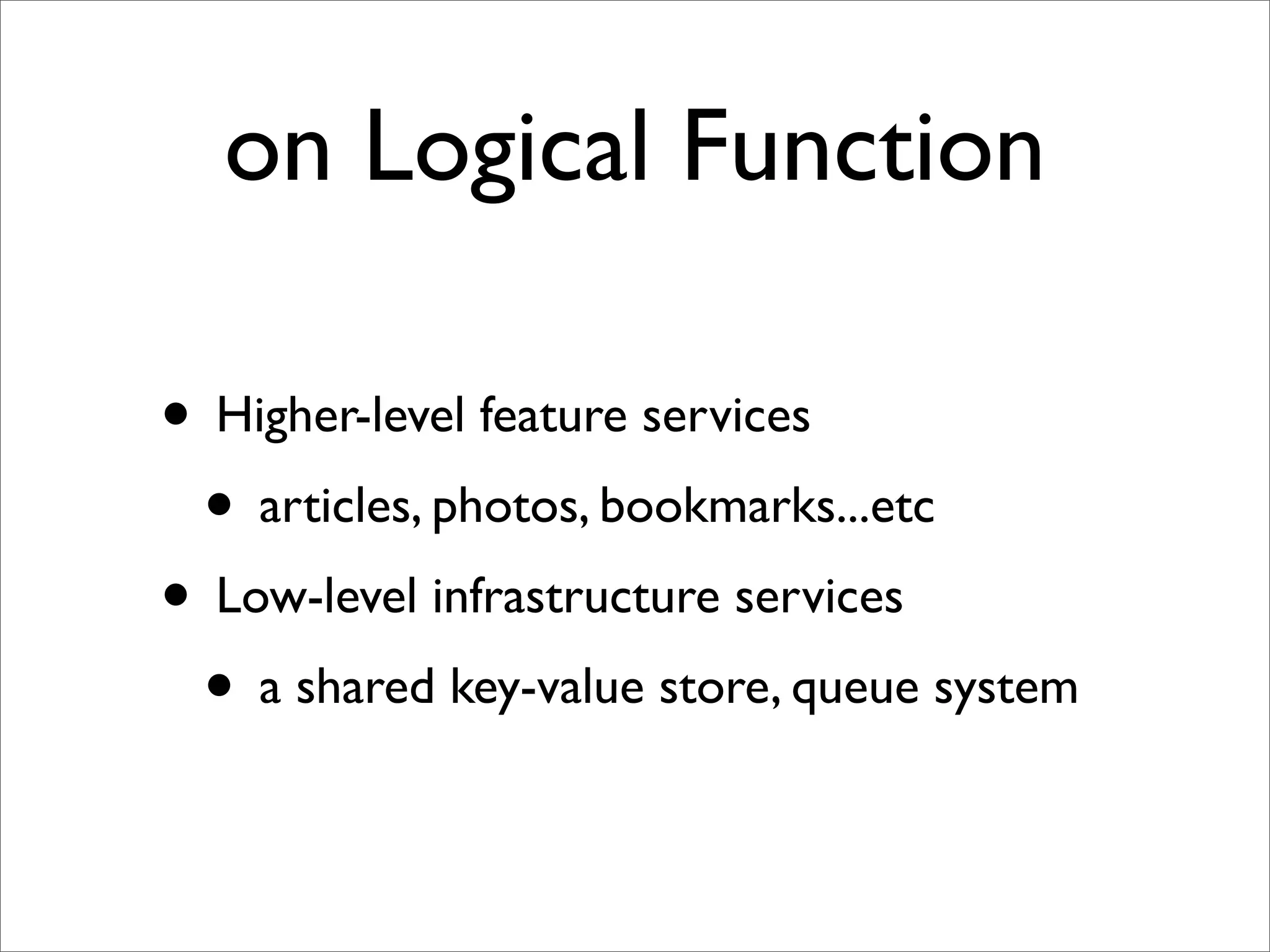
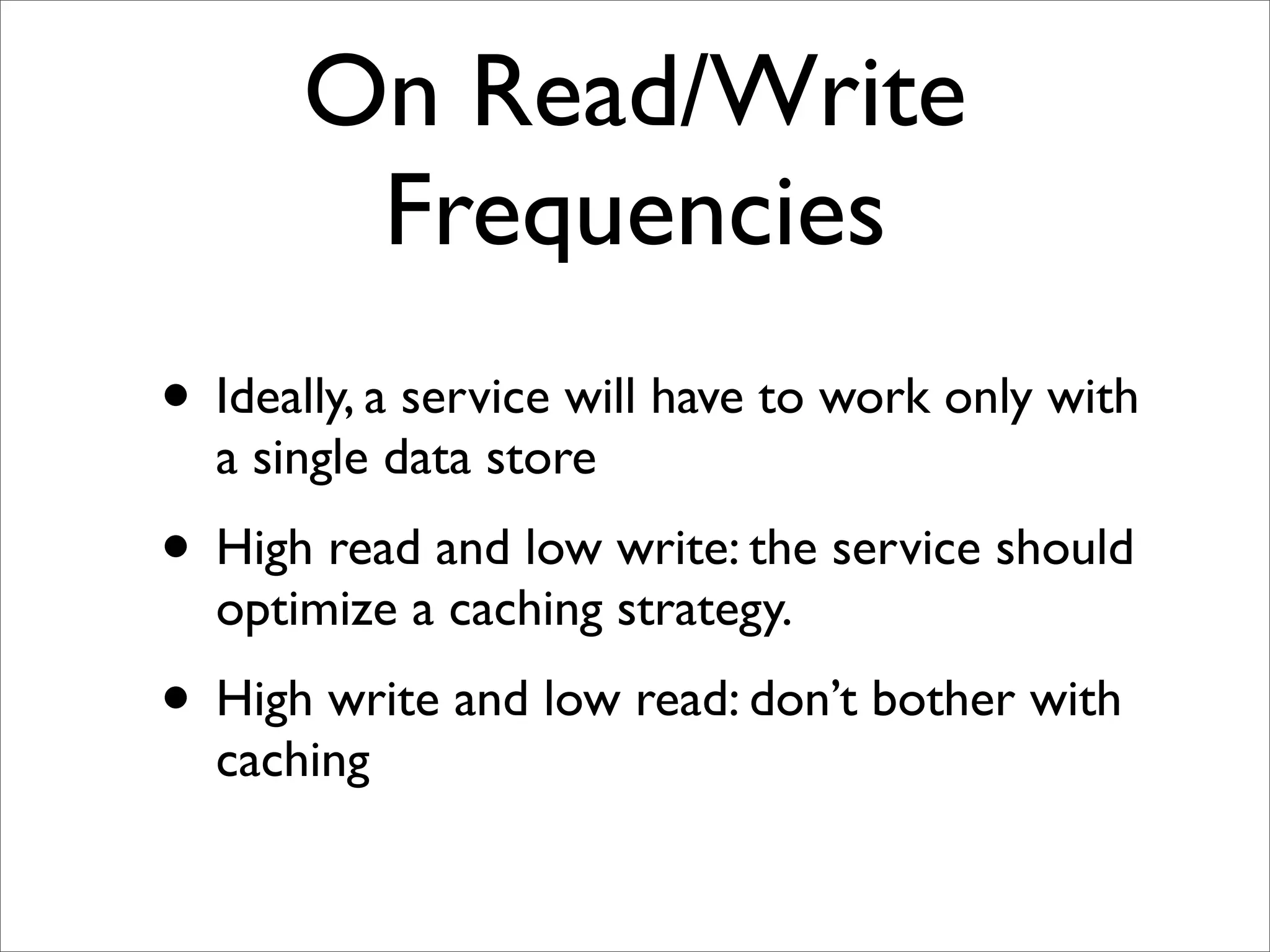
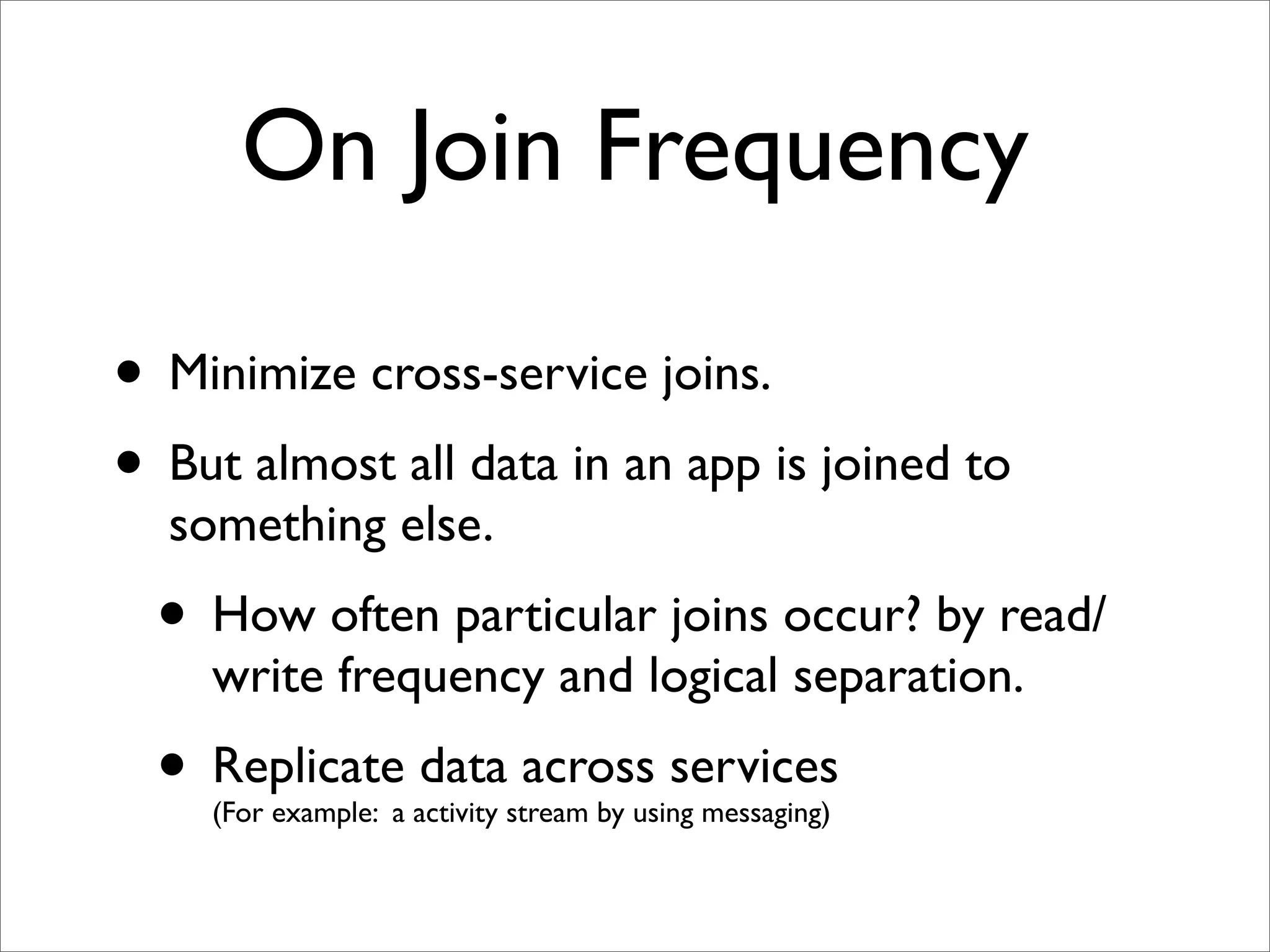
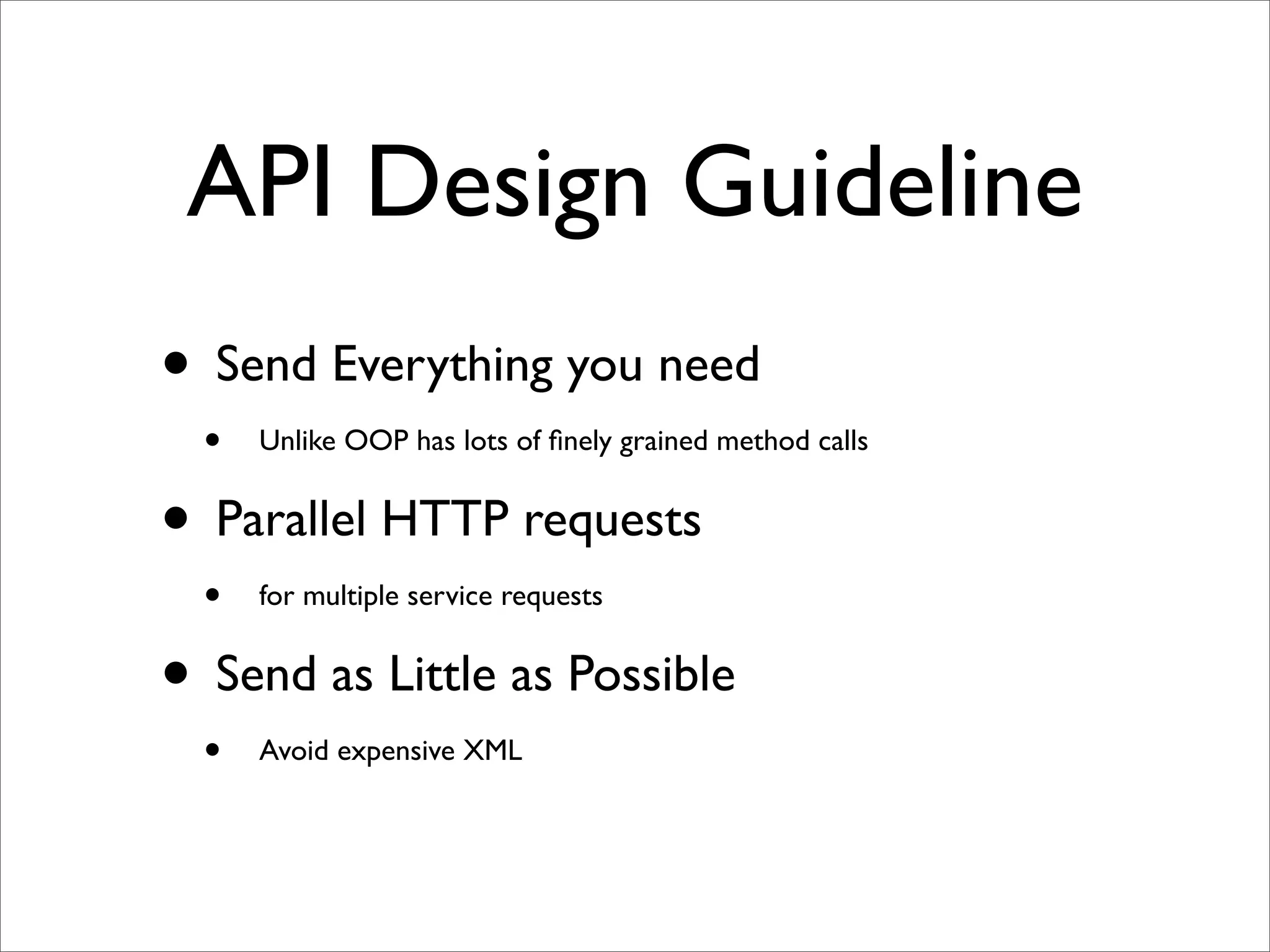
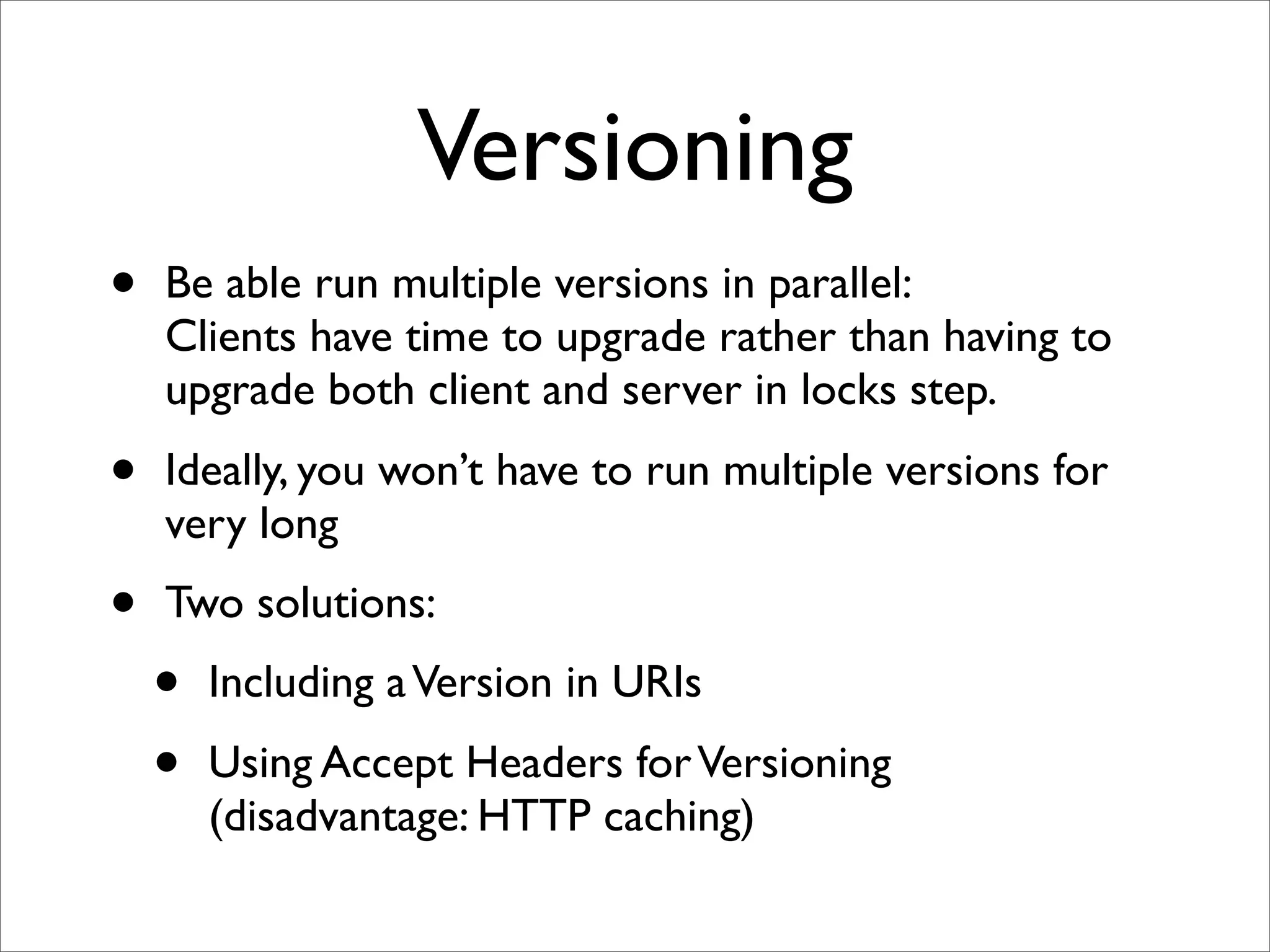
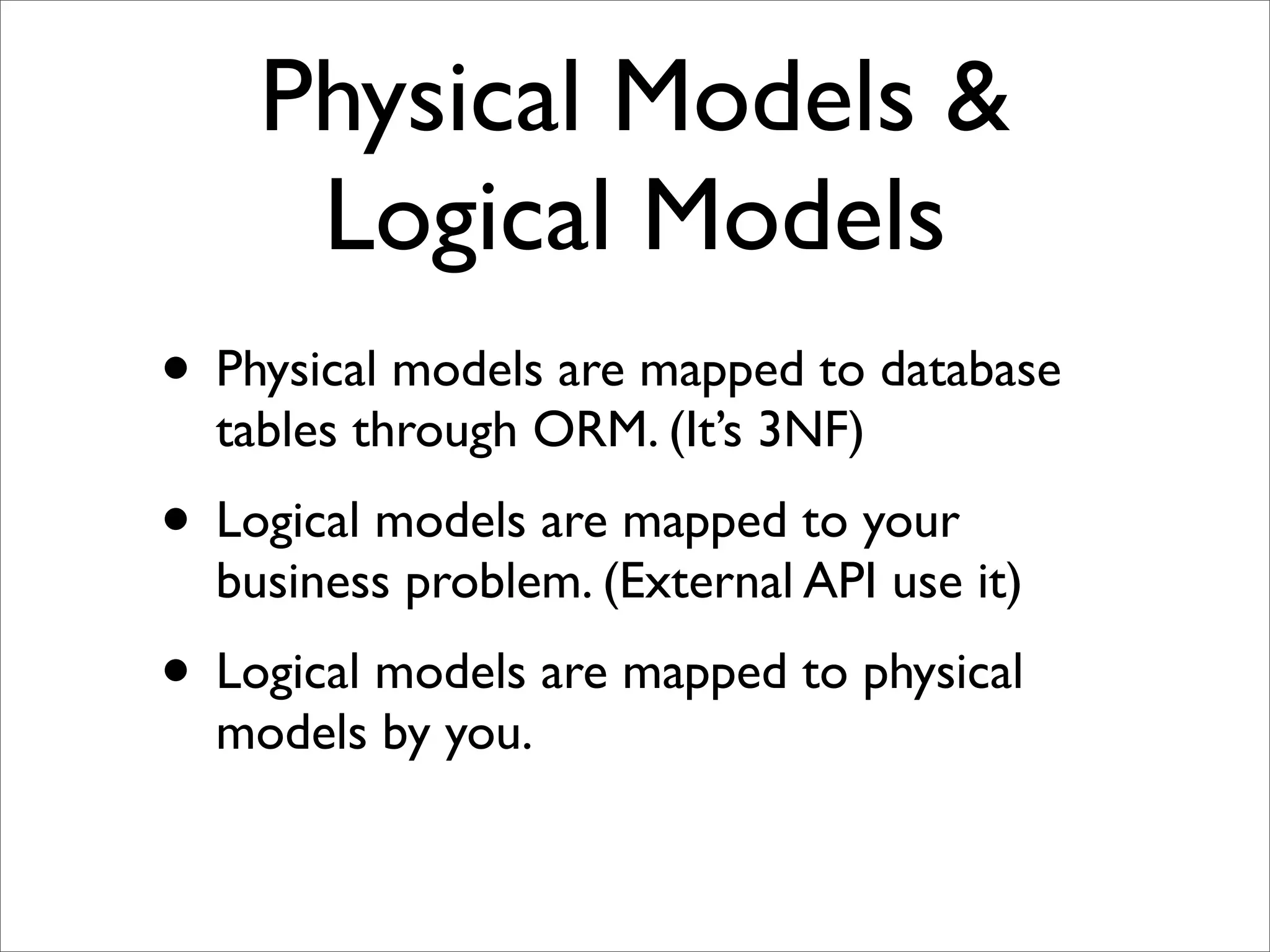
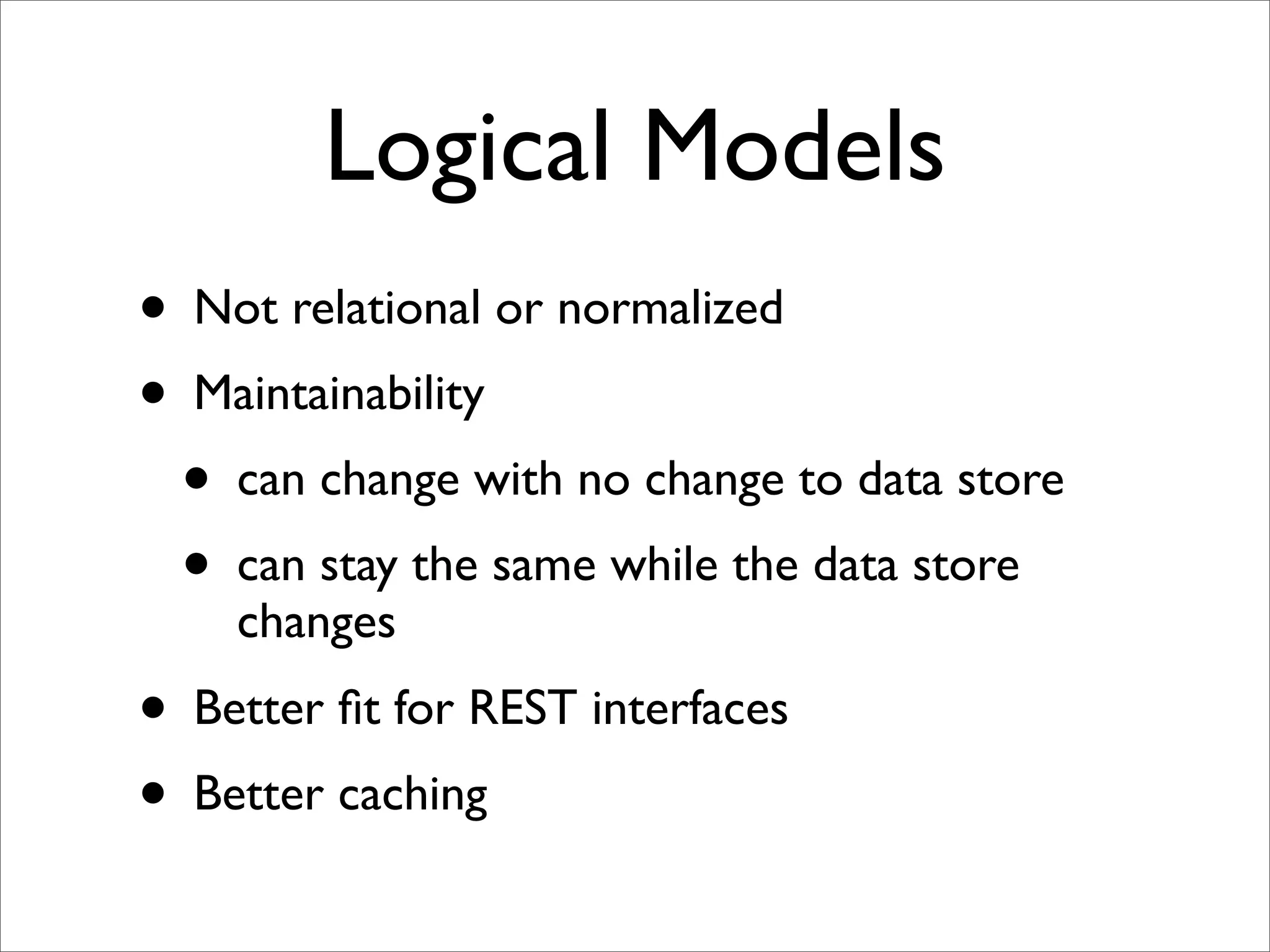

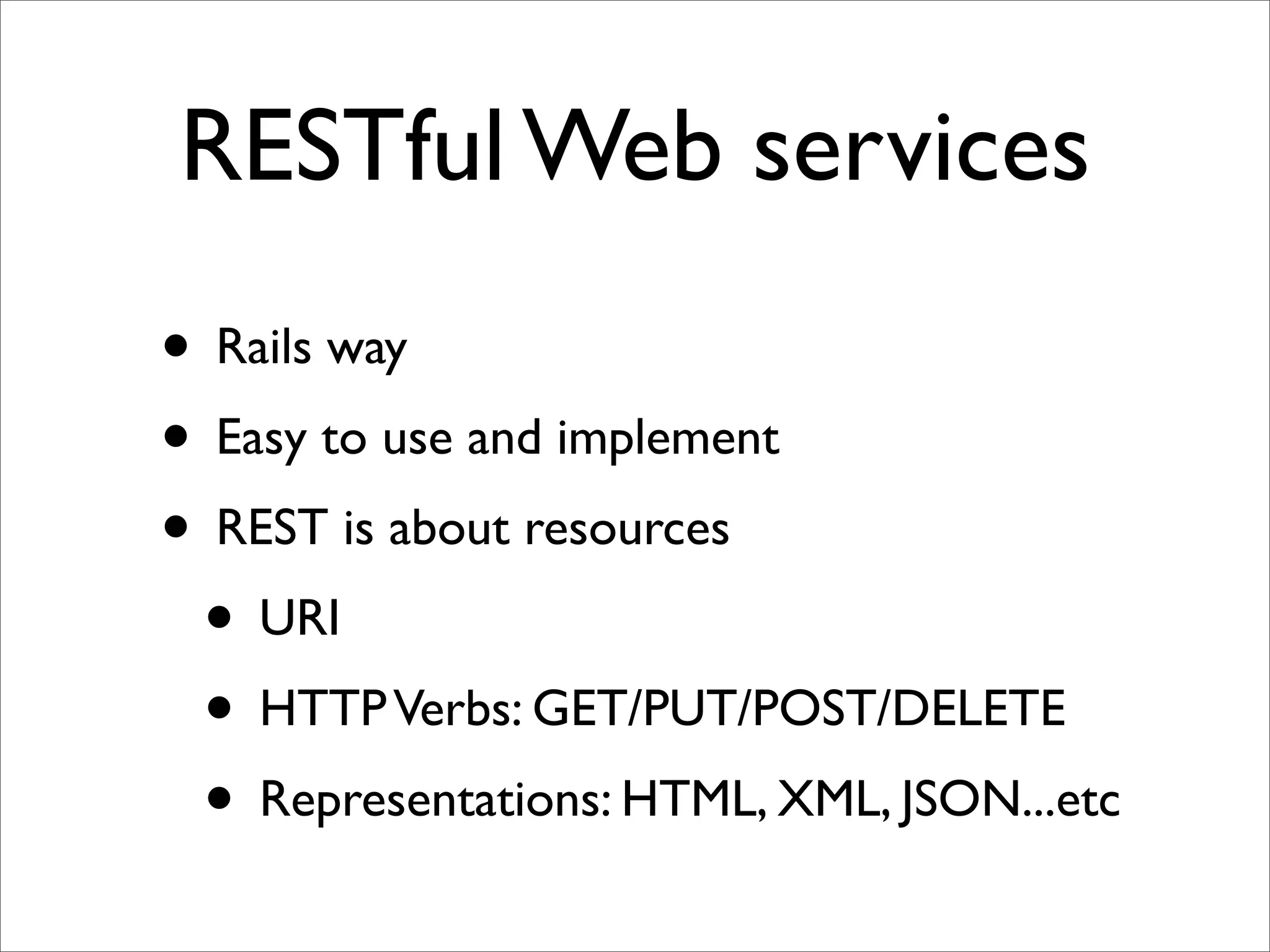
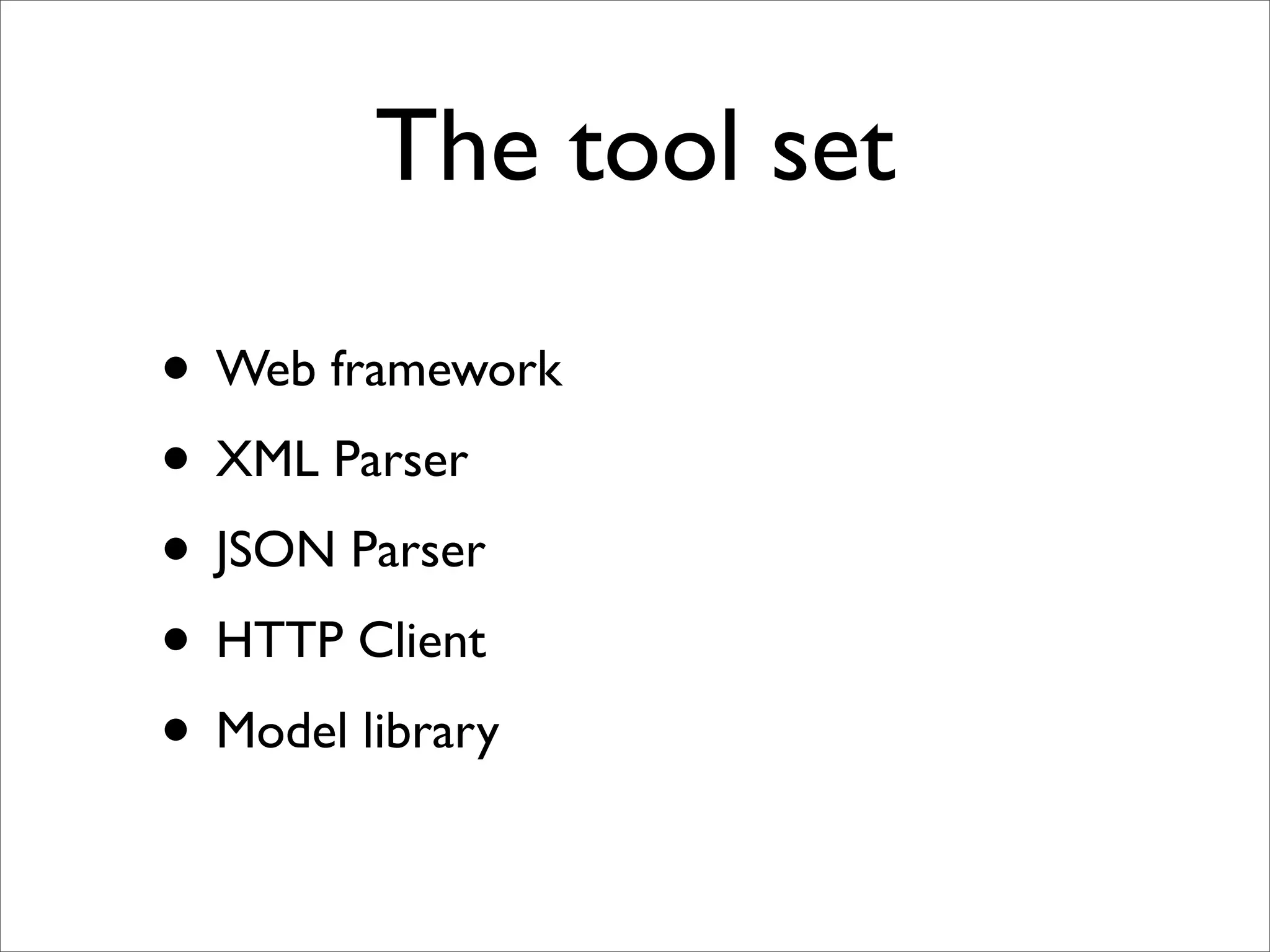
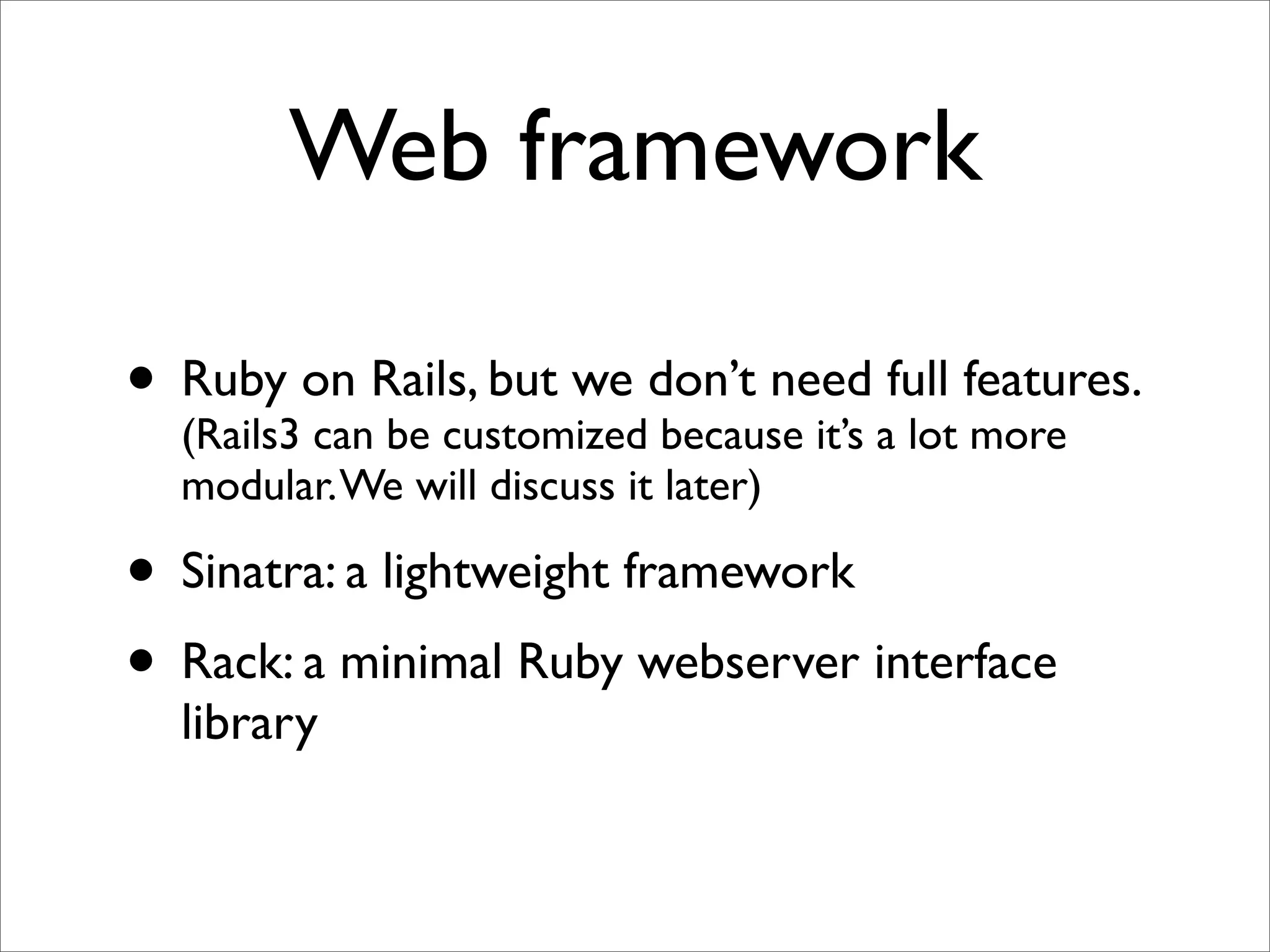
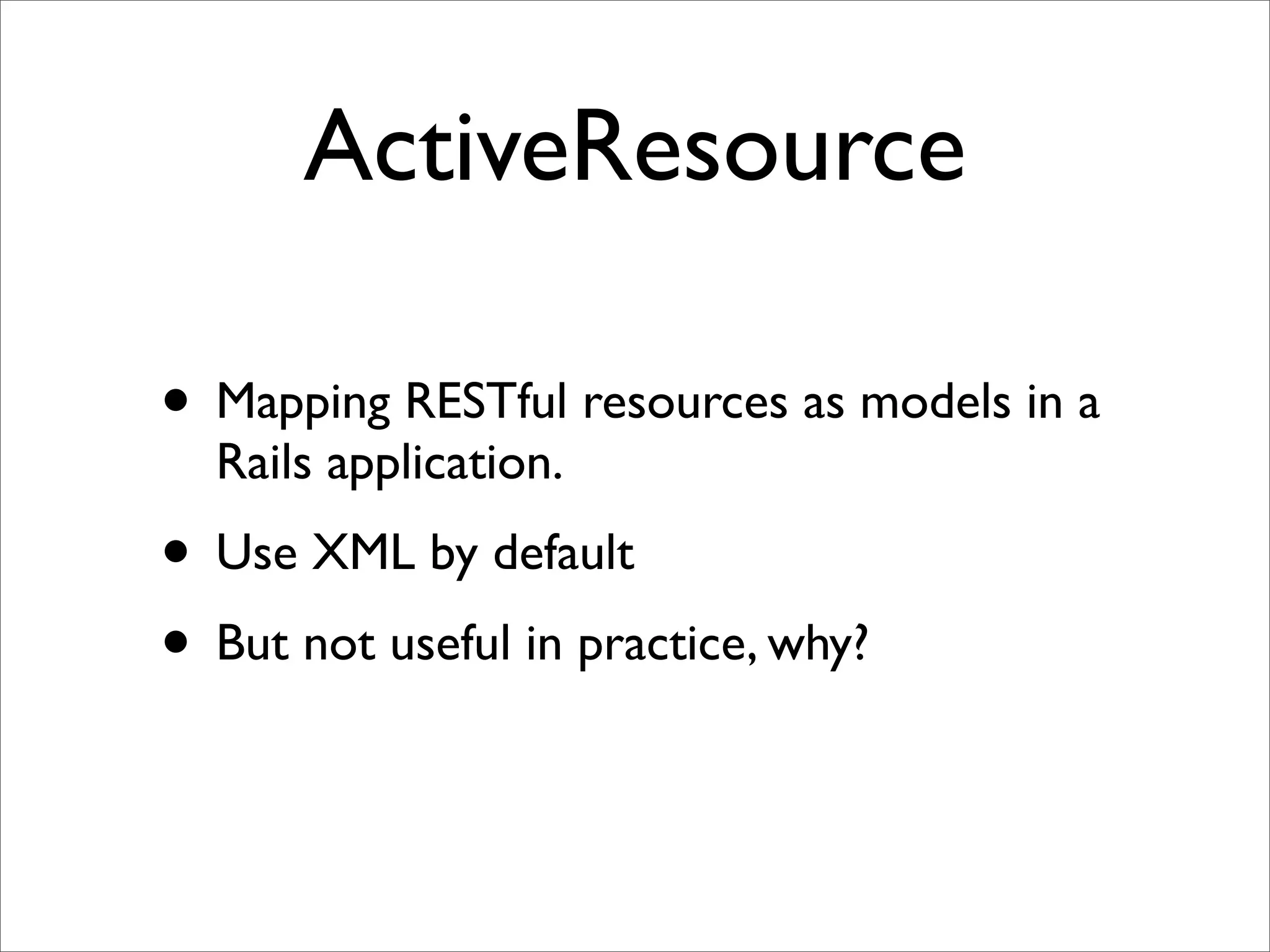

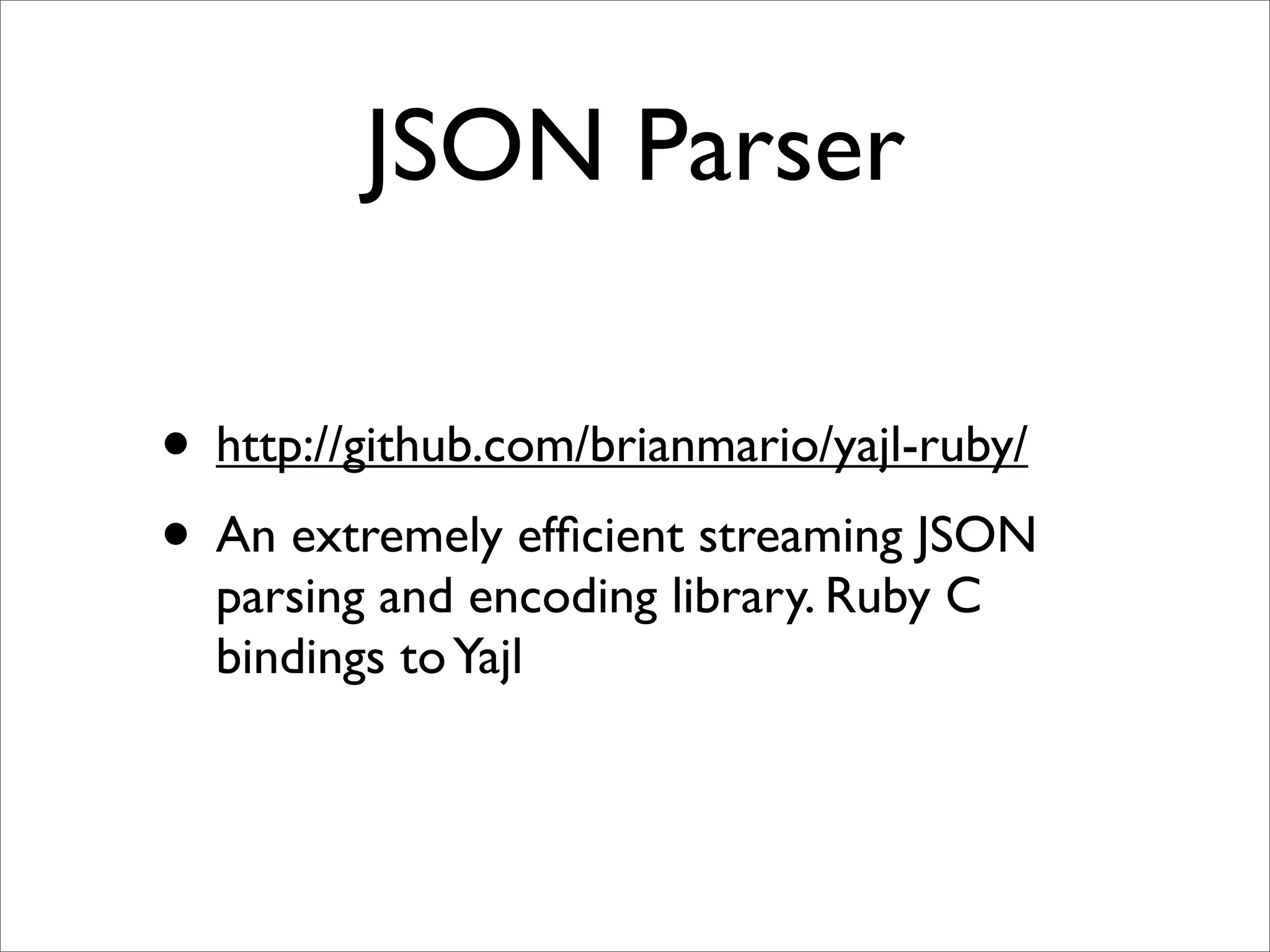
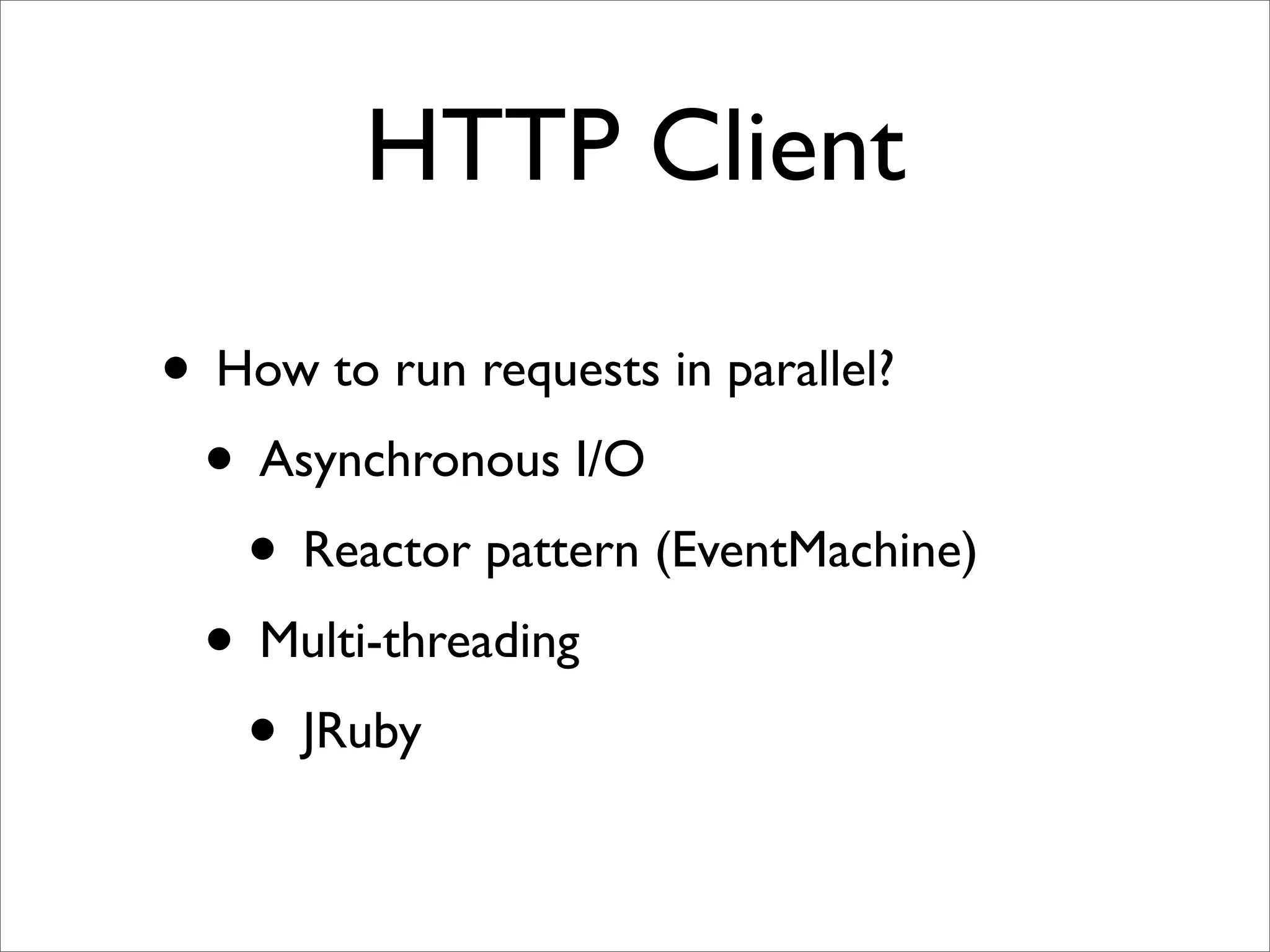
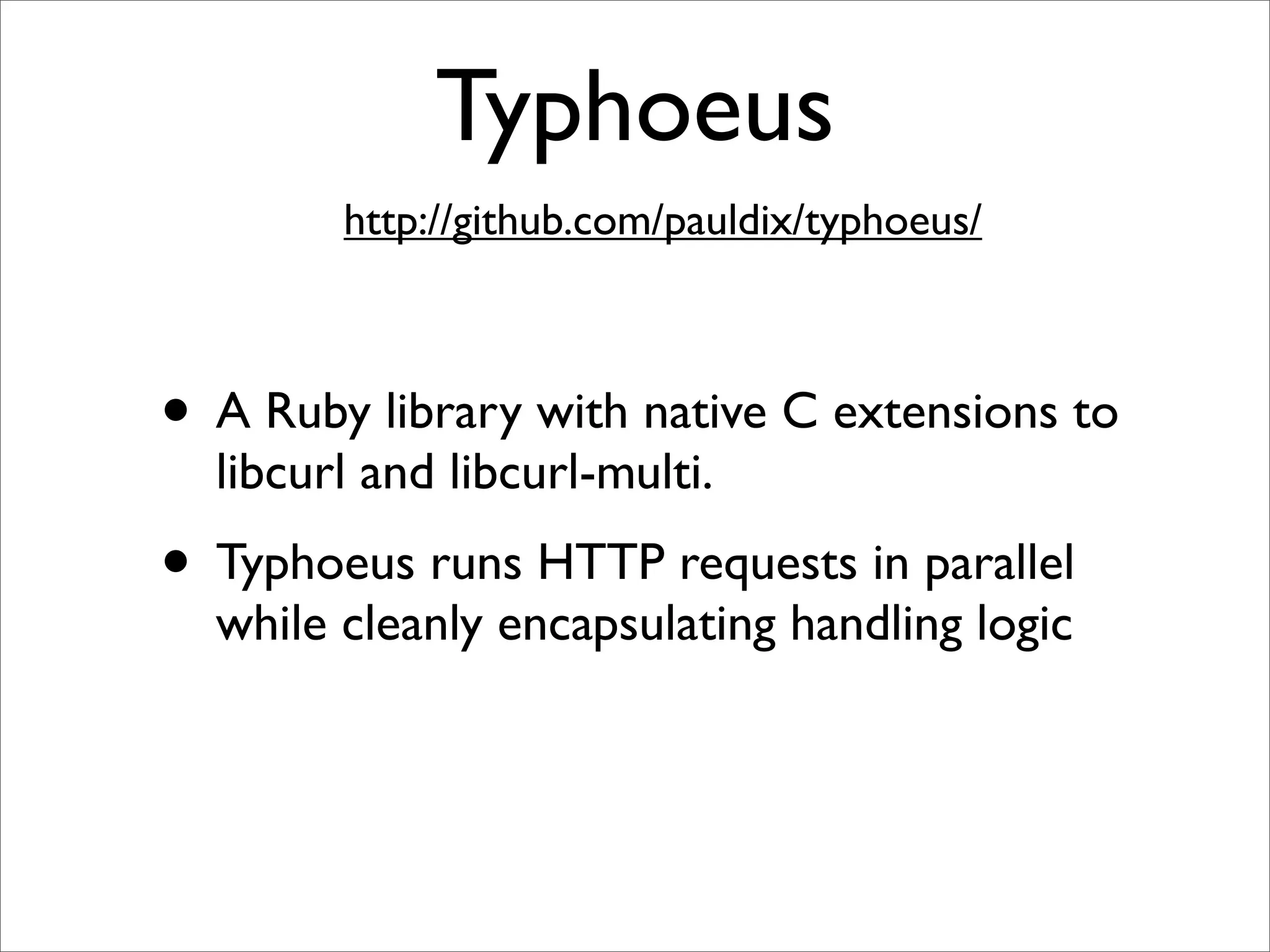
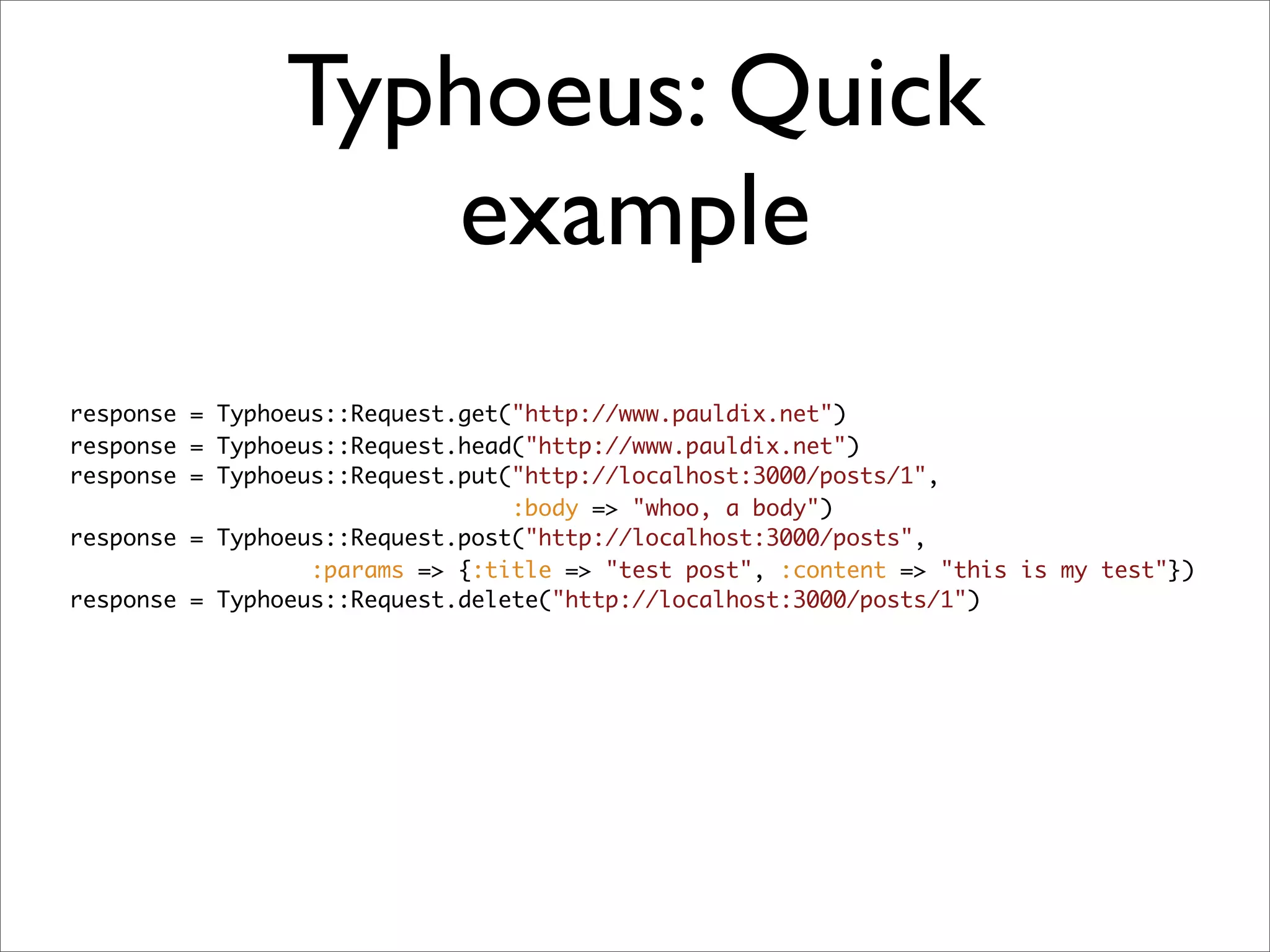
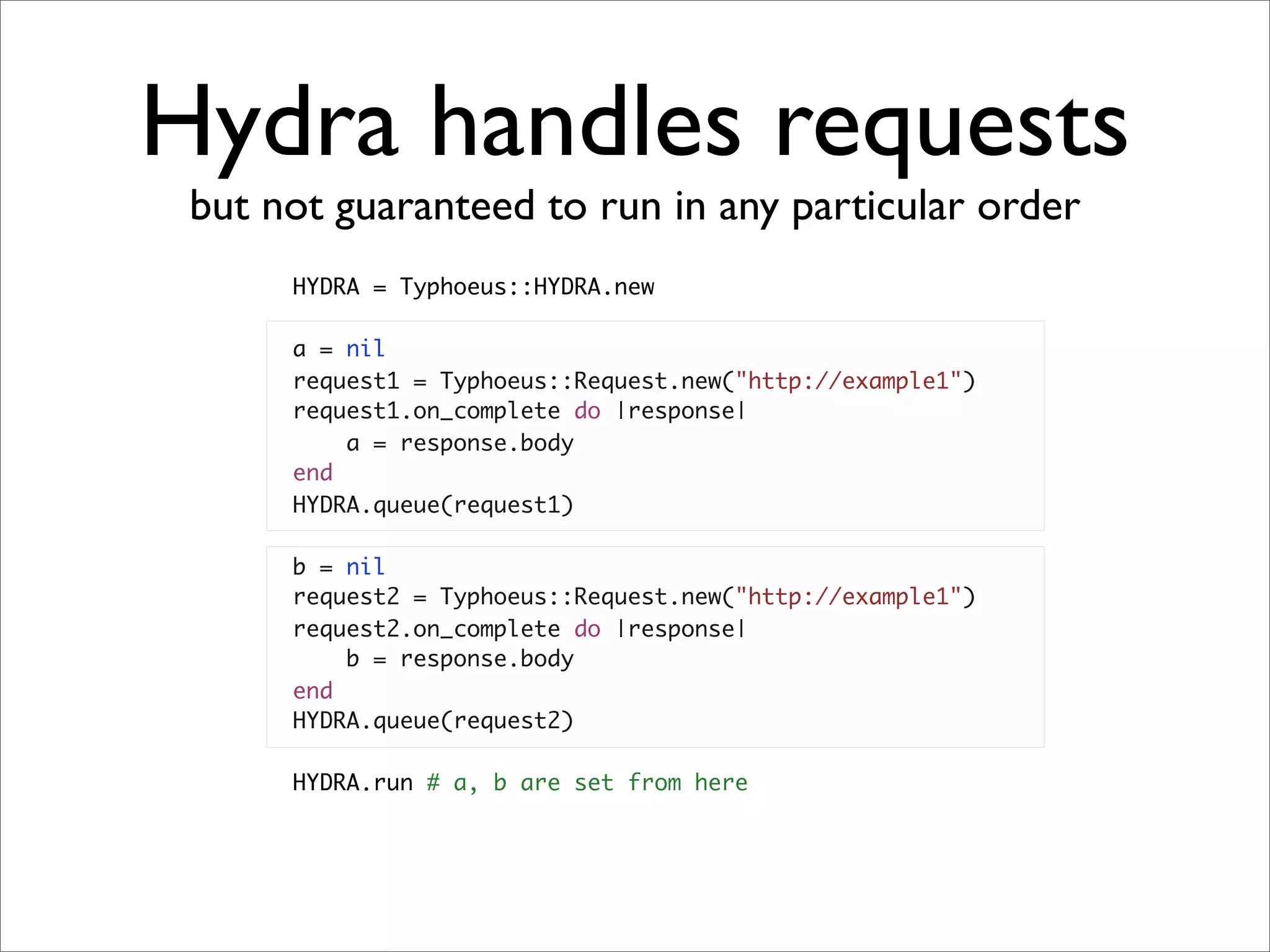
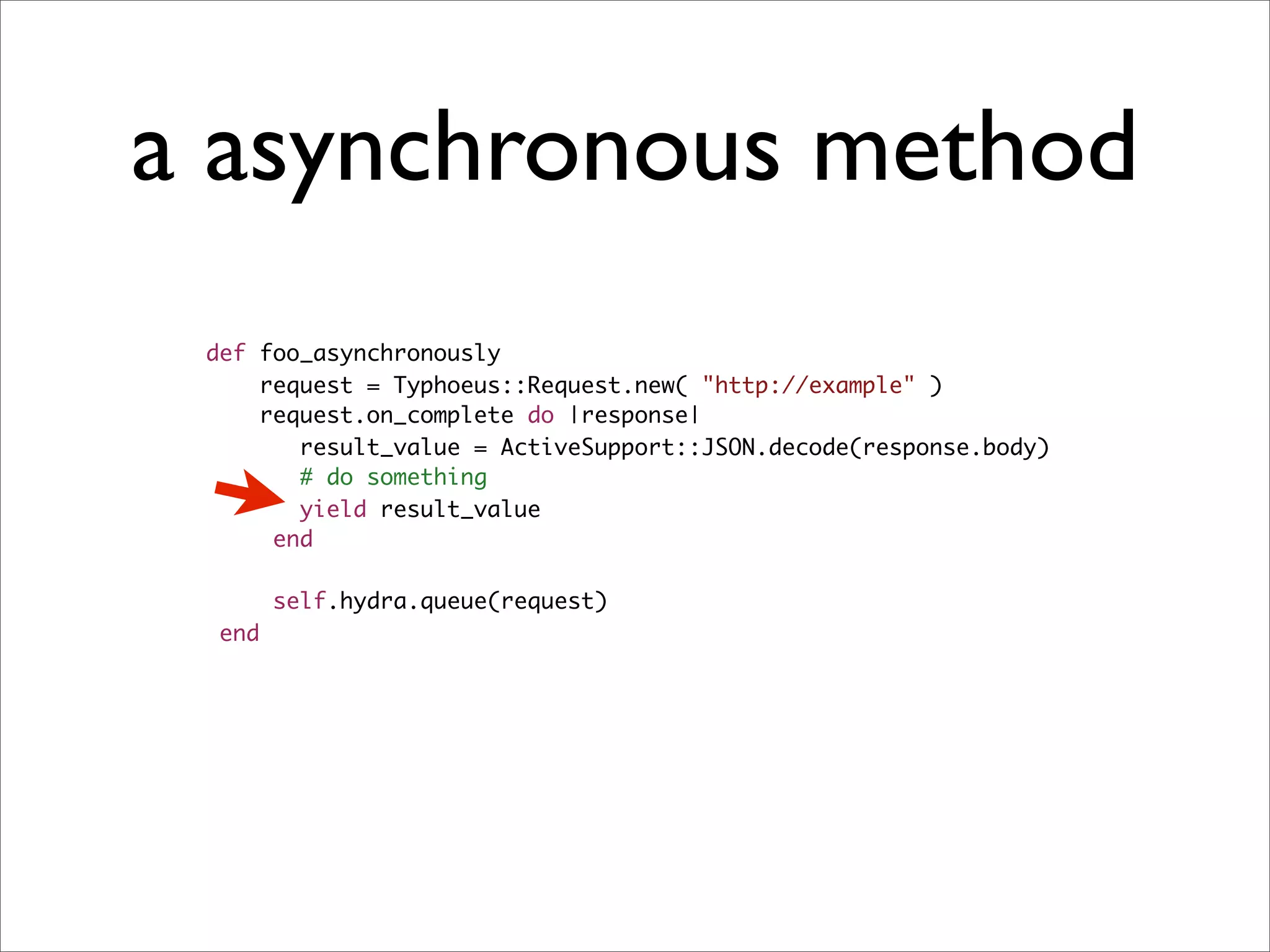
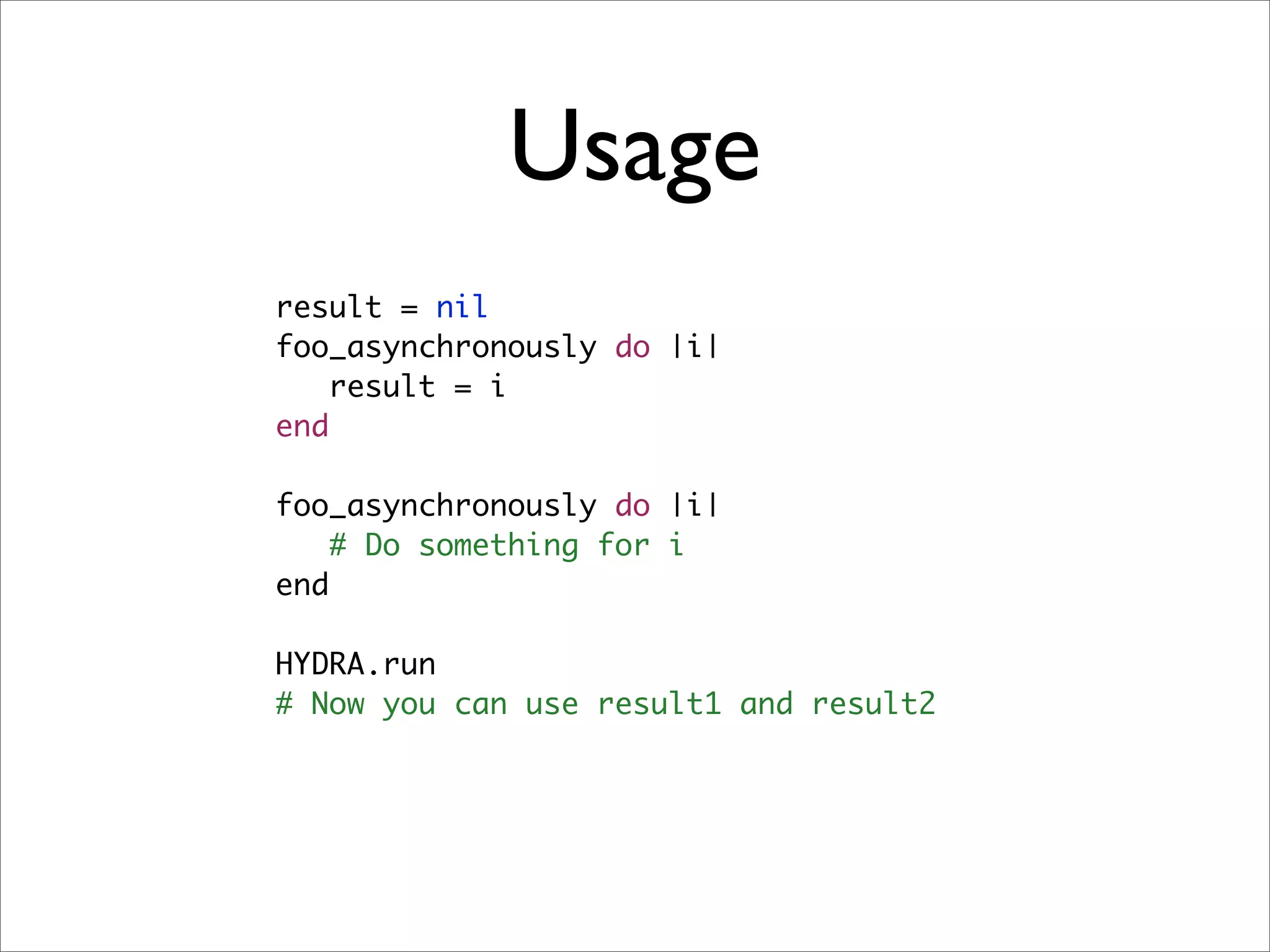

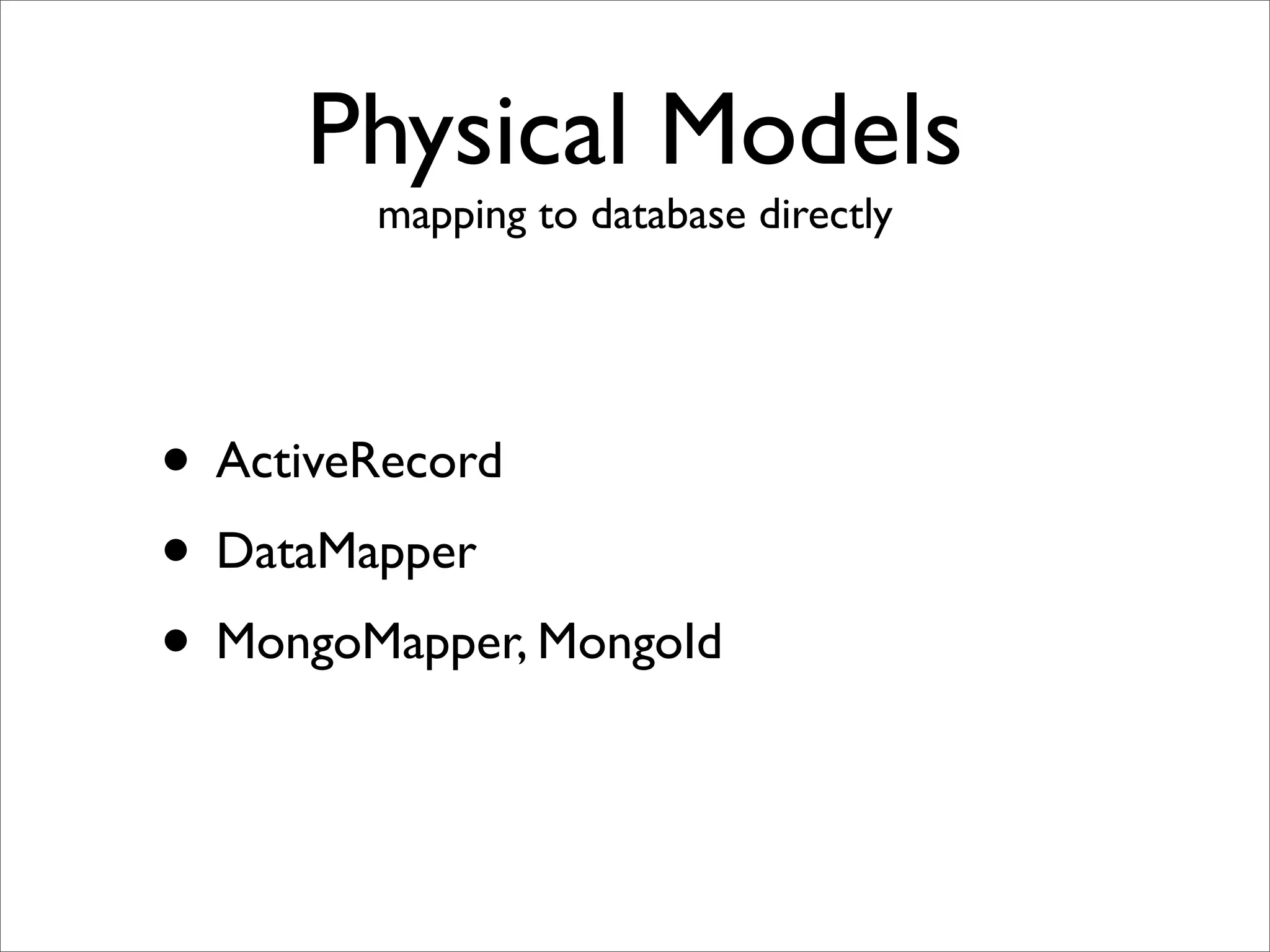
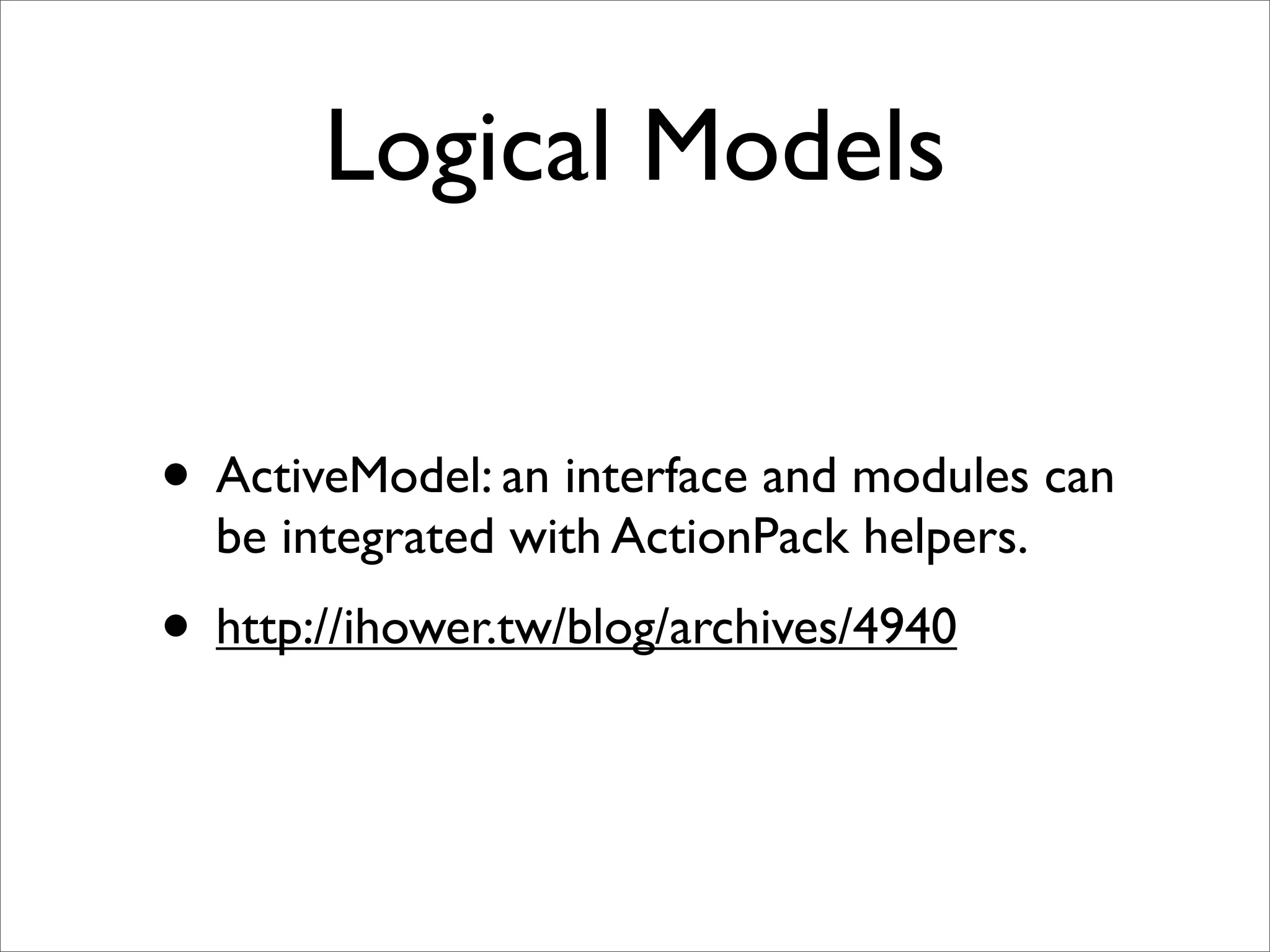
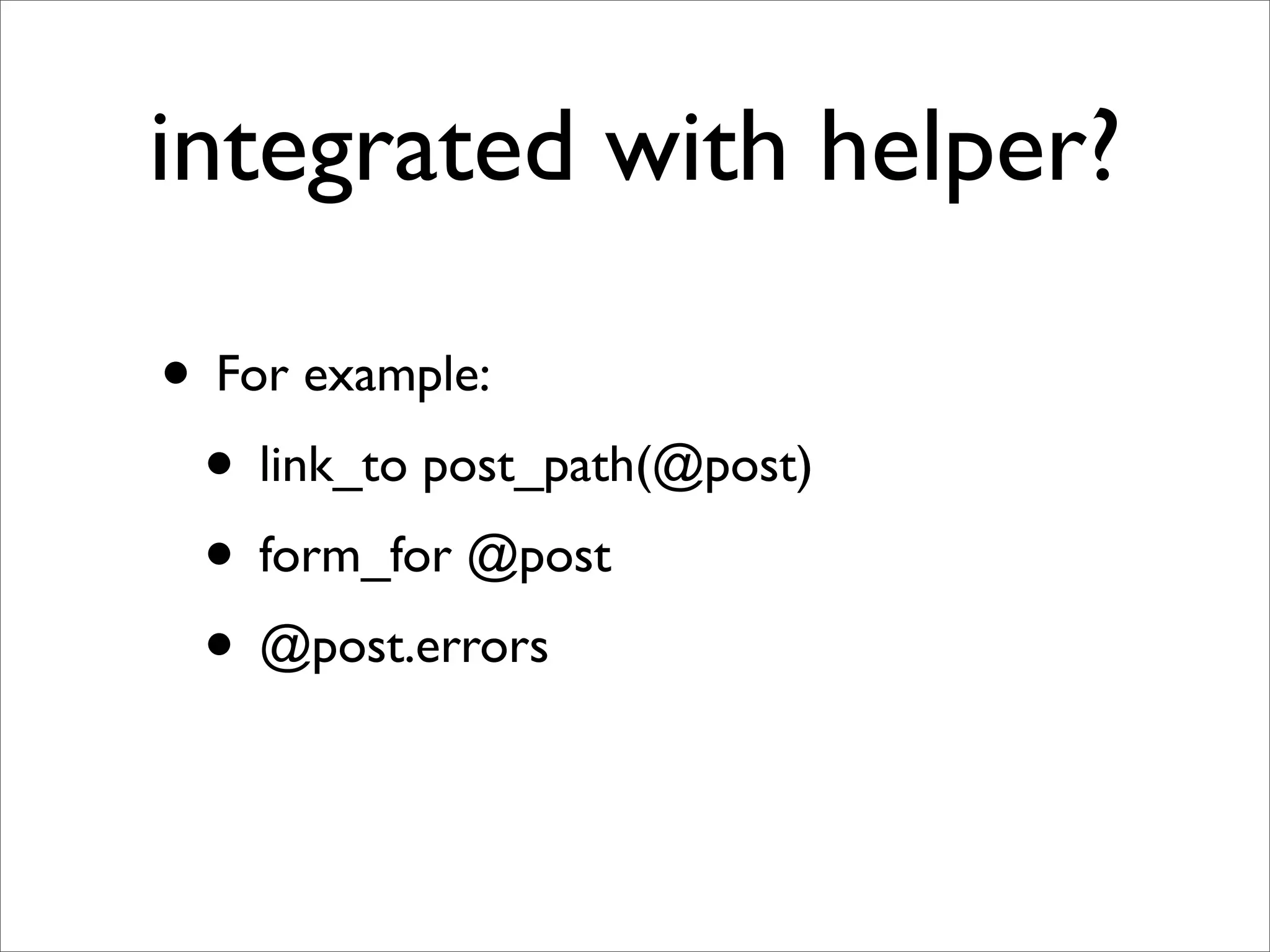
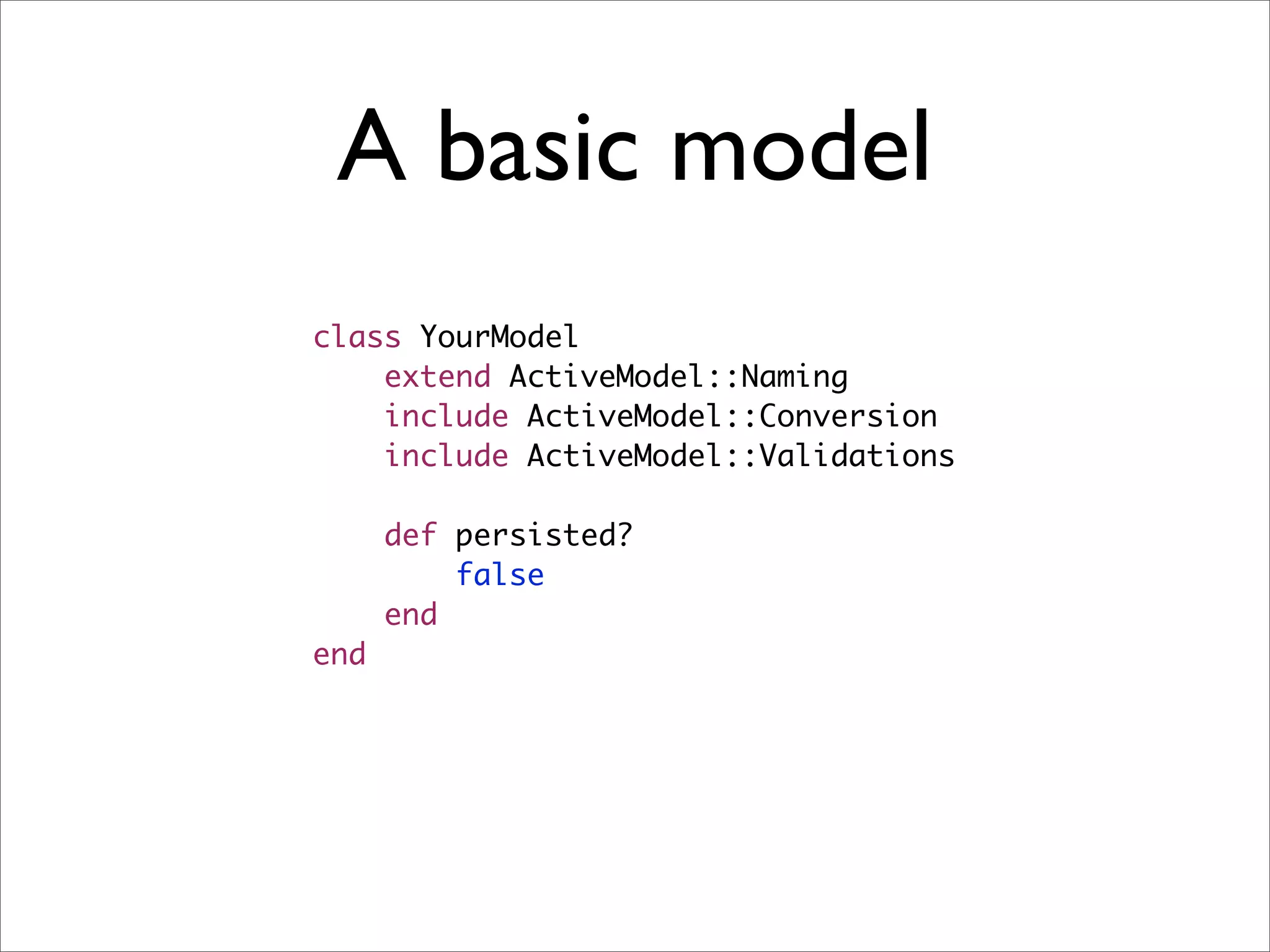
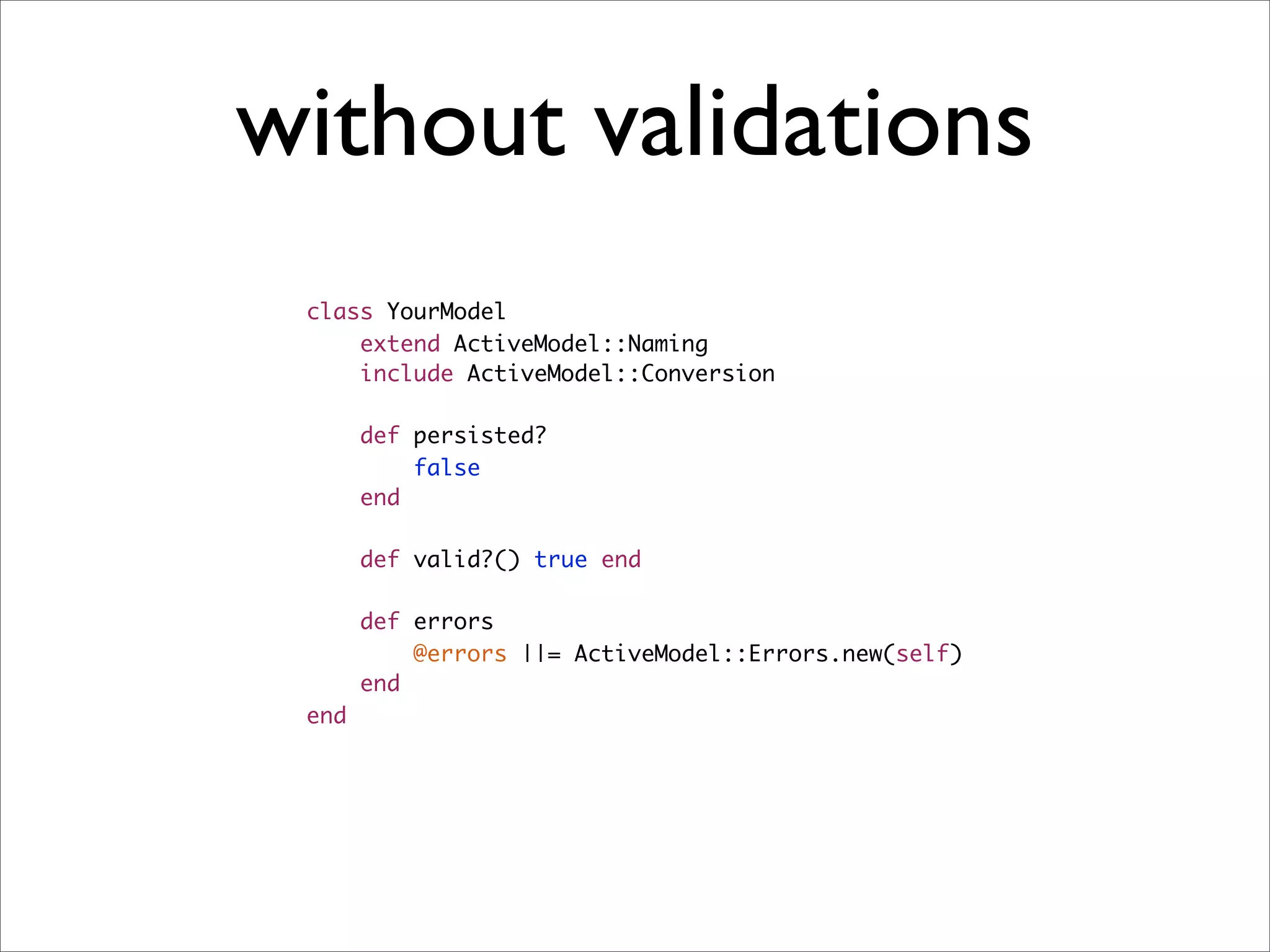
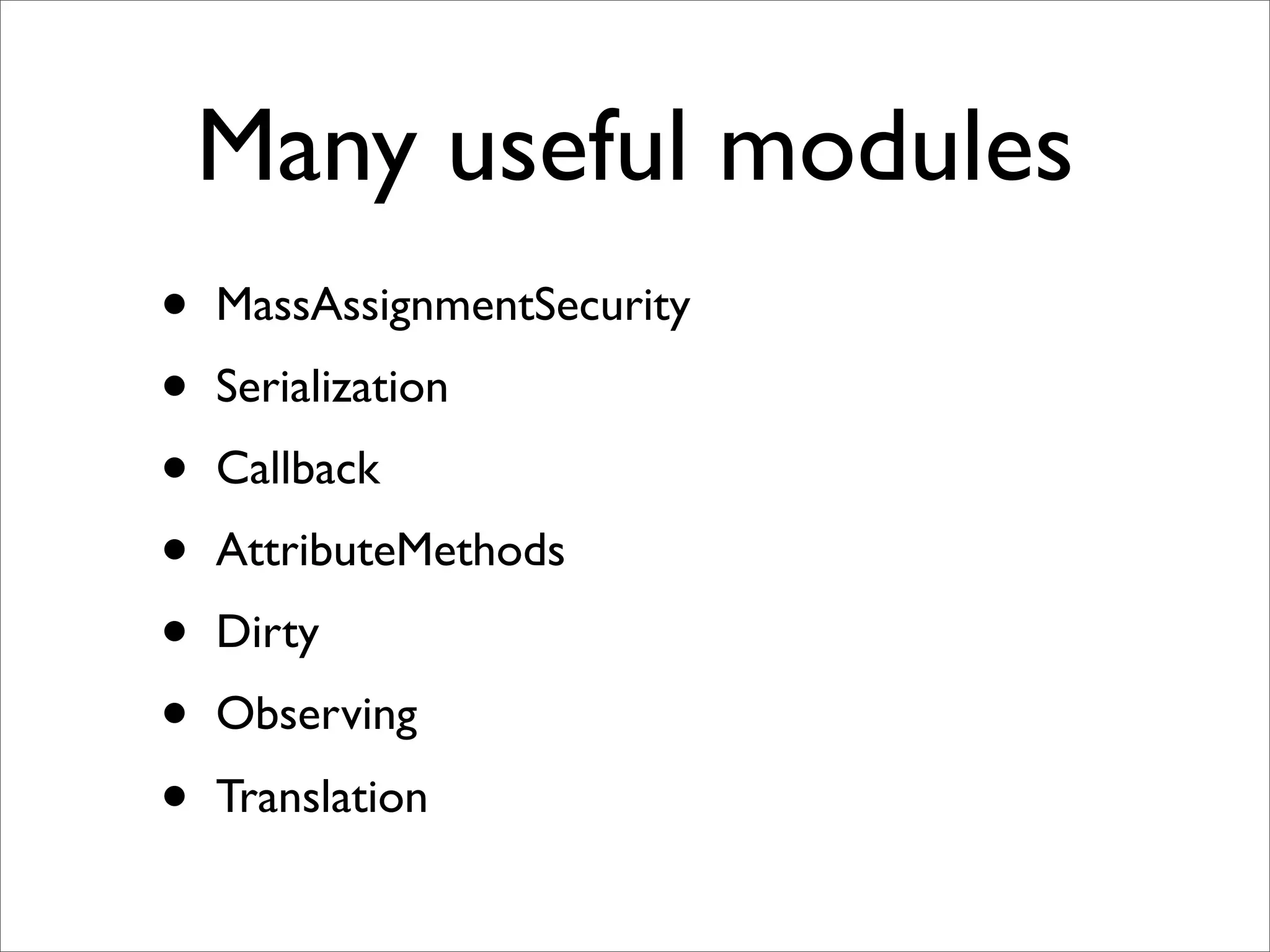
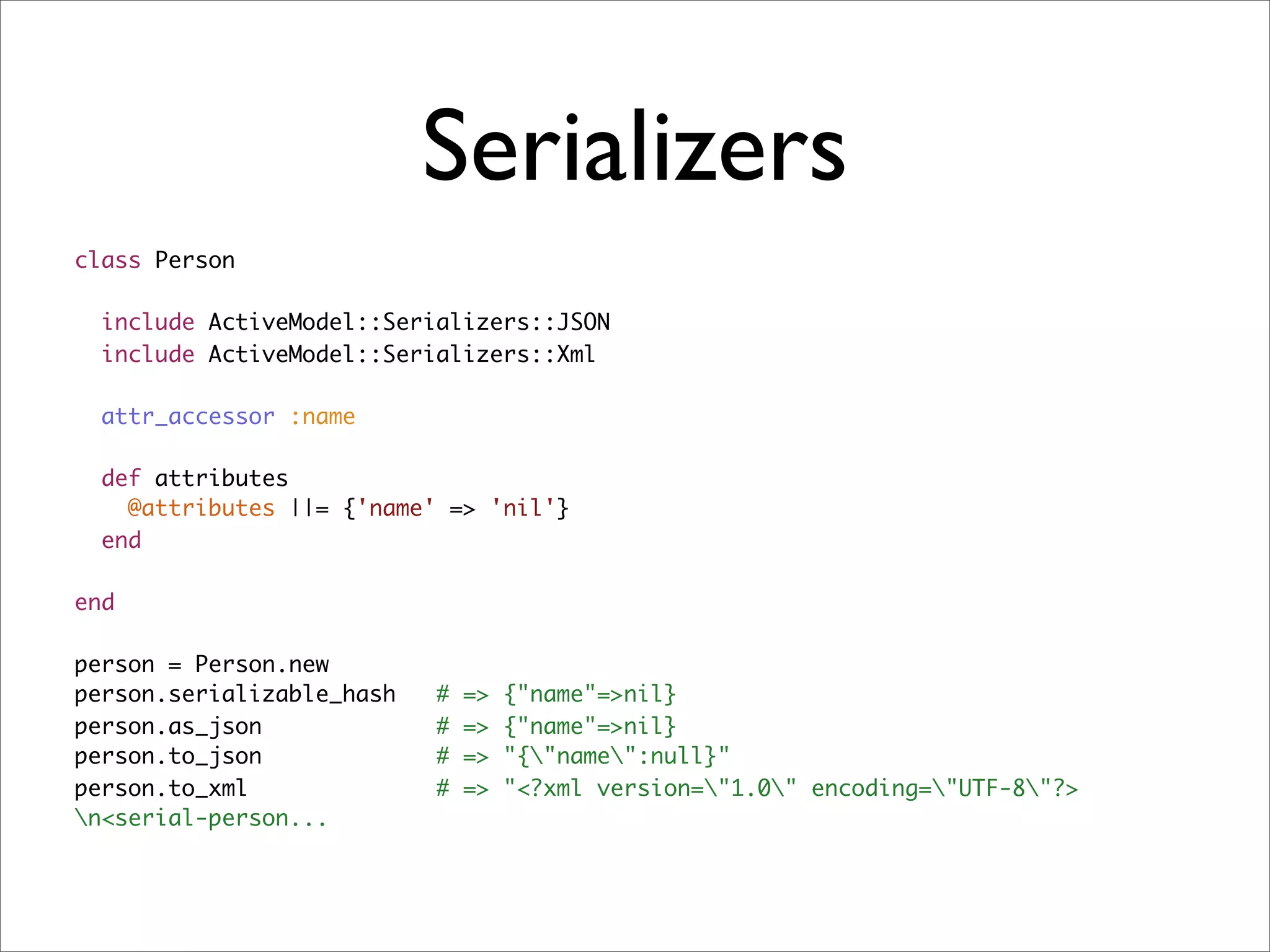
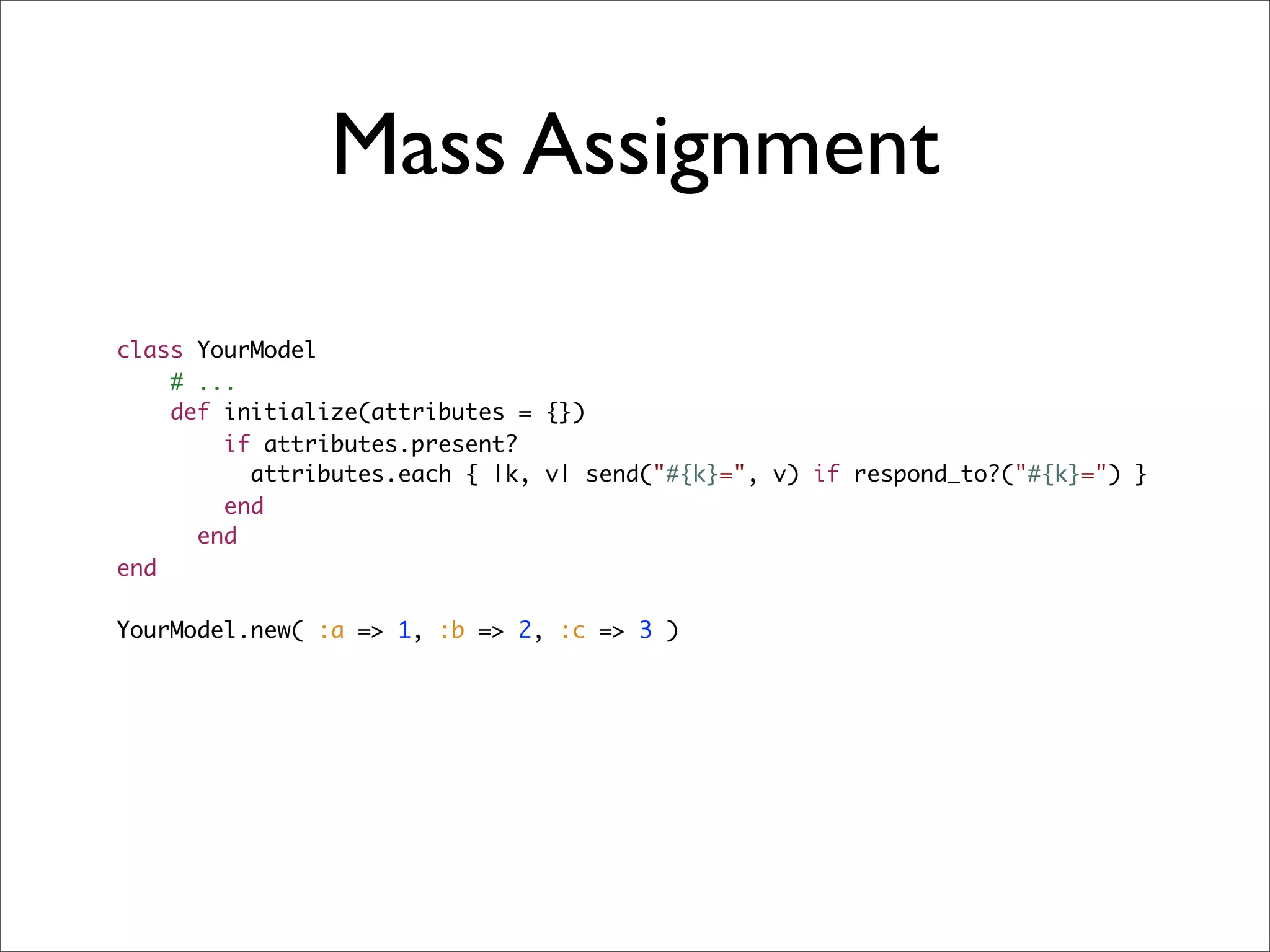
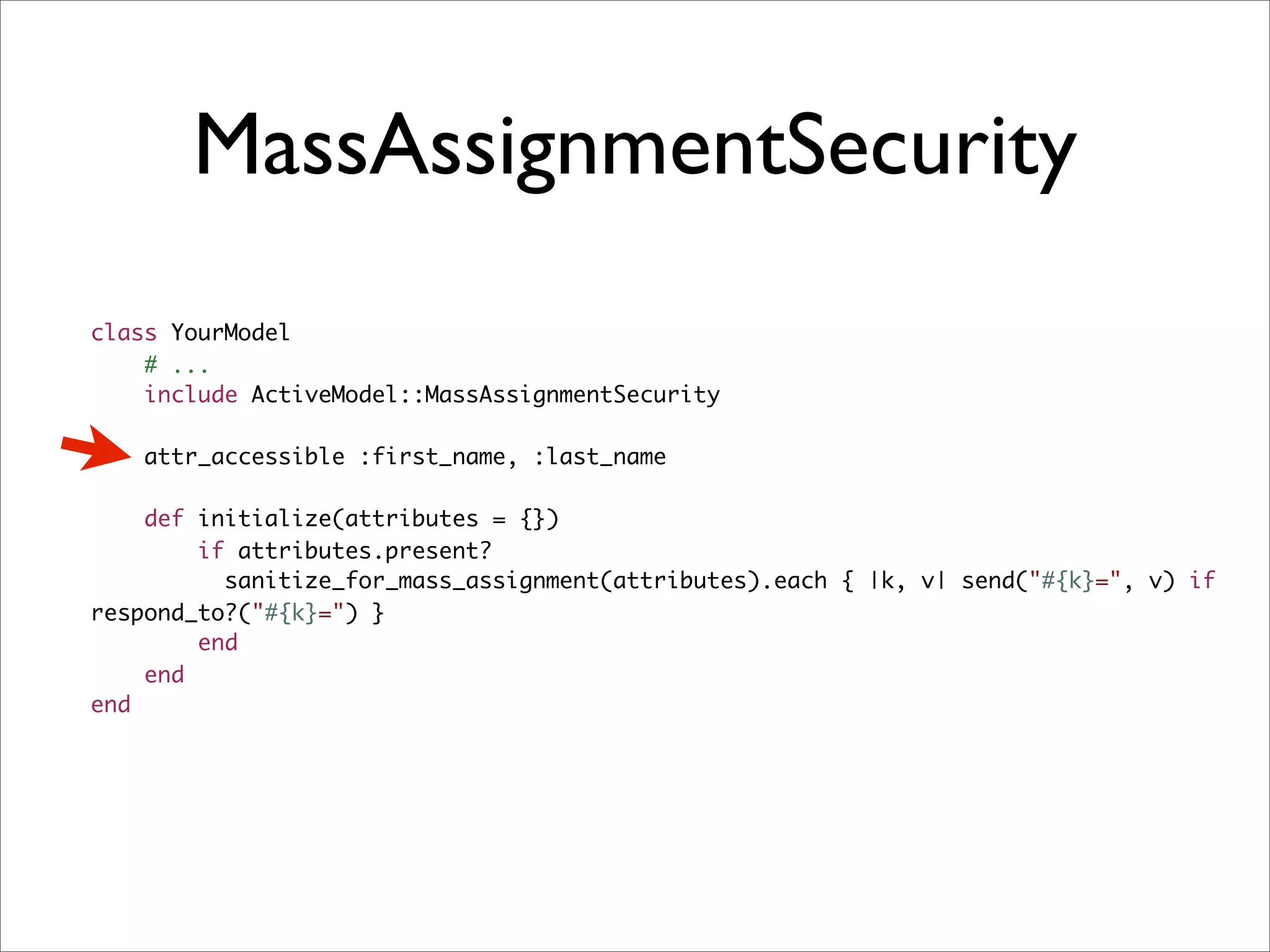
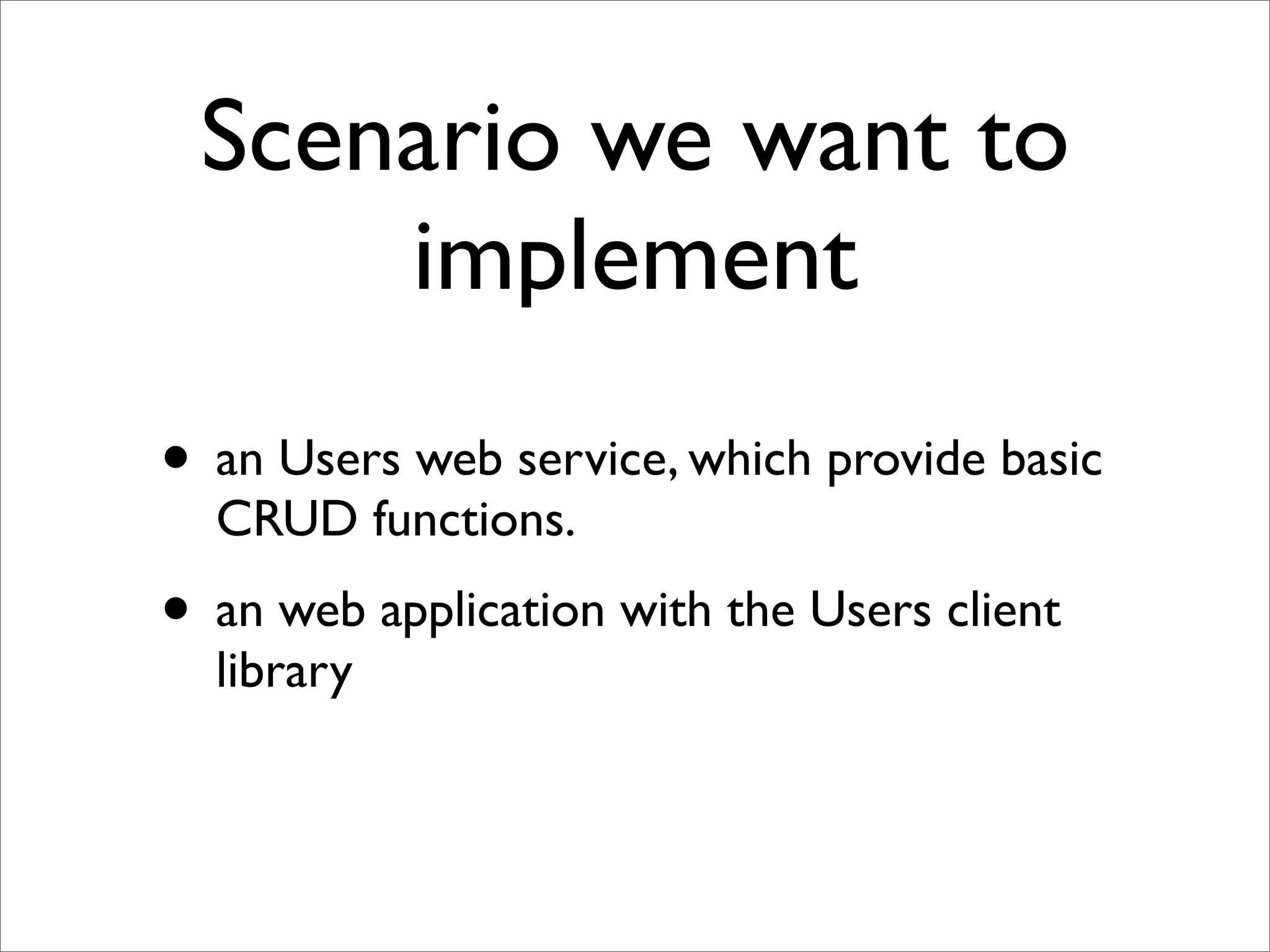

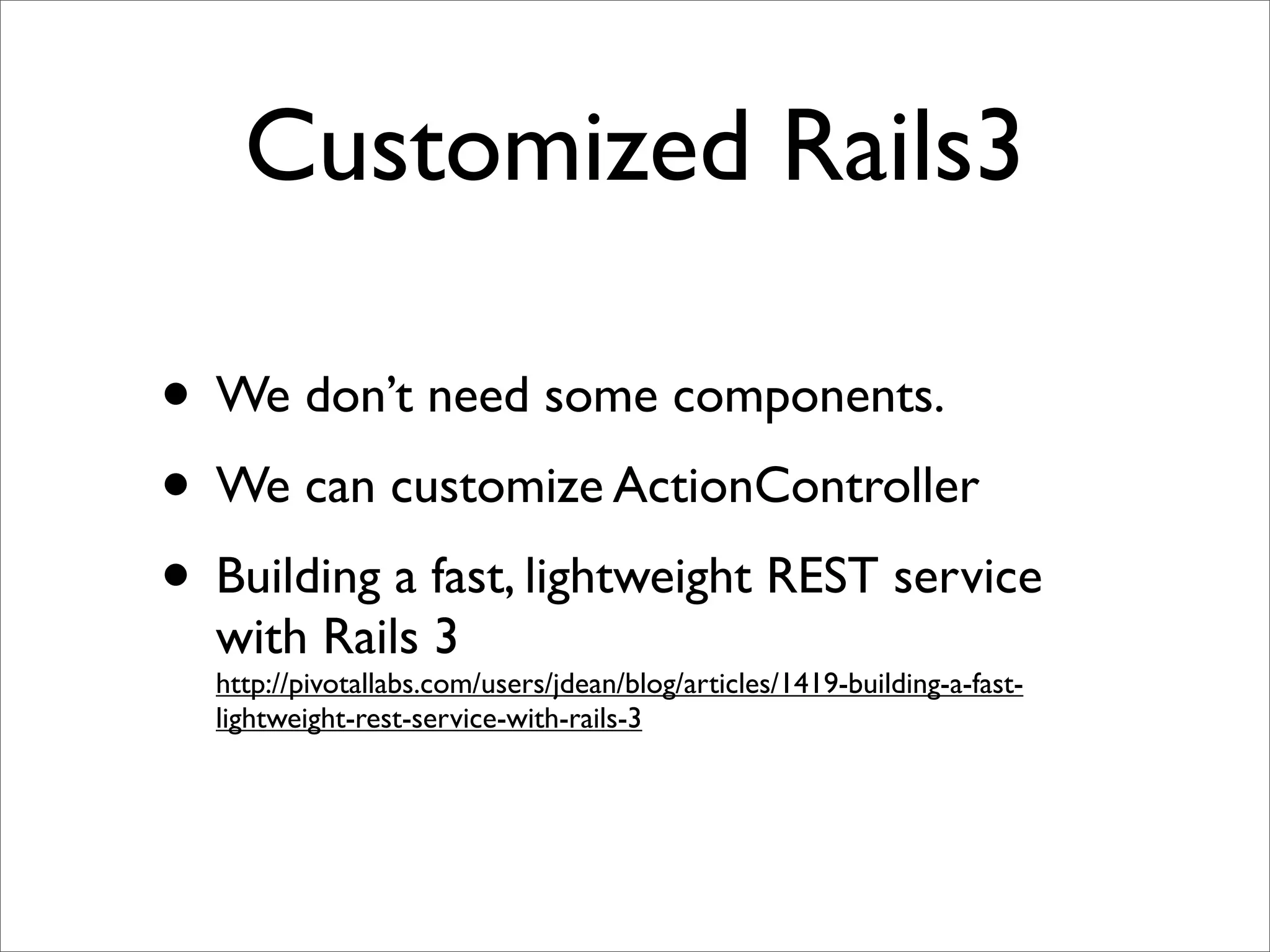
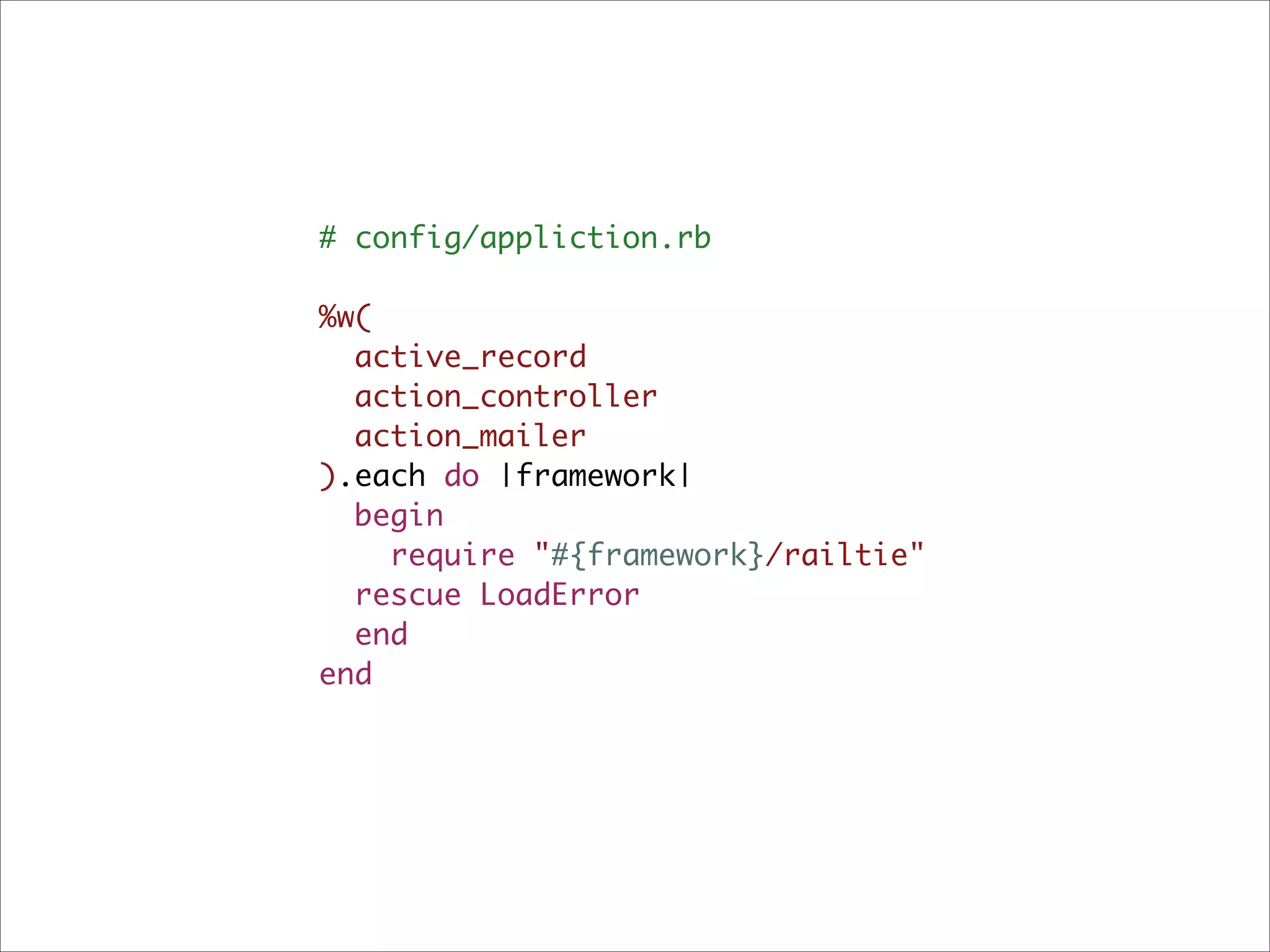
![# config/application.rb [ Rack::Sendfile, ActionDispatch::Flash, ActionDispatch::Session::CookieStore, ActionDispatch::Cookies, ActionDispatch::BestStandardsSupport, Rack::MethodOverride, ActionDispatch::ShowExceptions, ActionDispatch::Static, ActionDispatch::RemoteIp, ActionDispatch::ParamsParser, Rack::Lock, ActionDispatch::Head ].each do |klass| config.middleware.delete klass end # config/environments/production.rb config.middleware.delete ActiveRecord::ConnectionAdapters::ConnectionManagement](https://image.slidesharecdn.com/soa-with-rails3-101215195424-phpapp01/75/Service-Oriented-Design-and-Implement-with-Rails3-55-2048.jpg)
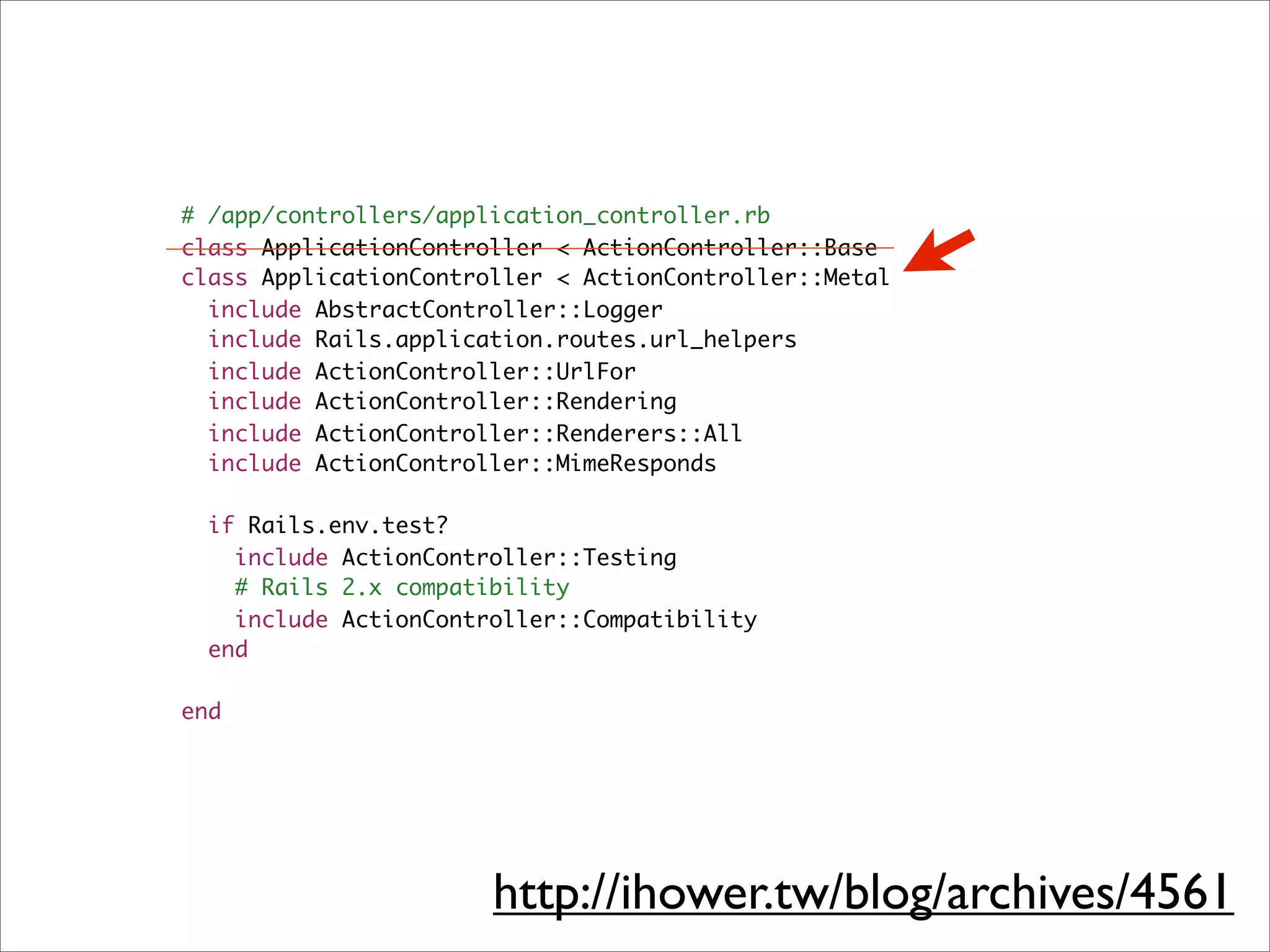
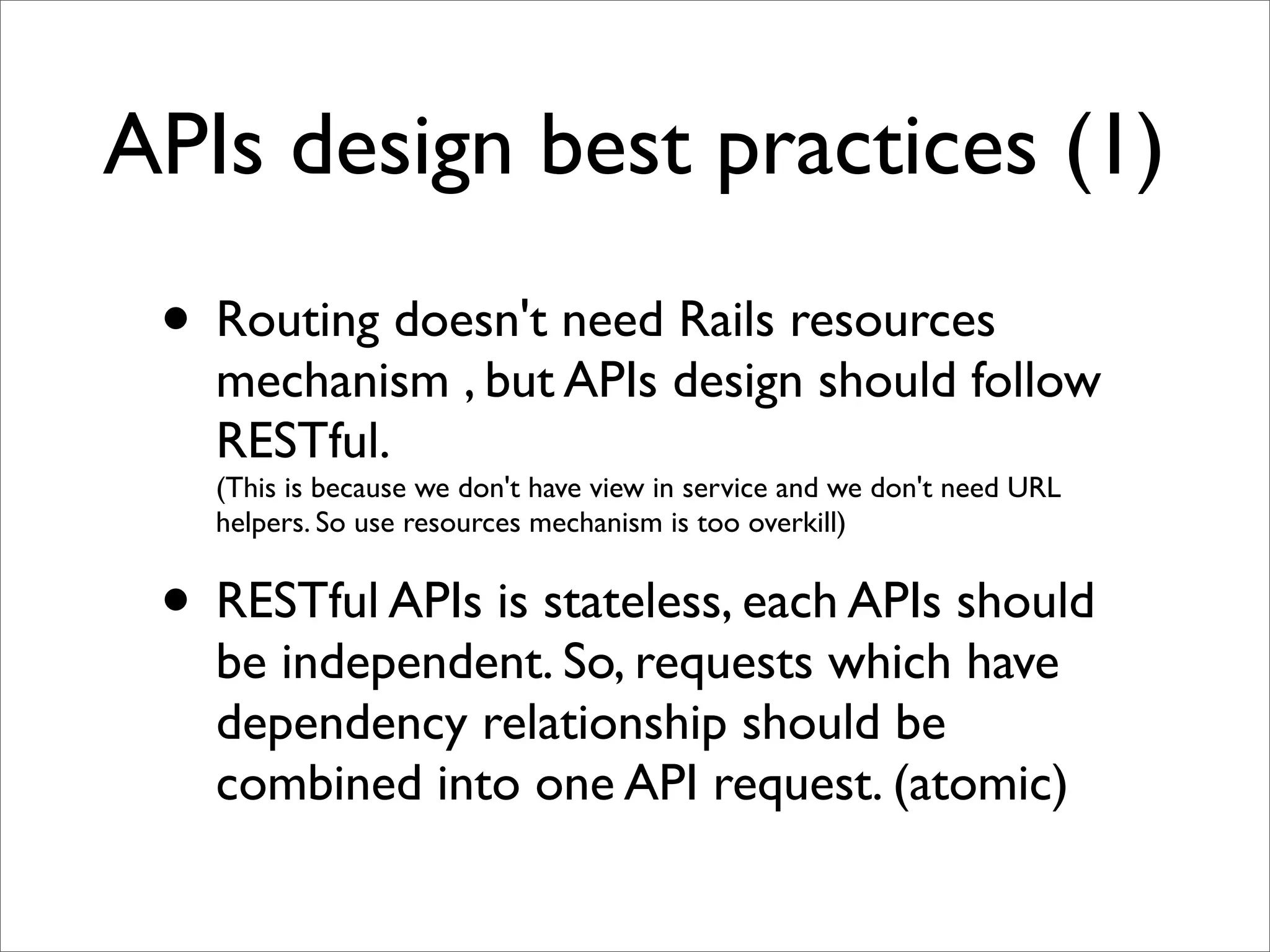

![APIs design best practices (3) • I suggest it shouldn't include_root_in_json # config/application.rb ActiveRecord::Base.include_root_in_json = false • Please notice “the key is JSON must be string”. whether you use symbol or string in Ruby, after JSON encode should all be string. • related key format should be xxx_id or xxx_ids for example: { "user_id" => 4, "product_ids" => [1,2,5] }.to_json • return user_uri field in addition to the user_id field if need](https://image.slidesharecdn.com/soa-with-rails3-101215195424-phpapp01/75/Service-Oriented-Design-and-Implement-with-Rails3-59-2048.jpg)
![a return data example model.to_json and model.to_xml is easy to use, but not useful in practice. # one record { :name => "a" }.to_json # collection { :collection => [ { :name => "a" } , { :name => "b" } ], :total => 123 }.to_json If you want to have pagination, you need total number.](https://image.slidesharecdn.com/soa-with-rails3-101215195424-phpapp01/75/Service-Oriented-Design-and-Implement-with-Rails3-60-2048.jpg)
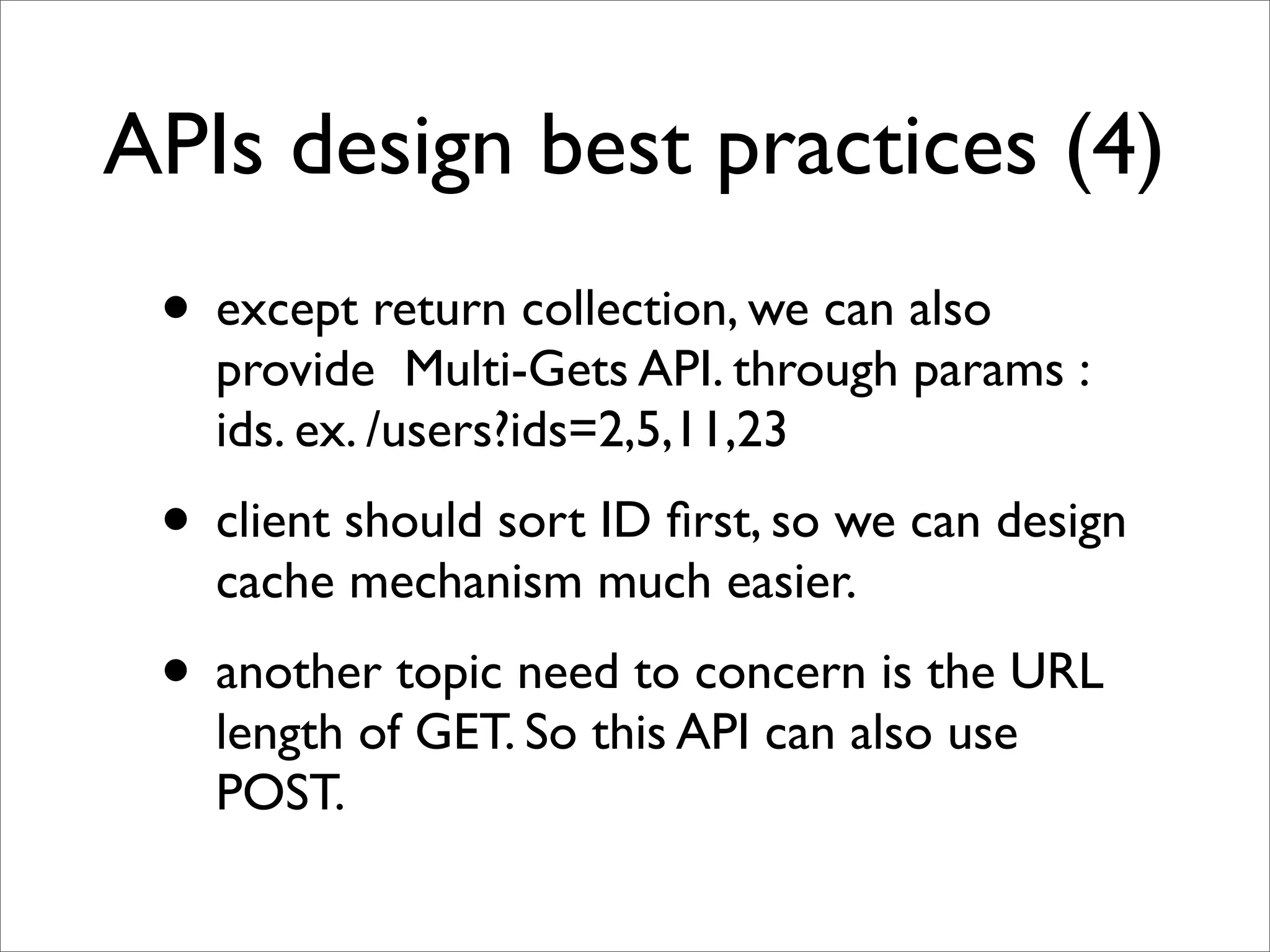
![an error message return example { :message => "faild", :error_codes => [1,2,3], :errors => ["k1" => "v1", "k2" => "v2" ] }.to_json](https://image.slidesharecdn.com/soa-with-rails3-101215195424-phpapp01/75/Service-Oriented-Design-and-Implement-with-Rails3-62-2048.jpg)
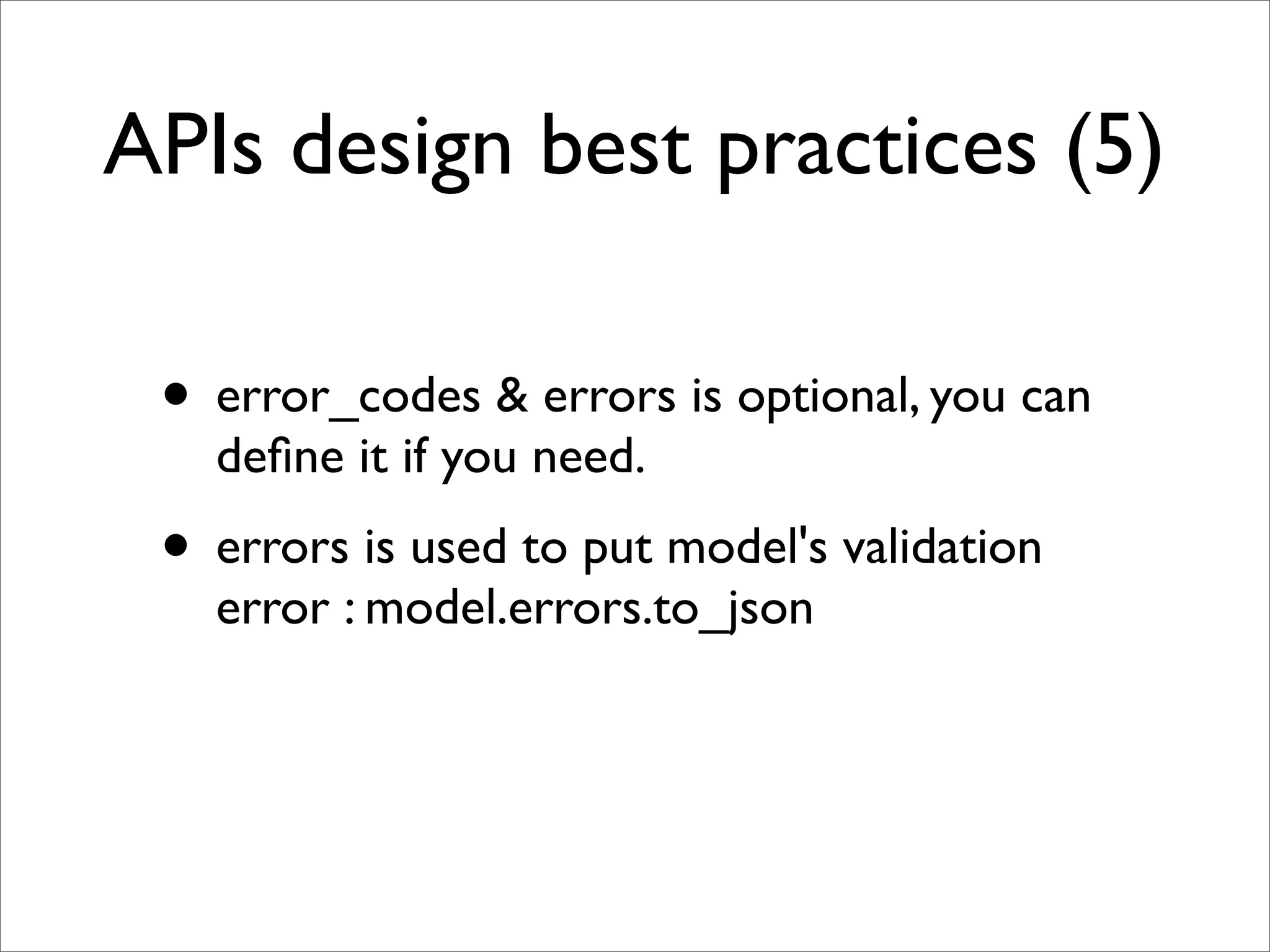
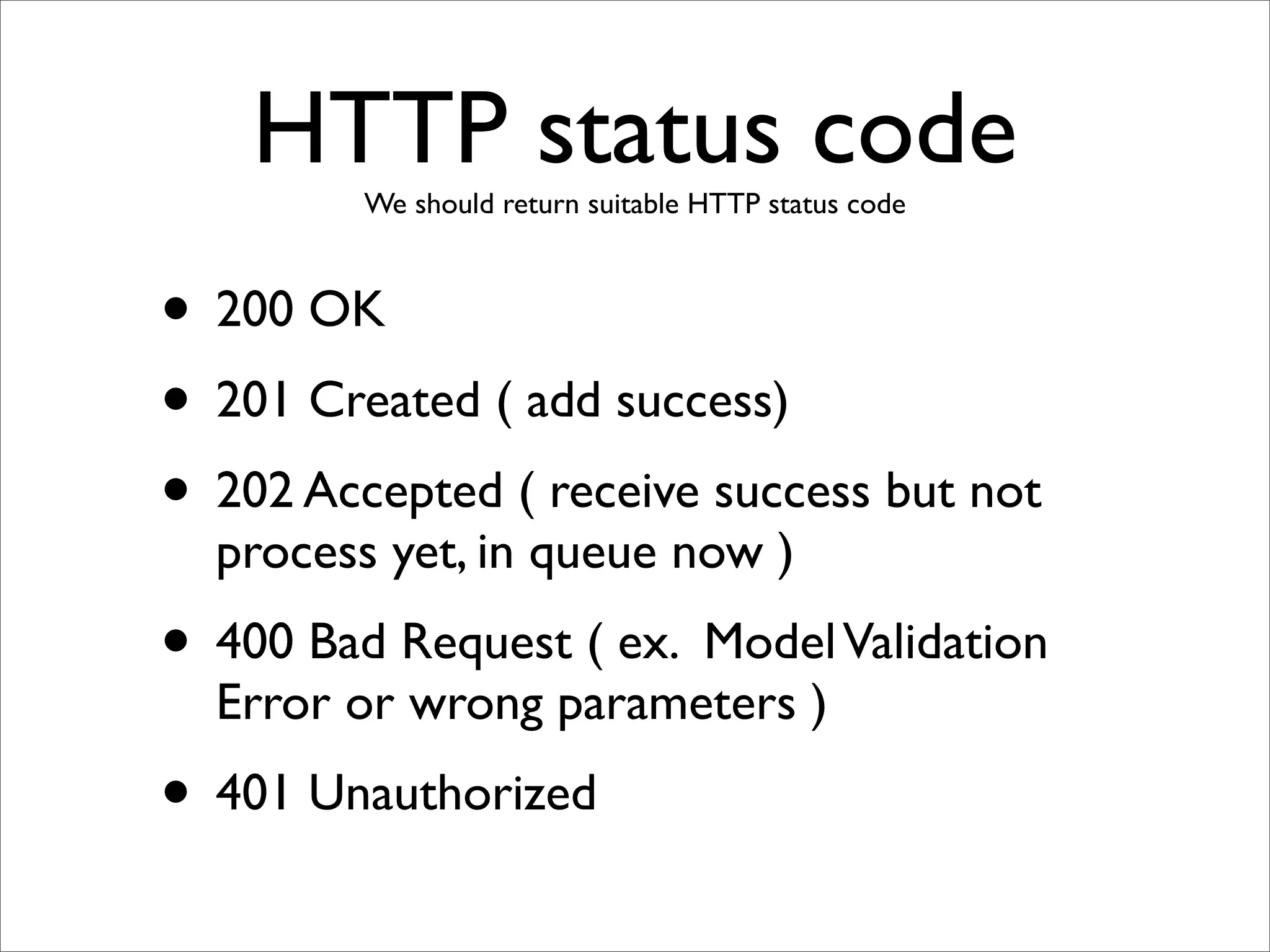
![class PeopleController < ApplicationController def index @people = Person.paginate(:per_page => params[:per_page] || 20, :page => params[:page]) render :json => { :collection => @people, :total => @people.total_entries }.to_json end def show @person = Person.find( params[:id] ) render :json => @person.to_json end def create @person = Person.new( :name => params[:name], :bio => params[:bio], :user_id => params[:user_id] ) @person.save! render :json => { :id => @person.id }.to_json, :status => 201 end def update @person = user_Person.find( params[:id] ) @person.attributes = { :name => params[:name], :bio => params[:bio], :user_id => params[:user_id] } @person.save! render :status => 200, :text => "OK" end def destroy @person = Person.find( params[:id] ) @person.destroy render :status => 200, :text => "OK" end end](https://image.slidesharecdn.com/soa-with-rails3-101215195424-phpapp01/75/Service-Oriented-Design-and-Implement-with-Rails3-65-2048.jpg)

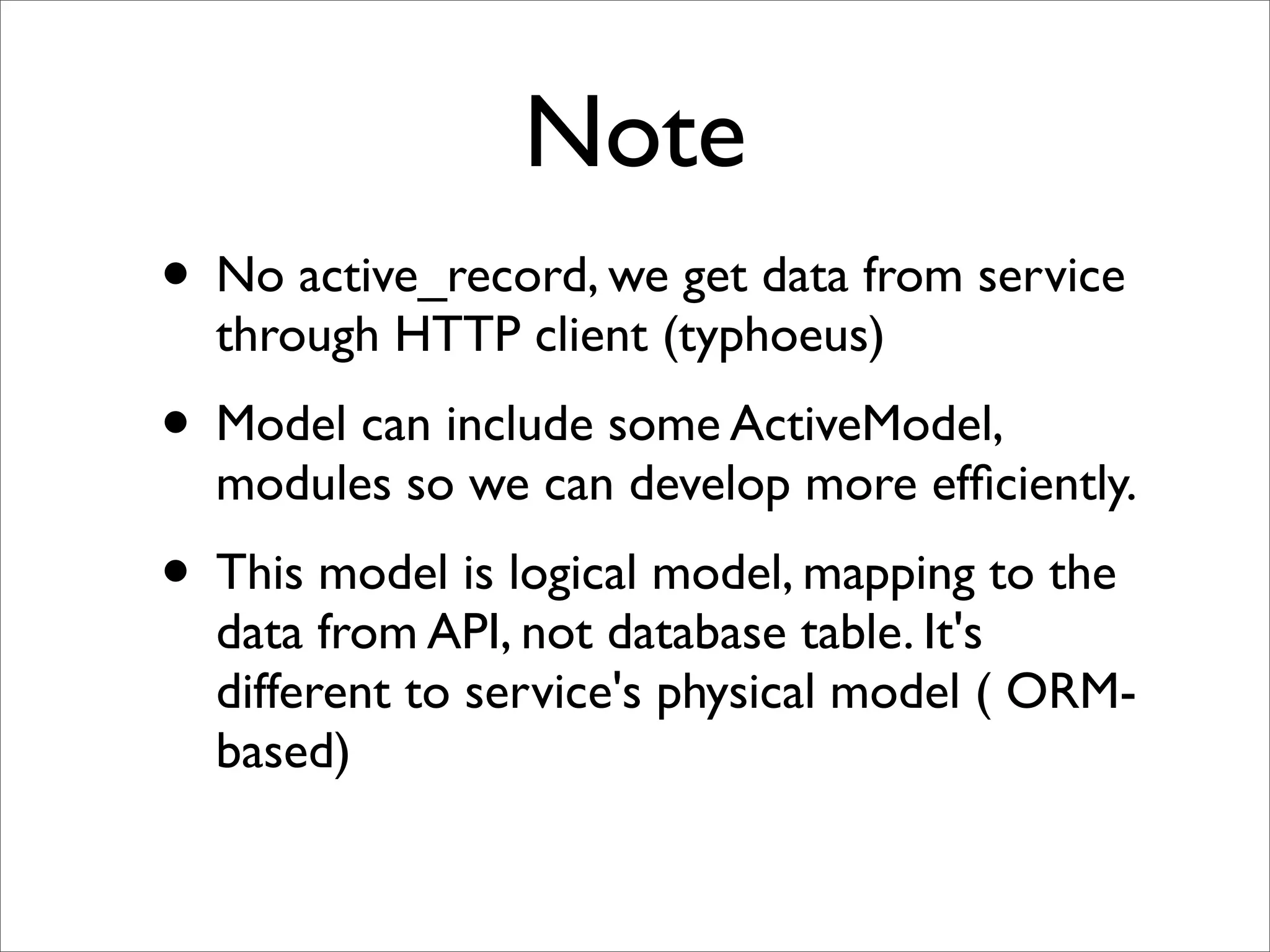
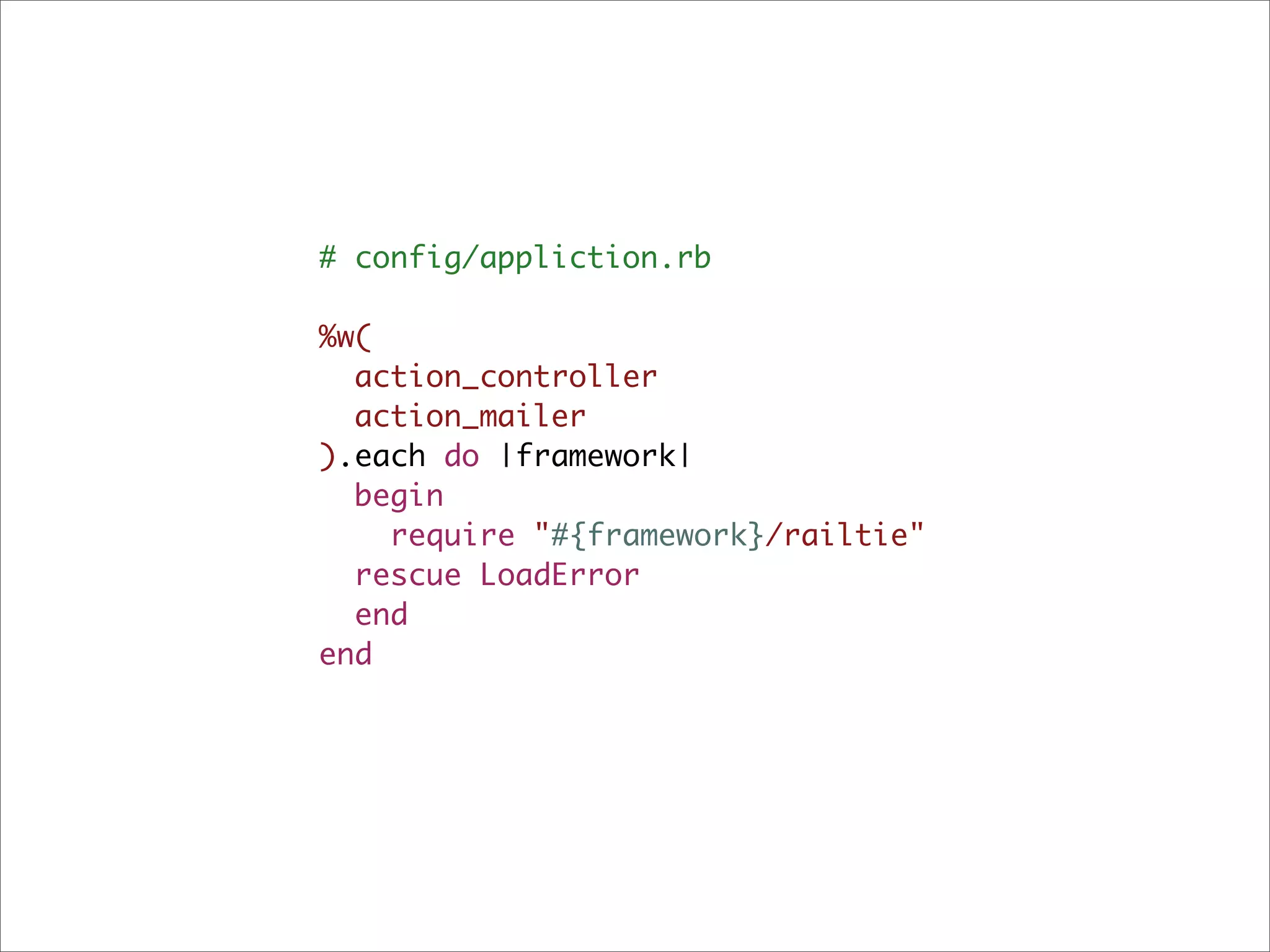

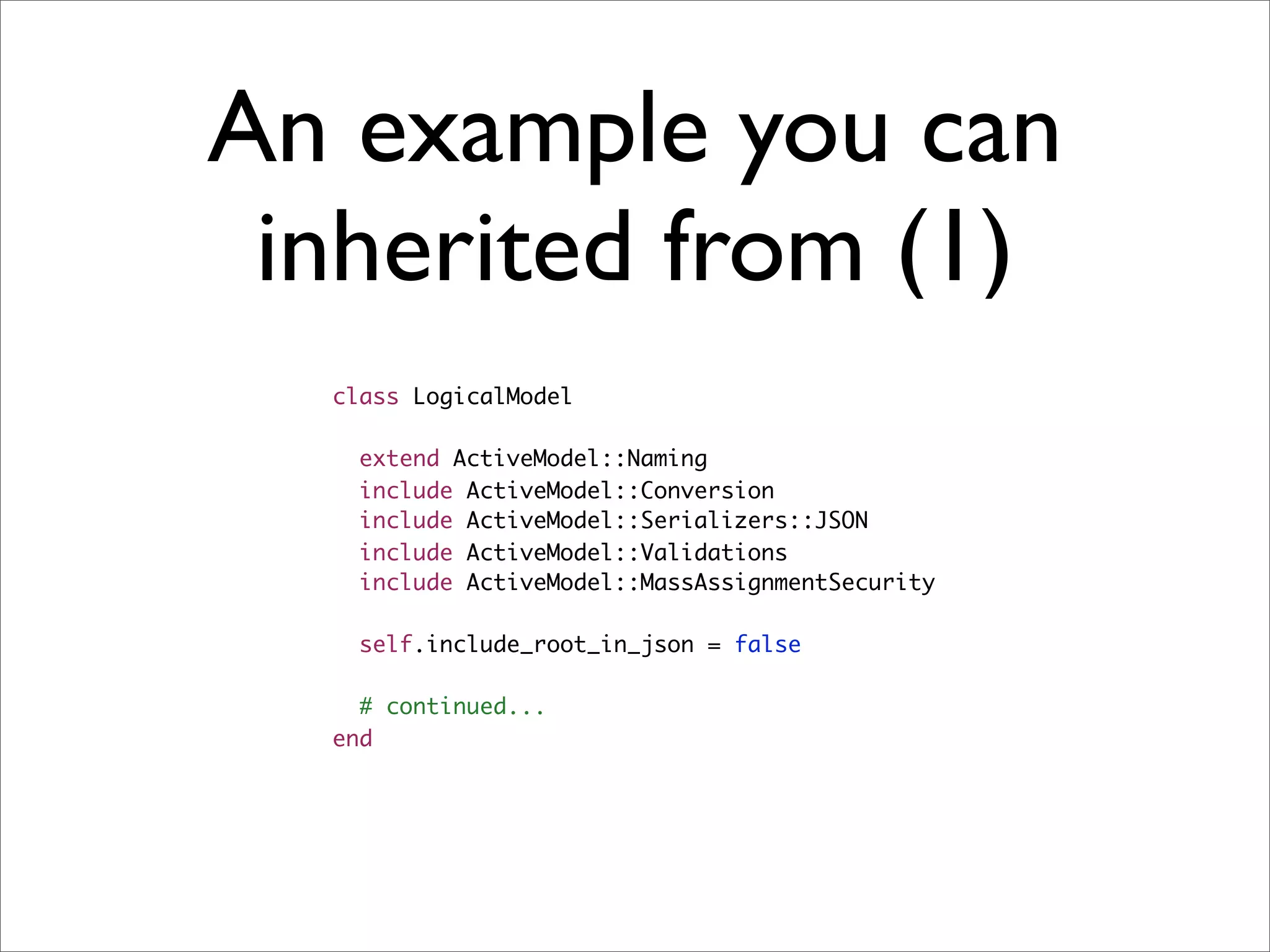
![class LogicalModel An example you can # continued... inherited from (2) def self.attribute_keys=(keys) @attribute_keys = keys attr_accessor *keys end def self.attribute_keys @attribute_keys end class << self attr_accessor :host, :hydra end def persisted? !!self.id end def initialize(attributes={}) self.attributes = attributes end def attributes self.class.attribute_keys.inject(ActiveSupport::HashWithIndifferentAccess.new) do |result, key| result[key] = read_attribute_for_validation(key) result end end def attributes=(attrs) sanitize_for_mass_assignment(attrs).each { |k, v| send("#{k}=", v) if respond_to?("#{k}=") } end](https://image.slidesharecdn.com/soa-with-rails3-101215195424-phpapp01/75/Service-Oriented-Design-and-Implement-with-Rails3-71-2048.jpg)
![Model usage example class Person < LogicalModel self.attribute_keys = [:id, :name, :bio, :user_id, :created_at, :updated_at] self.host = PEOPLE_SERVICE_HOST self.hydra = HYDRA validates_presence_of :title, :url, :user_id # ... end](https://image.slidesharecdn.com/soa-with-rails3-101215195424-phpapp01/75/Service-Oriented-Design-and-Implement-with-Rails3-72-2048.jpg)
![class Person < LogicalModel # ... paginate def self.people_uri "http://#{self.host}/apis/v1/people.json" end def self.async_paginate(options={}) options[:page] ||= 1 options[:per_page] ||= 20 request = Typhoeus::Request.new(people_uri, :params => options) request.on_complete do |response| if response.code >= 200 && response.code < 400 log_ok(response) result_set = self.from_json(response.body) collection = result_set[:collection].paginate( :total_entries => result_set[:total] ) collection.current_page = options[:page] yield collection else log_failed(response) end end self.hydra.queue(request) end def self.paginate(options={}) result = nil async_paginate(options) { |i| result = i } self.hydra.run result end end](https://image.slidesharecdn.com/soa-with-rails3-101215195424-phpapp01/75/Service-Oriented-Design-and-Implement-with-Rails3-73-2048.jpg)
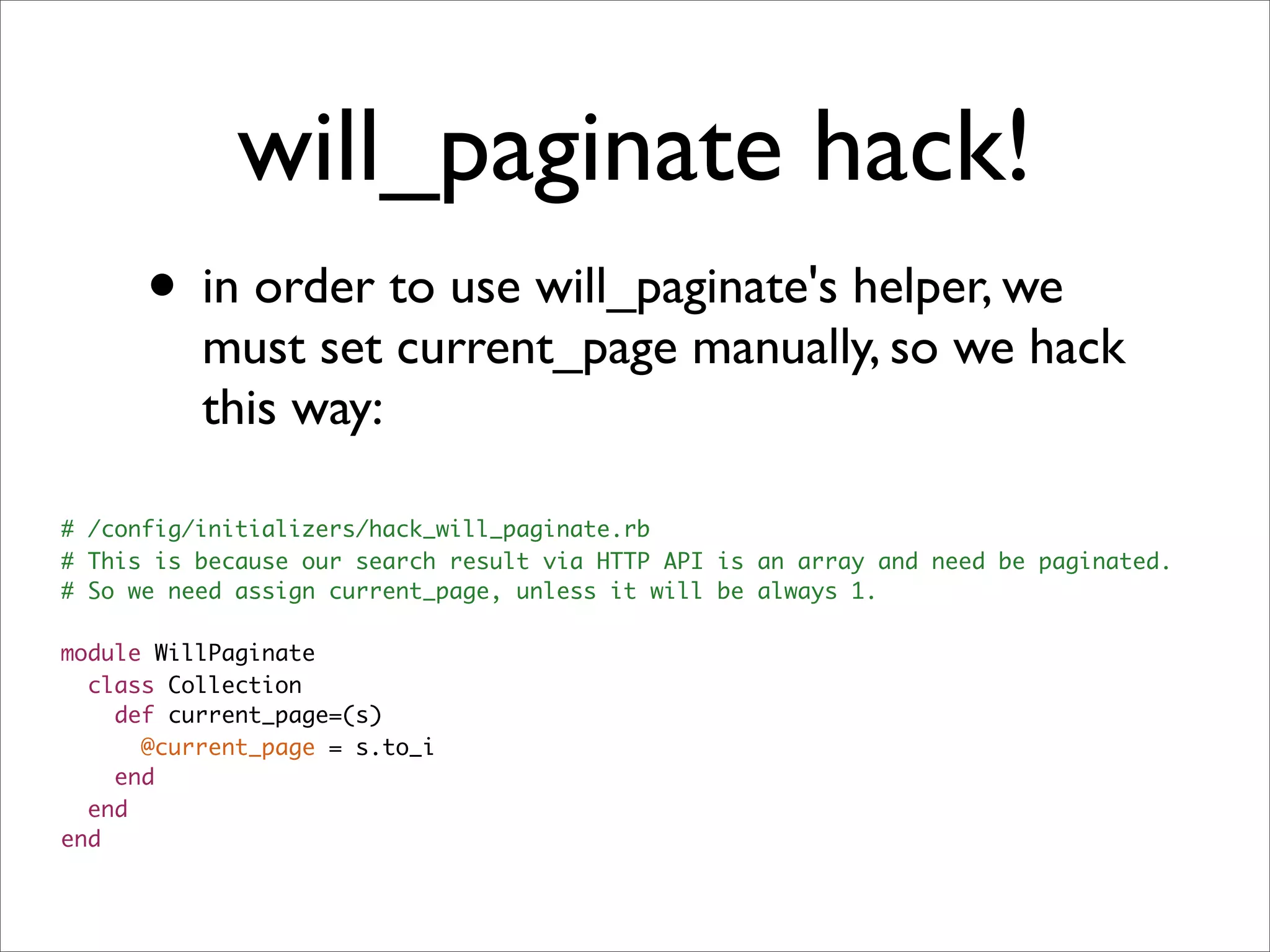
![from_json & logging class LogicalModel # ... def self.from_json(json_string) parsed = ActiveSupport::JSON.decode(json_string) collection = parsed["collection"].map { |i| self.new(i) } return { :collection => collection, :total => parsed["total"].to_i } end def self.log_ok(response) Rails.logger.info("#{response.code} #{response.request.url} in #{response.time}s") end def self.log_failed(response) msg = "#{response.code} #{response.request.url} in #{response.time}s FAILED: #{ActiveSupport::JSON.decode (response.body)["message"]}" Rails.logger.warn(msg) end def log_ok(response) self.class.log_ok(response) end def log_failed(response) self.class.log_failed(response) end end](https://image.slidesharecdn.com/soa-with-rails3-101215195424-phpapp01/75/Service-Oriented-Design-and-Implement-with-Rails3-75-2048.jpg)
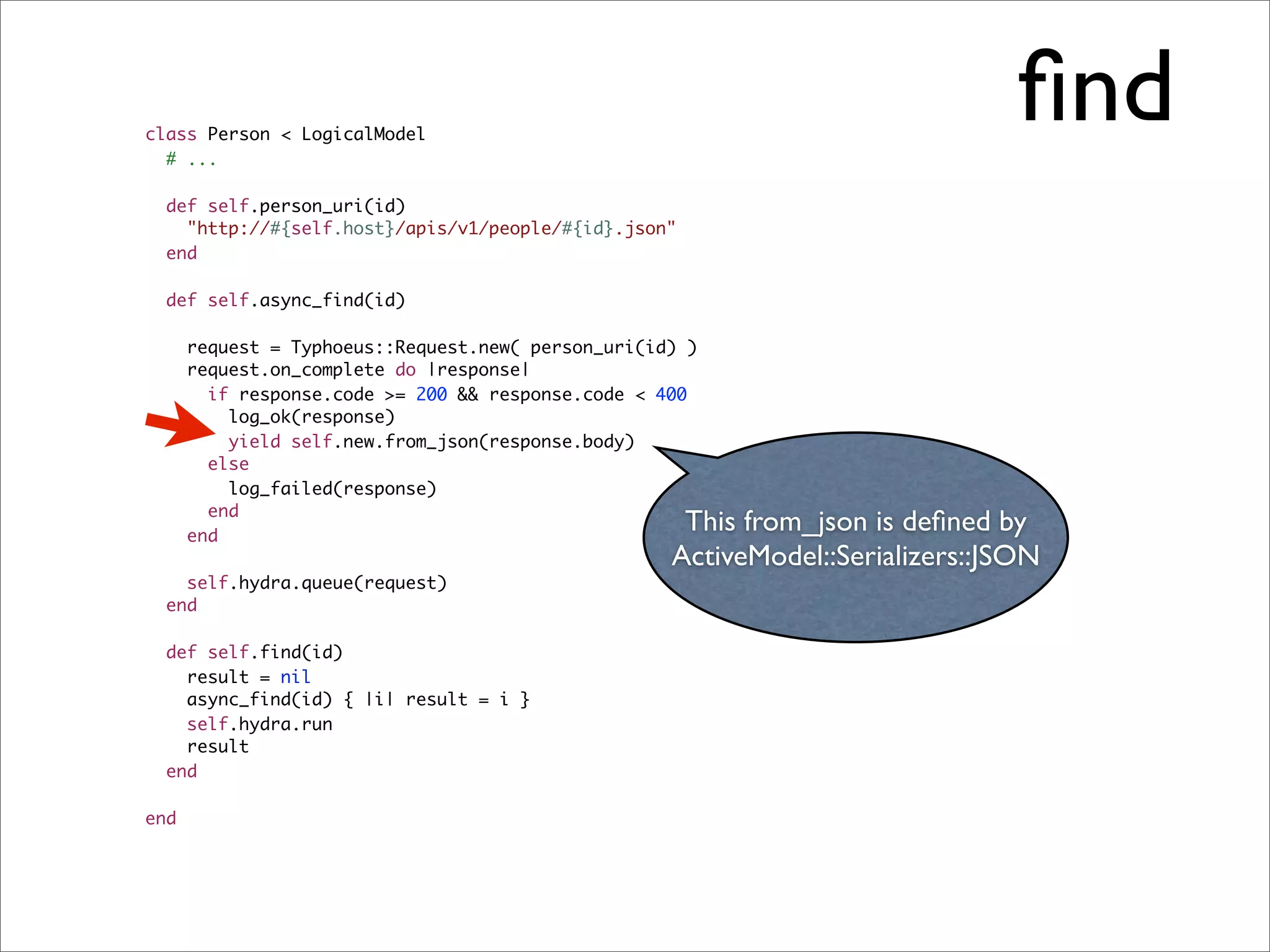
![class Person < LogicalModel create&update # ... def create return false unless valid? response = Typhoeus::Request.post( self.class.people_uri, :params => self.attributes ) if response.code == 201 log_ok(response) self.id = ActiveSupport::JSON.decode(response.body)["id"] return self else log_failed(response) return nil end end def update(attributes) self.attributes = attributes return false unless valid? response = Typhoeus::Request.put( self.class.person_uri(id), :params => self.attributes ) if response.code == 200 log_ok(response) return self else log_failed(response) Normally data writes do not return nil need to occur in parallel end end end Or write to a messaging system asynchronously](https://image.slidesharecdn.com/soa-with-rails3-101215195424-phpapp01/75/Service-Oriented-Design-and-Implement-with-Rails3-77-2048.jpg)

